
- Virginia Beach
- History & facts
- Famous people
- Famous landmarks
- AI interviews
- Science & Nature
- Tech & Business

Discover something new everyday
Famous places
- Food & Drinks
- Tech & Business
Famous places , Travel
Brazil’s Top 30 Tourist Attractions: Discovering the Wonders of South America

Rafael Rabello de Barros , CC BY-SA 3.0 , via Wikimedia Commons
Read Next →
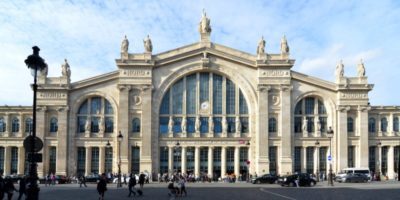
Things to do Near Gare du Nord Station
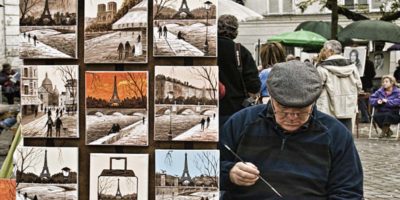
Paris - Our top 10 lists
Top 45 souvenirs to bring back from Paris

28 things you probably didn’t know about Sacre-Coeur basilica in Paris
1. christ the redeemer (cristo redentor).

Nico Kaiser , CC BY 2.0 , via Wikimedia Commons
2. Sugarloaf Mountain (Pão de Açúcar)
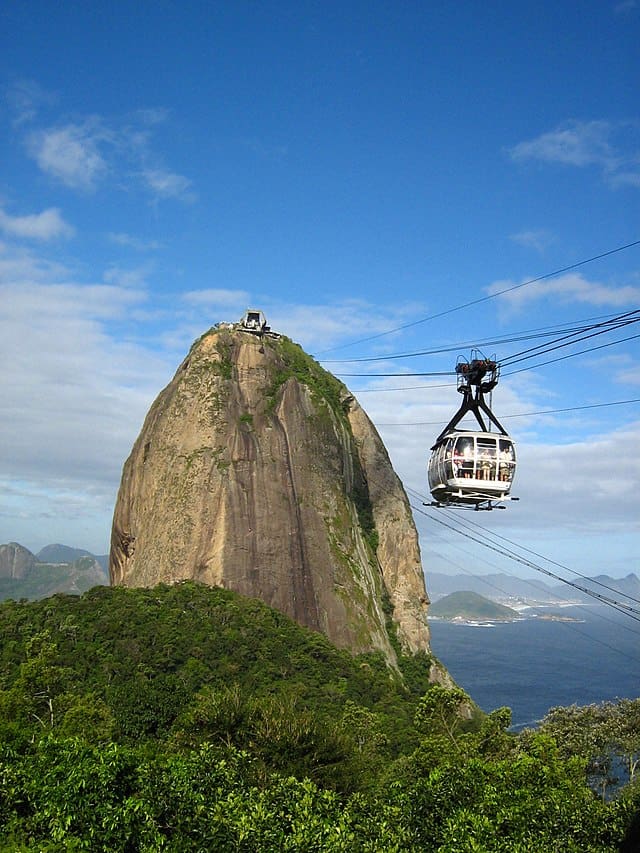
Wutzofant. , CC BY-SA 3.0 , via Wikimedia Commons
3. Iguazu Falls (Cataratas do Iguaçu)
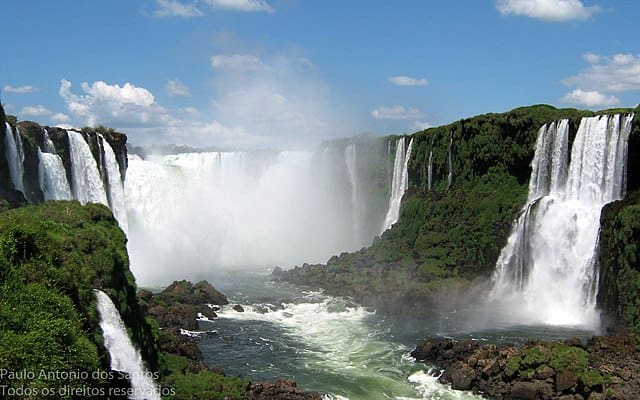
Paulo Antonio Santos , CC BY 3.0 , via Wikimedia Commons
4. Amazon Rainforest
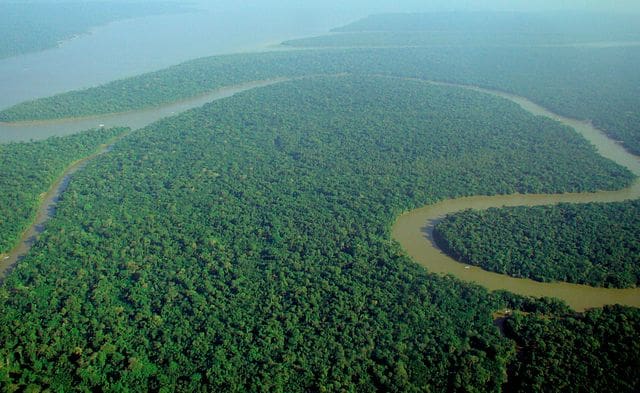
lubasi , CC BY-SA 2.0 , via Wikimedia Commons
5. Pantanal
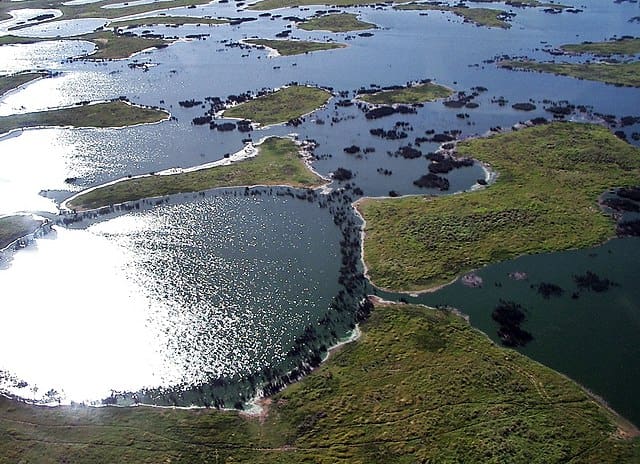
Alicia Yo at the English-language Wikipedia , CC BY-SA 3.0 , via Wikimedia Commons
6. Salvador
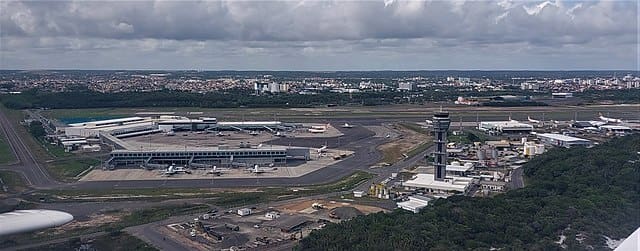
PT-AVJ , CC BY-SA 4.0 , via Wikimedia Commons
7. Fernando de Noronha
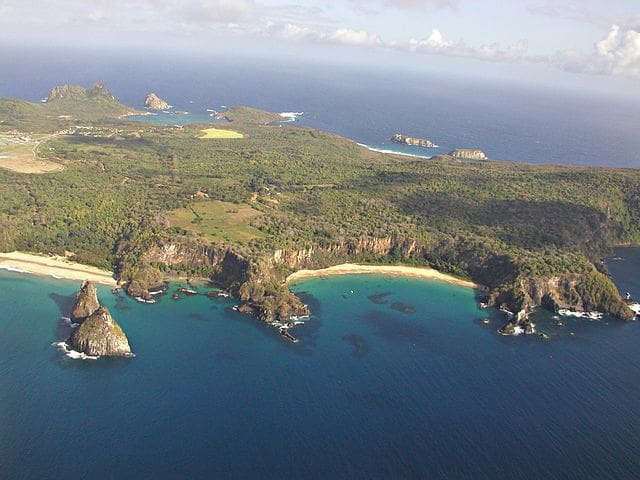
https://upload. wikimedia .org/wikipedia/commons/6/6b/Fernando_de_Noronha_-_dois_Irm%C3%A3os_-_praia_do_sancho.jpg
8. Brasília
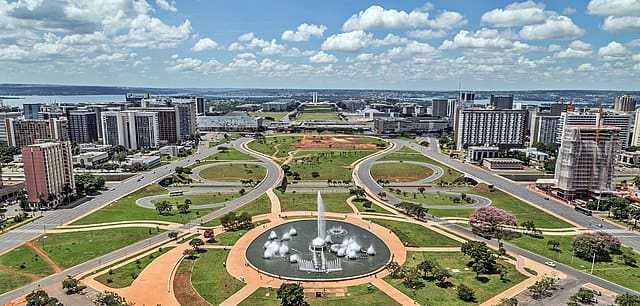
Arturdiasr , CC BY-SA 4.0 , via Wikimedia Commons
9. São Paulo
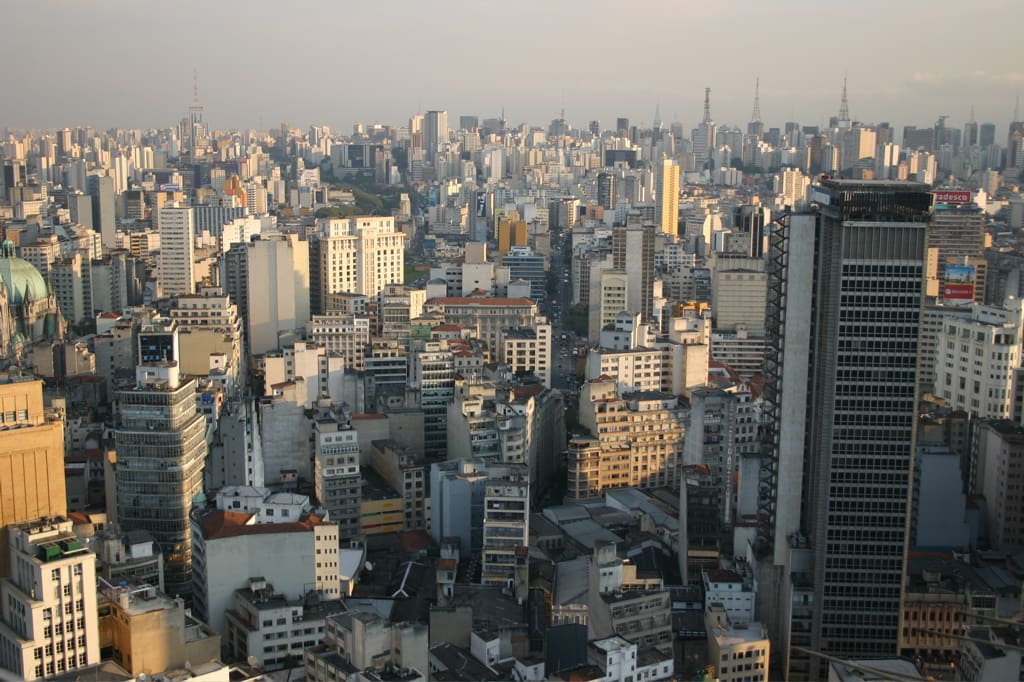
Thomas Hobbs , CC BY-SA 2.0 , via Wikimedia Commons
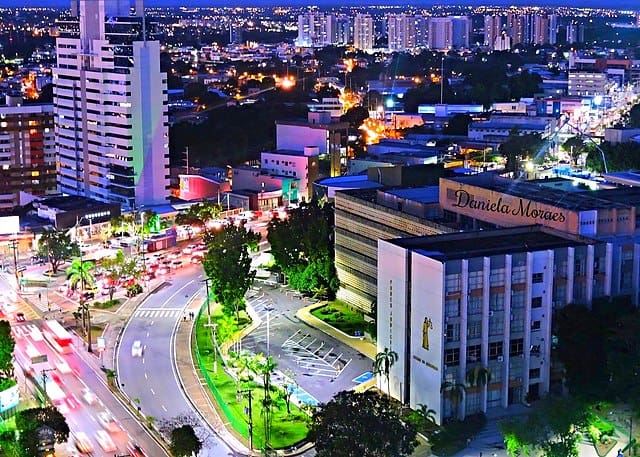
Daniela de Oliveira Moraes , CC BY 2.0 , via Wikimedia Commons
11. Ouro Preto
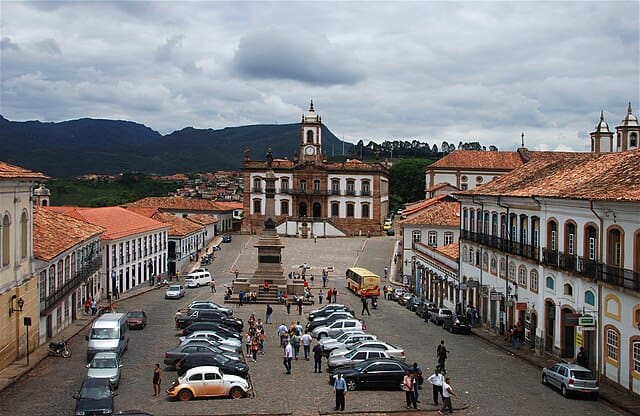
Alvesgaspar , CC BY-SA 3.0 , via Wikimedia Commons
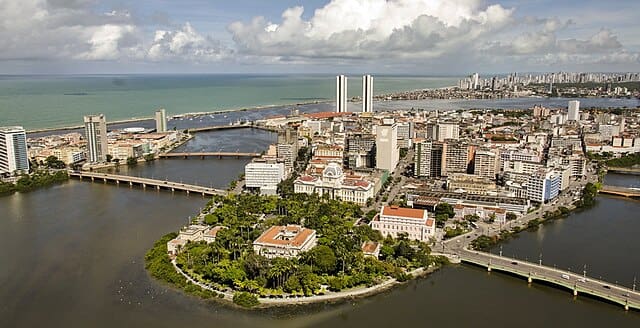
Portal da Copa/ME , CC BY 3.0 BR , via Wikimedia Commons
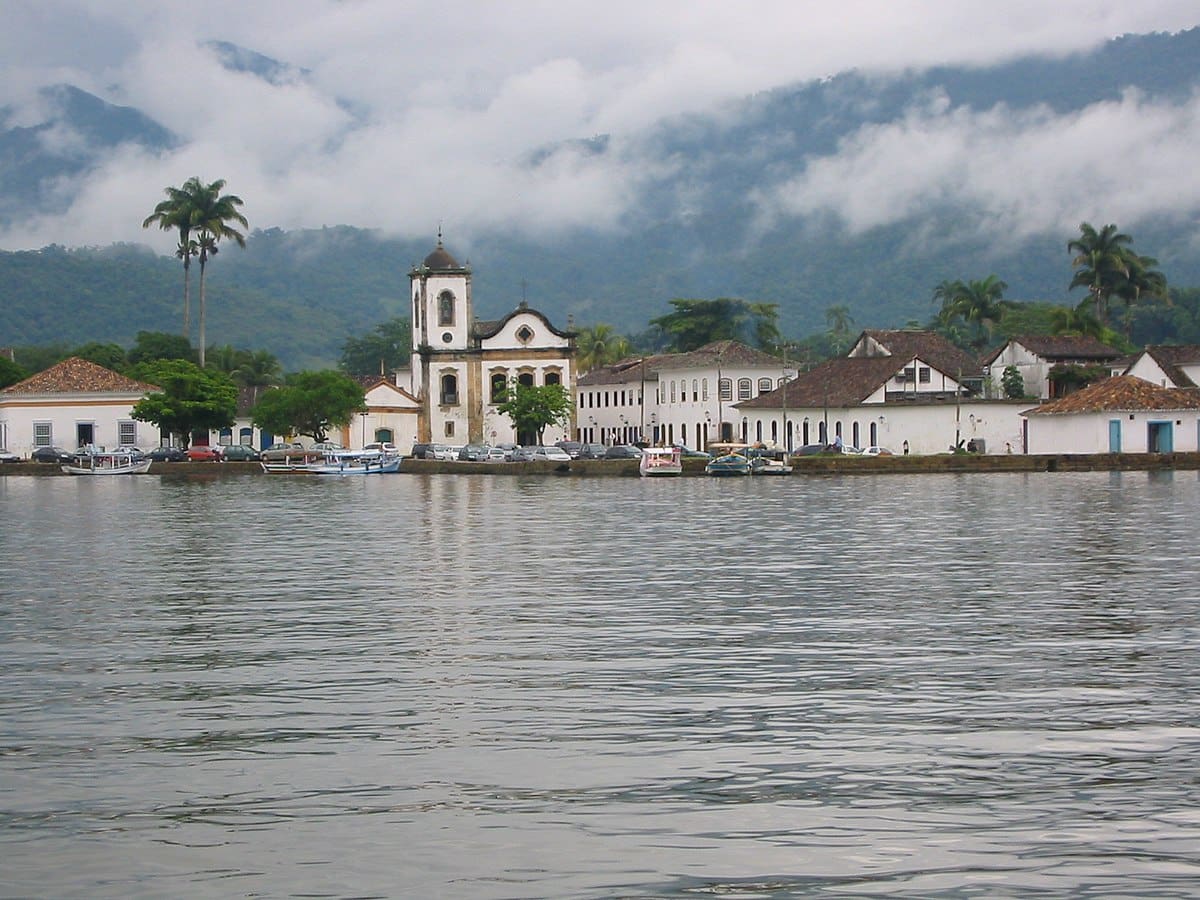
Lampiao3 , Public domain, via Wikimedia Commons
14. Chapada dos Veadeiros
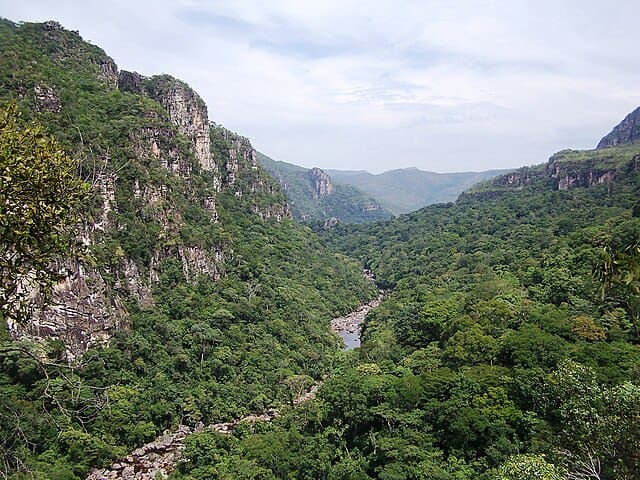
Marina Campos Vinhal , CC BY 2.0 , via Wikimedia Commons
15. Lençóis Maranhenses National Park

Julius Dadalti , CC BY-SA 4.0 , via Wikimedia Commons
16. São Miguel das Missões
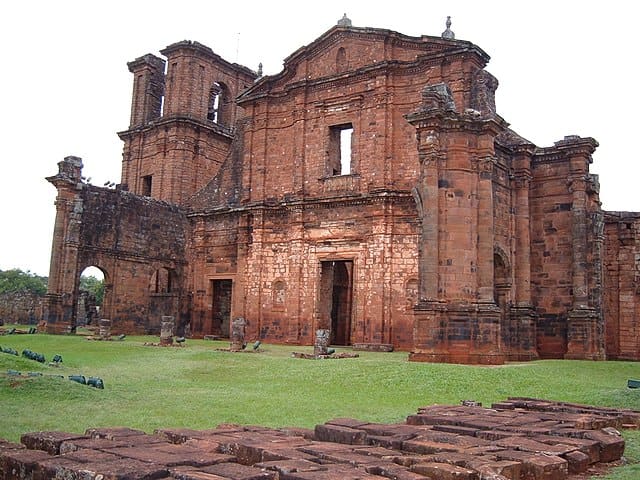
JefersonSouza , CC BY-SA 4.0 , via Wikimedia Commons
17. Ilha Grande
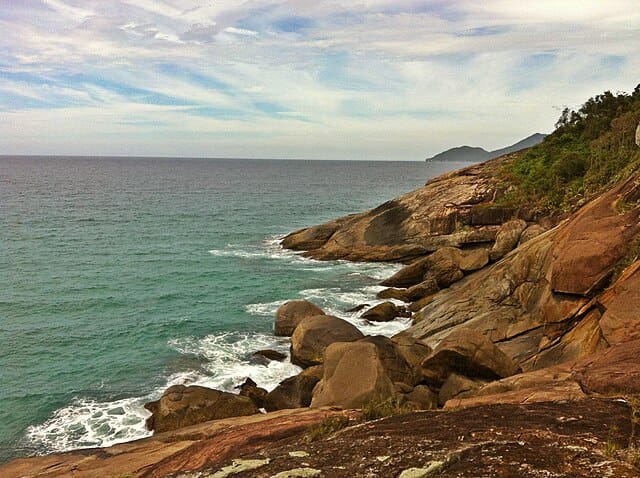
TMbux , CC BY-SA 3.0 , via Wikimedia Commons
18. Petrópolis

PU1JFC , CC BY-SA 4.0 , via Wikimedia Commons
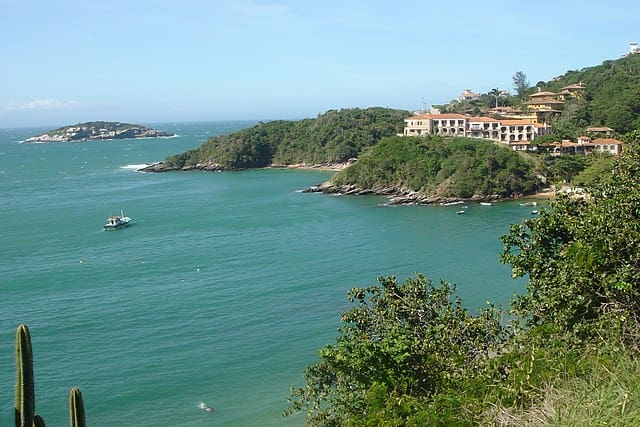
Mariordo Mario Roberto Duran Ortiz , CC BY-SA 3.0 , via Wikimedia Commons
20. Carnival in Rio de Janeiro
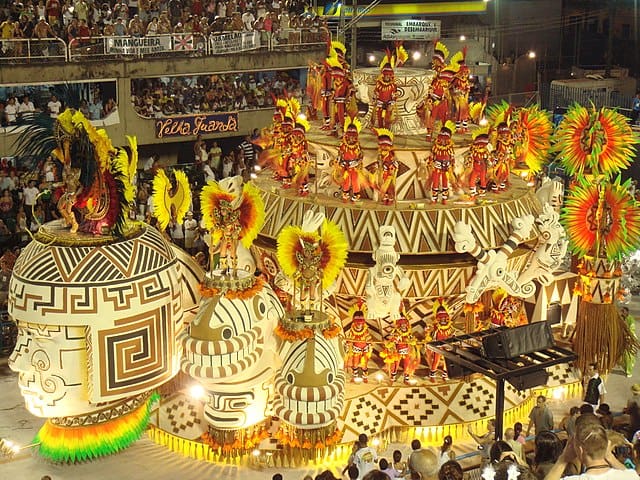
Sergio Luiz , CC BY 2.0 , via Wikimedia Commons
21. São Paulo Museum of Art (MASP)
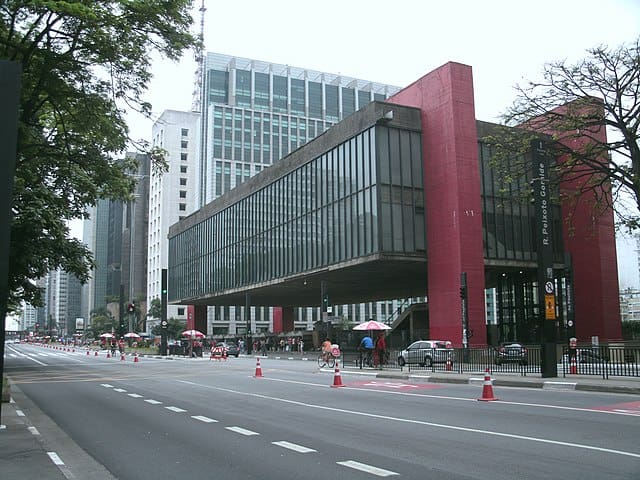
CORRETOR-CARVALHO , CC BY-SA 3.0 , via Wikimedia Commons
22. Inhotim
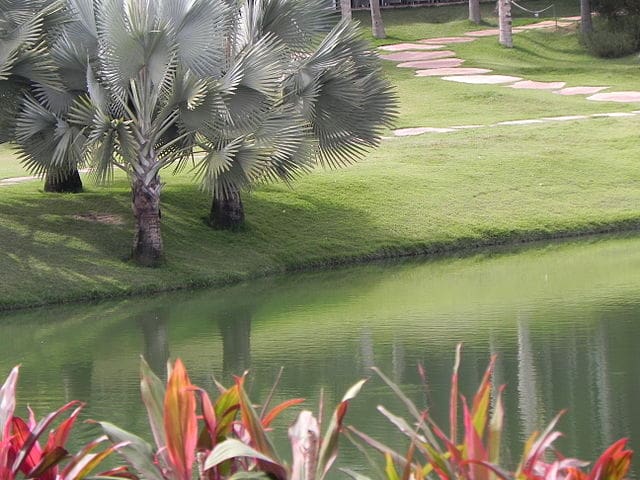
Jadderbh , CC BY-SA 3.0 , via Wikimedia Commons
23. Teatro Amazonas
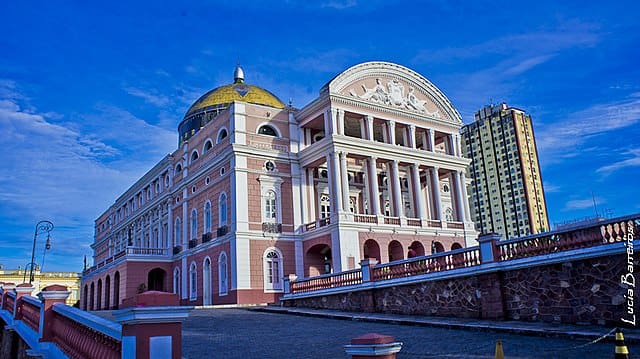
Lucia Barreiros da Silva , CC BY-SA 4.0 , via Wikimedia Commons
24. Serra da Capivara National Park

Paulo César Pamplona Barreto de Sousa , CC BY-SA 4.0 , via Wikimedia Commons
25. Ilhabela
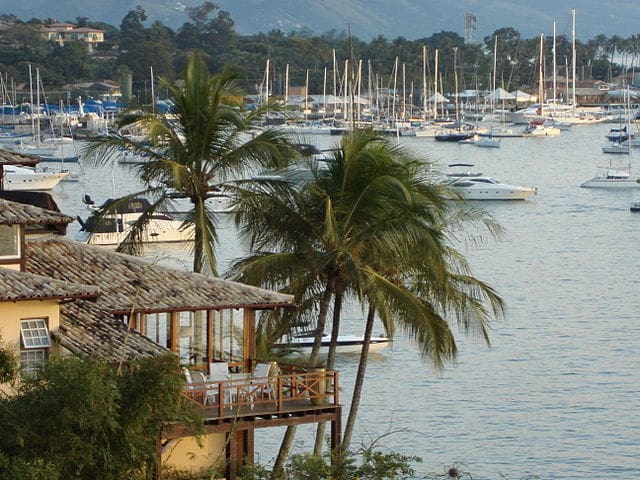
Jurema Oliveira , CC BY-SA 3.0 , via Wikimedia Commons
26. Praia do Forte

Glauco Umbelino from Moro em Belo Horizonte, Brasil , CC BY 2.0 , via Wikimedia Commons
27. Canoa Quebrada

Jorge Brazilian from Rio de Janeiro, Brazil , CC BY 2.0 , via Wikimedia Commons
28. Itaipu Dam

Angelo Leithold , CC BY-SA 3.0 , via Wikimedia Commons
29. Caldas Novas

Eric Gandolph , CC BY-SA 4.0 , via Wikimedia Commons
30. Maracanã Stadium

Brazilian Government , CC BY 3.0 BR , via Wikimedia Commons
Planning a trip to Paris ? Get ready !
These are Amazon’s best-selling travel products that you may need for coming to Paris.
- The best travel book : Rick Steves – Paris 2023 – Learn more here
- Fodor’s Paris 2024 – Learn more here
Travel Gear
- Venture Pal Lightweight Backpack – Learn more here
- Samsonite Winfield 2 28″ Luggage – Learn more here
- Swig Savvy’s Stainless Steel Insulated Water Bottle – Learn more here
Check Amazon’s best-seller list for the most popular travel accessories. We sometimes read this list just to find out what new travel products people are buying.
Vanessa is a passionate writer driven by a never-ending desire to travel the world. She enjoys yoga and reading when she is not venturing into jungles or trying foreign foods. Vanessa writes engaging travel pieces for DW in which she highlights culinary delights, historical insights, and hidden gems and also enjoys science and nature articles and has written about famous scientists. She has a special talent for capturing her audiences’ wanderlust transporting them with engaging storylines that give them a taste of what it is like to immerse themselves in a destination.
Hello & Welcome

Popular Articles

Top 20 Streets to See in Paris

Paris in two days

Top 15 Things to do Around the Eiffel Tower

The Best Way to Visit Paris Museums

Top 15 Fashion Stores in Le Marais
Visit europe with discover walks.
- Paris walking tours
- Montmartre walking tour
- Lisbon walking tours
- Prague walking tours
- Barcelona walking tours
- Private tours in Europe
- Privacy policy
© 2024 Charing Cross Corporation

Home » Travel Guides » 15 Best Places to Visit in Brazil
15 Best Places to Visit in Brazil
Have you been itching for lush rainforests, fantastic cities, tropical islands, and heavenly beaches? Then you’ve been itching for a Brazilian adventure. You’ll find colonial towns that will make you feel that you’ve stepped back in time, red-rock canyons that will make you feel that you’ve stepped onto another planet, and awe-inspiring waterfalls and jungles that will make you wish you could stay forever.
Brazil is the country of Carnaval, a celebration that takes over every city and every soul. You won’t believe the human capacity for fun and joy until you experience this festas. Ask yourself what you want in your next holiday, and Brazil is guaranteed to have it on offer.
Diverse ecosystems, with rare and wild plant and animal species unique to all other places on earth, kayaking through rainforests, horseback riding, whale watching, snorkelling in coastal reefs, samba dancing, all-night DJ’s, white sand beaches, history, culture, and big, full-power cities. Let’s explore the best places to visit in Brazil !
1. Rio de Janeiro

There’s just no other place like Rio. Welcome to lush mountains, brilliant beaches, over the top nightlife, and fanatic football fans. Known as Cidade Maravilhosa, the Marvellous City, Rio is ringed by green mountains while the coast stretches for miles.
Most people come first for the beaches. The cariocas (locals) consider the beach a home away from home and so much happens here that you could never leave and still have a complete vacation. You’ll love biking on the beach, hiking in Tijuca rainforest, hang gliding, rock climbing, and sailing to one of several small islands just off the coast.
Music is everywhere in the city – with the most popular being the African influenced samba vibe. If you want to explore the nightlife, head to Lapa, the cities red-light distinct. You’ll find live music and street parties every night.
2. Salvador

Located in the state of Bahia, Salvador has a phenomenal energy that’s notable even for Brazil. Most known for being Portugal’s New World capital, it maintains a great deal of its colonial architecture and you’ll find the historic centre of the town in the Pelourinho neighbourhood.
Here you’ll find large squares with small cobblestone alleys leading away, multi-coloured buildings, and churches like São Francisco with gilt woodwork and other baroque features. There’s an amazing arts movement here. You’ll find Olodum drummers on the streets, along with Capoeira martial artists, and crazy festivals happening everywhere you look.
The culture here is decidedly Afro-Brazilian and you’ll see that in the incredible food, religious ceremonies and rituals, and dance.
3. São Paulo State

Another in the long list of incredible things about Brazil is São Paulo state. It offers some of the best of the best that the country has to offer. São Paulo city is the current Boom Town – everything here is growing: commerce, industry, culture, finance, and, of course, tourism. But you can also leave the city for a bit and head to Serra da Mantiqueira.
Use this stunning mountain range, with its 2500m peaks, as your cosy mountain getaway. There’s also Ilhabela, to be used as your posh island escape. Or try Iporanga in the midst of the Brazilian Atlantic Forest.
You’ll also find great beaches with the rainforest as their backdrop – try the lovely Ubatuba for a relaxing few days.
4. São Paulo City

The heartbeat of São Paulo State is Sao Paulo city. It’s the largest city in Brazil and one of the largest in the world. It’s a bit of a melting pot, with all kinds of ethnic groups calling it home, including the largest community of Japanese outside of Japan.
You’ll find unbelievable art galleries and experimental theatres, as well as fantastic fine-dining restaurants and upscale bars. If you want a taste of sophisticated city life, this is your stop.
With 20 million people, Sao Paulo is a mammoth city, and does come with a lot of big city hassles, but for those willing to look a little closer; there is a vibe here that rivals New York City.
5. Brasilia

Built in the 1960’s, Brazil’s capital is a thoroughly planned and intricately organized city. Brasilia’s landmark infrastructure is laid out in the form of an airplane.
Each section of the plane is a different district like residential, government, finance, culture, and commerce. The architecture here attracts tourists and professional architects alike.
Be sure to check out the Three Powers Square. Here you’ll find the Supreme Court, Congress, and the Presidential Palace.
6. Fortaleza

Another of Brazil’s big cities is Fortaleza. It’s best known for an energetic cultural scenes, great beaches, and even greater shopping. If you’re going for the beaches, check out Meireles, Mucuripe, Iracema, and everyone’s favourite, Praia do Futuro.
Spend your mornings strolling through Centro, the oldest part of the city, and then spending your evenings in Praira de Iracema, a neighbourhood densely packed with hotels, restaurants, and nightlife.
Once you’ve had your fill of Fortaleza beaches, use it as starting point to discover the quaint fishing villages and rolling dune beaches of the Ceará coast.

One of the most popular stops for tourists is located along Brazil’s Green Coast in the state of Rio de Janeiro. Paraty is bursting with waterfalls, emerald green sea, giant coastal mountains and tropical forests.
Once a Portuguese colony, the heart of the town is still the historic centre. Complete with multicoloured colonial buildings and cobbled streets built in the 17th century during the height of the Brazilian gold rush. Many of the houses have been converted to bed and breakfasts’ which the locals call pousadas. The entire historic district is great for strolling as the lanes are closed to cars. It really feels like you’ve stepped back in time.
Don’t forget to check out the colonial forts – many that still have their original cannons – and Capela de Santa Rita, a lovely 18th century church.

There is nothing not to love about the “Venice of Brazil.” Inside the city is a network of waterways, bridges, islets, and peninsulas, and just outside are tropical rainforests with rivers and islands to explore. There is a wonderful historic old town here, as well as incredible culture and fantastic beaches.
The old town is known as Recife Antigo and is located on its own island near the harbour. Most would agree that Boa Viagem is the most popular beach in town due to the white sands and coral reef.
Recife is a large city with lots to offer – including an awesome place to spend Carnaval.

Six kilometres from Recife is Olinda, is a 16th century Portuguese colonial town. The historic old town sits on a hill surrounded by trees and filled with churches, museums, and restaurants. In 1982 it was declared a UNESCO World Heritage site. The rest of the town is no less charming with tons of 18th century architecture, monasteries and convents, and fantastically painted houses.
Once a leader in the sugarcane industry, Olinda has transformed into a small artists’ colony; full of artists, workshops, studios, and other creative types. Check out the pousadas in the old town if you’re interested in using Olinda as a base to enjoy Recife.
Carnaval is slightly different here, celebrated primarily during the day with the music and dance focused on traditional African culture.

Considered by many as the gateway to the Amazon Rainforest, Manaus sits on the Negro River. The capital of Amazonas and one of the largest cities in the country it has incredible landmarks like the Rio Negro Palace and the Amazonas Opera House.
If you’re in the mood for some phenomenal nature, check out the Meeting of the Waters, a three mile stretch where the Solimões and the Negro Rivers run side by side without fully mixing. Eventually, both rivers converge to form the Amazon. Most people come here as a stopping point on their way into, or out of, the Amazon.
If you’ve got time, check out the zoo that lets many of the animals roam free, and a little beachside museum just outside the city centre.
11. Iguazu Falls

This stunning natural wonder runs for 2.7km along the border with Argentina.
Iguazu Falls is a series of waterfalls along the Iguazu. The combination of luscious green forest, exotic wildlife, and breathtaking waterfalls is intoxicating.
Use the city of Foz do Iguaçu as your base camp as you enjoy cascades like the 80 metre Devil’s Throat. With hundreds of fall’s to discover, you might consider a tour in one of the tourist rubber boats called zodiacs.

Bonito is a one-street town full of charisma. It serves as an ecotourism model for Brazil and as a hub for the surrounding areas. If you’re an outdoor adventurer and water enthusiast, then this is your spot.
Discover Abismo Anhumas, a gigantic cavern covered in stalactite where you can dive and swim in an underground lake as well as do some abseiling. Or how about snorkelling in the crystal clear Rio da Prata? If you’re a bird lover you won’t want to miss the macaws that nest deep in the Buraco das Araras.
To top it all off, explore the Serra da Boduquena National Park.
13. São Luís

The historic centre of São Luís has been declared a UNESCO World Heritage Site thanks to its well-restored colonial mansions. There are so many museums, crafts, and galleries to explore while here.
São Luís maintains a largely Afro-Brazilian culture and you’ll find both reggae and Bumba Meu Boi music festivals. While you’re here be sure to catch the Centro de Cultura, a museum with exhibits on the three major Brazilian festivals. You might also like the Archaeological Museum and the Casa das Tulhas, a 19th century market building.
When you’re ready, cross the Baía de São Marcos for a quick day trip to Alcântara to see this historic town as it slowly slips into tropical decay.
14. Jijoca de Jericoacoara

This hidden gem is one of the spectacular beaches in Ceara, Brazil. Named by the Washington Post as one of the Top 10 Most Beautiful Beaches in the world, you’ll find calm seas, white sand dunes, and gorgeous blue lagoons.
It’s a nesting spot for large turtles and therefore was declared an Environmental Protection Area; it’s also been a national park since 2002. Thanks to all that, the area has remained largely isolated and untouched.
They’ve had electricity for less than 20 years in Jeri and thanks to local ordinance; the streets can only be lit by the moon.
15. Curitiba

This thoroughly urban capital of Paraná state is a well-known performance centre. Visit the Wire Opera, a steel tube building with a see-through roof, as well as the Guaíra Theatre for some great programs.
Curitiba is also well known to urban planners across the globe as one of the most efficient cities ever built. You’ll find a six-block stretch designated as a pedestrian zone, tones of parks and trees, innovative solutions to urban problems like pollution and poverty.
It’s a unique place to recharge before ending your Brazilian adventure.
15 Best Places to Visit in Brazil:
- Rio de Janeiro
- São Paulo State
- São Paulo City
- Iguazu Falls
- Jijoca de Jericoacoara

The 25 Best Places to Visit And Things To Do In Brazil!
Posted on Last updated: December 15, 2023
Categories Brazil , South America
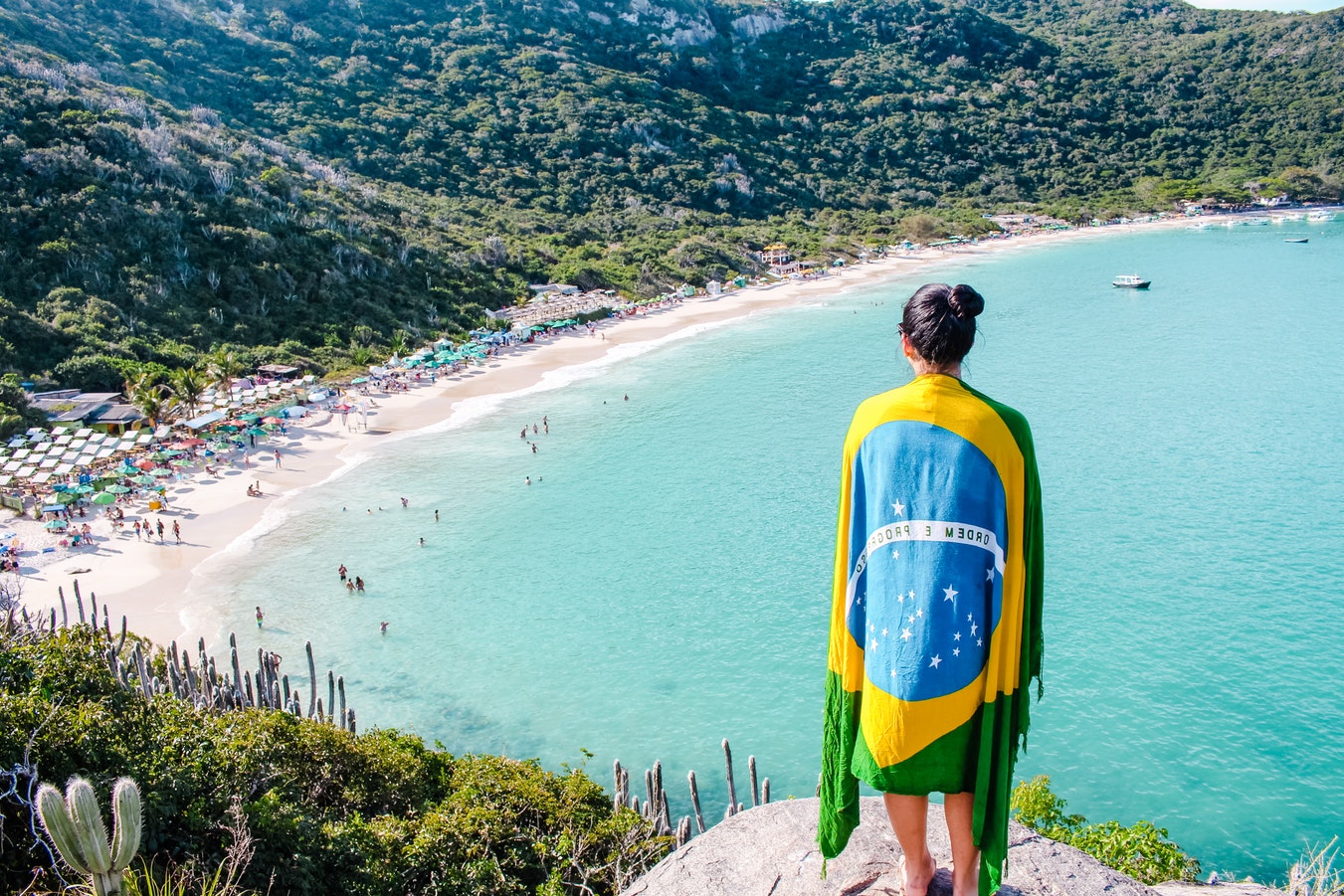
Expert travel storyteller Jordan Adkins, founder of InspiredByMaps.com, brings a decade of adventures across 101 countries and 450+ UNESCO sites into rich, off-the-beaten-path narratives, melding ecological expertise with genuine, seasoned travel insights. His full bio can be found here.
One of the world’s most fascinating countries, there are so many things to do in Brazil that adventure-hungry travelers are spoilt for choice. Whether you want to hike in the jungles, lie on the beach or dance in the streets, you can do that here.
From tranquil beaches to vibrant cities to lush rainforests, the country spans a huge variety of landscapes — and as a result, there are so many places to visit in Brazil.
If you’re not already captivated by its scenery and biodiversity, you’ll be hooked by the culture. There are energy and a love of life that runs through every aspect of Brazilian culture.
Samba dancing, drumming in Carnival, indigenous and Portuguese influences, mouth watering food; all of these aspects and more combine to create an atmosphere that you’ll want to stay in forever.
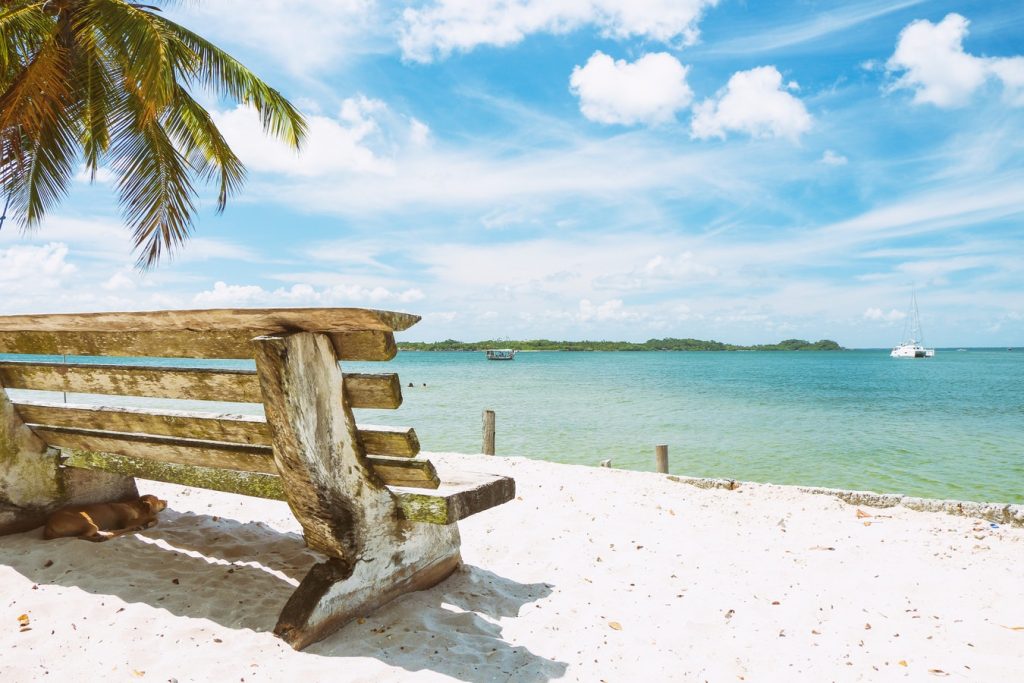
And, to put it plainly: Brazil loves to party!
You’ll have heard of Carnaval, of course; a cacophony of music, dancing, and general joy. There are also diverse festivals going on throughout the year, great nights out in the cities and towns; not to mention just any quick drink turning into dancing at dawn!
So, what are some of the best things to do in Brazil? With so much on offer, how can you narrow it down? We’ve got some suggestions below.
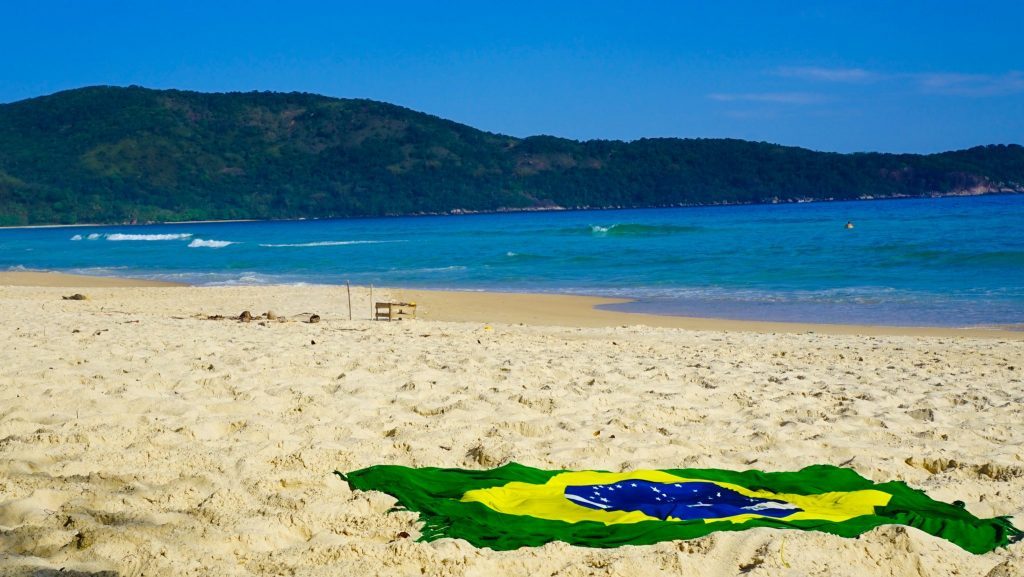
The 25 Best Places to Visit And Things To Do In Brazil! 🇧🇷
Page Contents
Rio de Janeiro
Fernando de noronha, iguazu falls, recife & olinda, lençóis maranhenses national park, parque nacional da chapada diamantina, ilha grande, florianópolis, amazon from manaus, são miguel das missões, alter do chao, belo horizonte, the pantanal, salvador city, chapada dos veadeiros national park, vale dos vinhedos, armação dos búzios.
World-famous for its Copacabana and Ipanema beaches, Christ the Redeemer statue and wild Carnaval, Rio de Janeiro is absolutely top of the list of things to do in Brazil. We can’t pretend it’s a quiet place, but it’s got a relaxed, carefree attitude that is intoxicating for travelers.
Otherwise known as the Cidade Marvalihosa (Marvelous City), here you’ll find lush forests and mountains circling the city while the beach acts as the city’s backyard.
You can hike, surf, sail or rock climb – or just chill on the sands, if you’d rather! It’s a stunning landscape for a city and you’ll never stop appreciating the beauty. In a city this, well, marvelous, it’s hard to get past the superlatives and decide exactly what to do — so to help, we have put together a list of the top things to do in Rio de Janeiro Brazil!
The rich and varied history means there’s plenty to discover among Rio’s myriad attractions. That is, if you want to leave the endless fun of the bars and the beach. Arriving at a festival time means you’ll soak up even more of the joyful celebration, whether it’s a big football match, Carnaval or weekend samba parties. New Year is also a pretty spectacular time to enjoy all that makes Rio special.
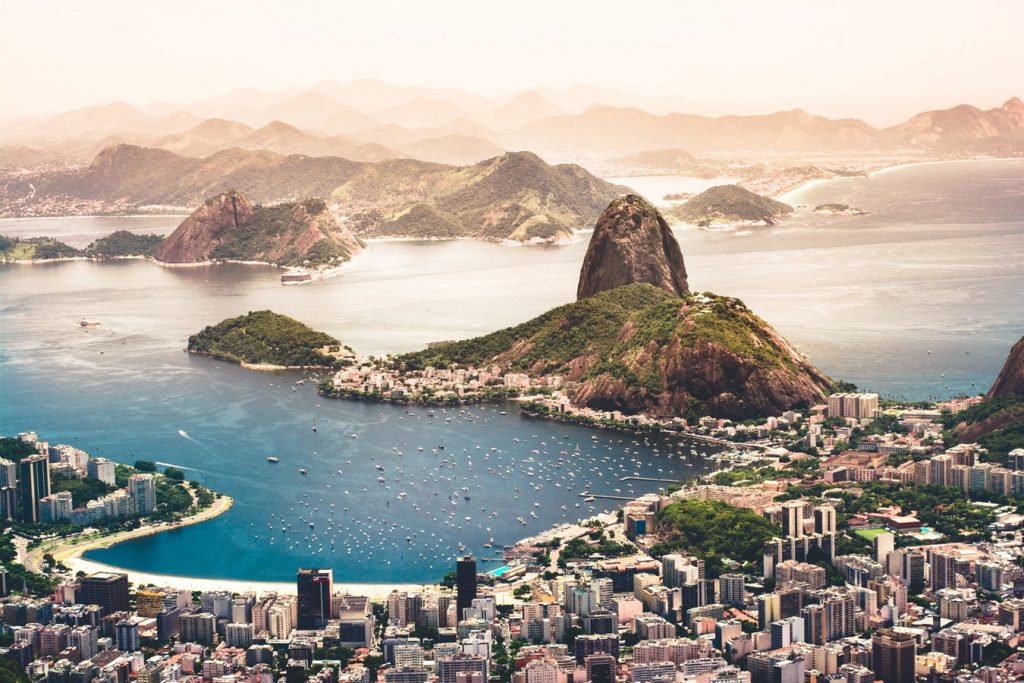
The tropical oasis of Fernando de Noronha is in an entire league of its own. The isolated tip of a submerged ocean volcanic, the archipelago of Fernando de Noronha, lies 271 miles (350 km) off Brazil’s northeast coast and consists of 21 islands.
A UNESCO World Heritage Site with a sensitive ecosystem, tourist numbers here are restricted to around 450 to 500 people per day. But the lucky few that make it here are duly rewarded …
Fernando de Noronha has everything you could want from an unforgettable island getaway. Picturesque scenery, majestic seascapes, fine white sand beaches, bountiful diving, animated snorkeling, turquoise waters, and oh-so-much-more.
Only one island in the chain is inhabited, with a population of around 5,000 people. Otherwise, most of the rest of this paradisaical retreat is left to the seabirds, reptiles, turtles, and exotic marine life. A nature lover’s paradise, Fernando de Noronha can be compared to Fiji , an arresting beach island scene straight out of a Hollywood film set.
There are a limited number of flights daily, so getting here – and accommodation once you arrive – is not particularly cheap. Still, if you can stretch your budget, Fernando de Noronha is worth every cent.
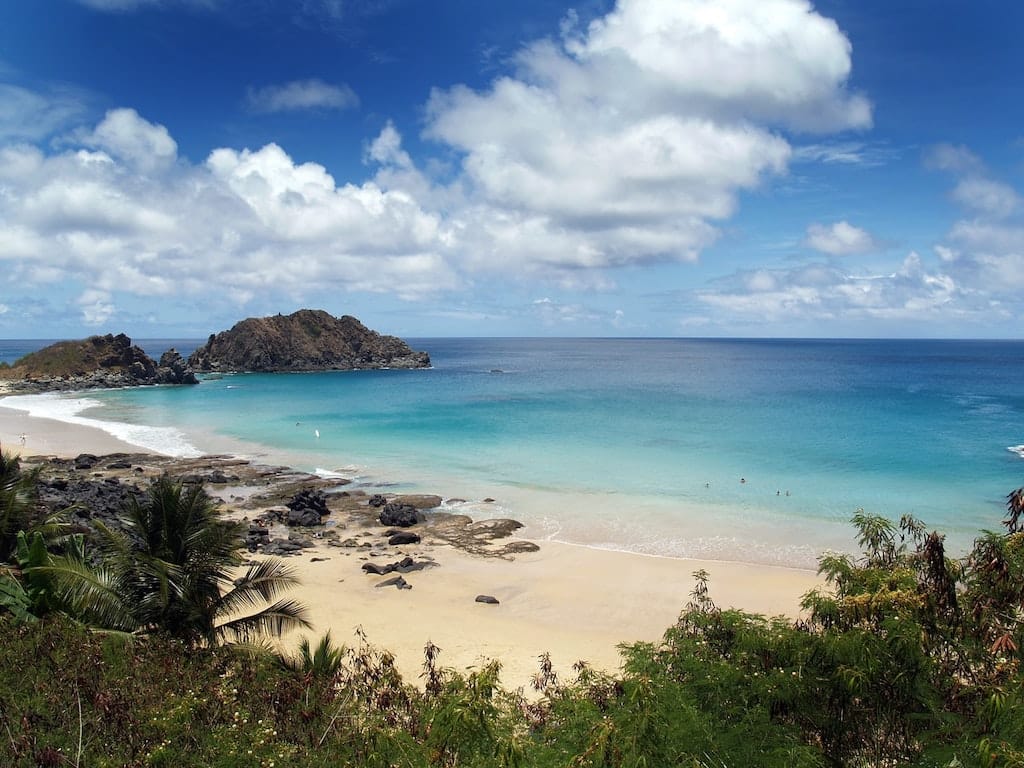
As well as fascinating cities, Brazil also has some of the most stunning natural wonders in the world; the awe-inspiring Iguazu Falls are among these. There are 275 separate drops along the 2.7 kilometers of the falls, which separate Argentina and Brazil. From the Brazilian side, you go to the Igauçu National Park to enjoy the spectacle.
There’s an intricate series of footpaths and walkways that enable visitors to get up close to the natural beauty and on the Brazilian side, there’s a long pathway along the canyon.
A must-see for everyone is Devil’s Throat, a narrow chasm that takes half of the river’s flow along; you can imagine the power and noise of the water there.
Get a panoramic view of the falls from the trail or splurge on a helicopter ride for the bird’s eye perspective. Stay in the nearby town of Foz de Iguacu so you can get up early to beat the heat and the crowds; then enjoy being mesmerized by the majesty of this remarkable place.
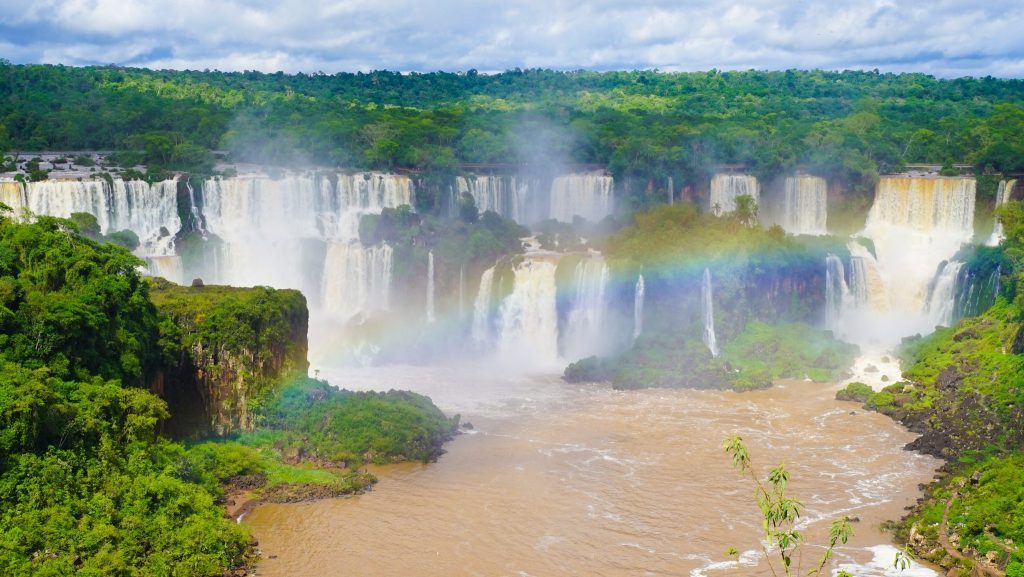
Recife and Olinda are sister cities on Brazil’s northeast coast that stand within sight of each other. Both started life as colonial cities under Portuguese rule, exploiting the vast richness of the New World, but over the centuries Recife has pulled ahead while Olinda has kept its small-town charm. The juxtaposition of both is tantalizing, and ensuring visiting them together is one of the top things to do Brazil.
Recife, the capital of Pernambuco state, has a booming population and everything from charming canals and vividly painted colonial buildings to glistening skyscrapers, palm-fringed beaches, and exuberant nightlife. An energetic and inspiring city, Recife also has plenty of entertainment and cultural attractions, more than a dash of grit and growing traffic problems. A true metropolis – warts and all.
In contrast, Olinda – just a short bus trip to the north – has very much maintained its colonial charm and clings to a slower pace of life. Position on a hillside overlooking the Atlantic Ocean, this UNESCO World Heritage site is an artsy counterpart to Recife with galleries, workshops, baroque churches, convents, monasteries, and wonderfully preserved houses and manors.
It is rare in the world to find two destinations that contrast and complement each other so completely. On their own, each would be worth a visit – but together, they become one of the absolute top highlights of Brazil.
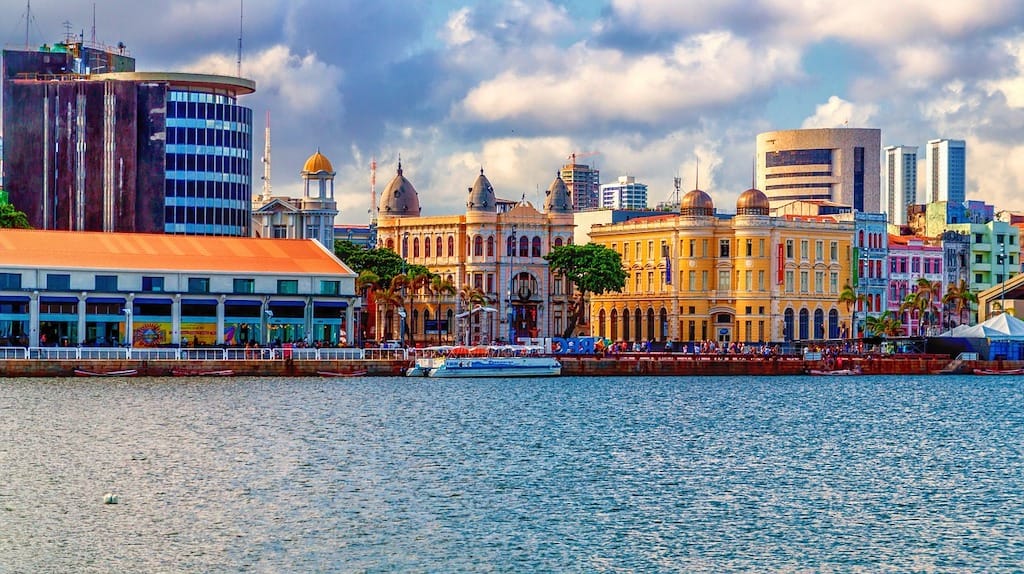
A must-visit destination for anyone fascinated by the natural landscape, this 1550 square kilometer national park is a spectacular area filled with dunes, lagoons, and beaches. Its undulating dunes give the park its name – ‘Lençóis’ means ‘bedsheets’ and these expanses really do look like sheets draped across the land.
The rains between May and September get filtered by the sand to create incredibly clear blue lakes between the hills of sand. You can choose whether you navigate the area on foot, on horseback or in a car; whatever you do, you won’t regret making the effort to come here. It’s got an almost otherworldly quality, making a dramatic impact.
It’s easy to see why it is called one of the most beautiful places in Brazil – and people make the considerable effort to get here.
The most convenient way to explore is to stay at Barreirinhas on the river although if you don’t mind heading somewhere more remote, Santo Amaro and Atins are more peaceful bases.

An expansive national park in eastern Brazil, Chapada Diamantina attracts adventurous tourists looking for nature, hiking, colonial wonders, and off-the-beaten-track experiences. And boy, do they find it here.
An almost untouched wonderland of cascading waterfalls, intrepid hiking, and panoramic views – the entire park sits atop an otherworldly 41,751 square kilometers (16,120 sq. mi) plateau bounded by cliffs in central Bahia.
The most famous attraction is the Fumaça Waterfall, one of the tallest waterfalls in Brazil, which at 340 m tall evaporates in a mist before even reaching the ground. Another famous highlight is the cauldron-like Devil’s Pool, with its deep black water and sinister history, or the enormous sandstone-and-quartz Lapão Cave.
Parque Nacional da Chapada Diamantina offers everything from day hikes to multi-day journeys. There are plenty of trained local guides happy to help you organize your expeditions once you arrive. The old colonial mining towns of Lençois and Mucugê are popular bases for exploring the park and offer cobblestone streets, outdoor cafes and a cute range of pousadas (a boutique inn that provides a more intimate experience than your traditional hotel).

If you’re tired of the mega-cities yet still want to experience town life in Brazil, Ouro Preto is the place to go. It’s one of several colonial towns in the state of Minas Gerais that date back to the 18th-century gold rush and by far the most beautiful.
It’s not just historically important for the gold mining but also for being the setting for the country’s first independence movement. That is probably why they made if a UNESCO World Heritage Site.
If you have traveled to places like Lisbon, you’ll really be able to see the influence of Portugal on Ouro Preto. In fact, Ouro Preto actually has some of the best-preserved Portuguese colonial architecture, with few signs of modern urban development—unlike Macau.
Sure it might not be that easy to get to, but the best places never are and you will be justly rewarded with a fairytale town like no others. It’s pure magic!
There’s so much joy here in getting lost in the narrow, cobbled, steep streets (not to mention you’ll have thighs of steel by the time you’re done!) and the views once you get to a vantage point are incredible.
It’s also one of the more artistic things to do in Brazil with a range of art galleries and cultural centers showing off the mineiro art.
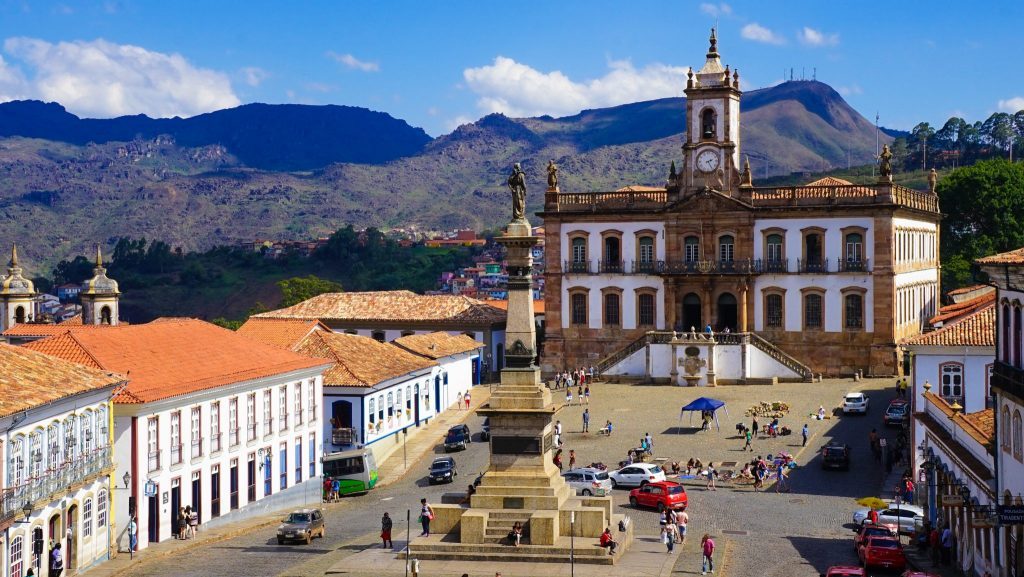
Do you dream of cocktails at sunset? White sand under your toes and the sound of waves crashing on the beach? A stress-free location away from chaos where no cars are allowed, prices are low, and your biggest worry will be ‘Açai or Coconut for lunch?’
Well then, do we have the island for you. Ilha Grande is a fabulous tropical island located only a few hours bus and boat trip away from Rio de Janeiro on Brazil’s stunning southeast coastline. Yes, this could be all yours: gorgeous blue skies, empty beaches, and that tempting ocean. Just imagine…
It’s a natural paradise with 99% of the island being covered in natural Atlantic Rainforest, only one small town and a series of paths crisscrossing the dense vegetation leading to deserted beaches.
Yes, it sounds like heaven— and that’s because it probably is.
Then there is the thriving (but laid-back) nightlife scene, incredible sunsets, fantastic snorkeling, funky monkeys, range of affordable accommodation islands, and abundance of caipirinhas. Most people who travel here end up extending their stay, but it’s hard to know beforehand if you will like it, and how long you will need, so we have put together a more comprehensive guide to things to do in Ilha Grande to help you fall in love with this magnificent place.
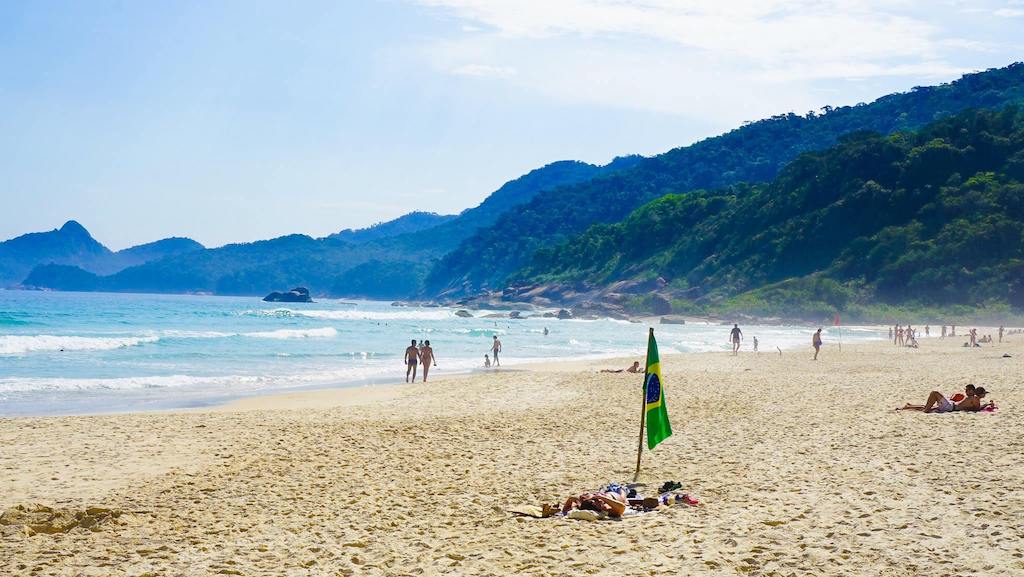
From secluded natural beauty to wild and wonderful festivities with a cacophony of noise and color. An annual festival held in February in the run-up to Lent, this is a time where Brazilan cities let loose with parades, music, and dancing.
A lot of dancing.
While the Rio Carnaval is the most famous, you can go to any city in Brazil at this time and experience the best party you’ve ever been to. The entire county celebrates Carnaval and unifies for almost a week of non-stop partying.
In the Southeast Region you’ll hear a lot more samba; in the Northeast, more frevo and maracutu. Whatever the music and wherever you are, shine your sequins and get ready for spectacle galore!
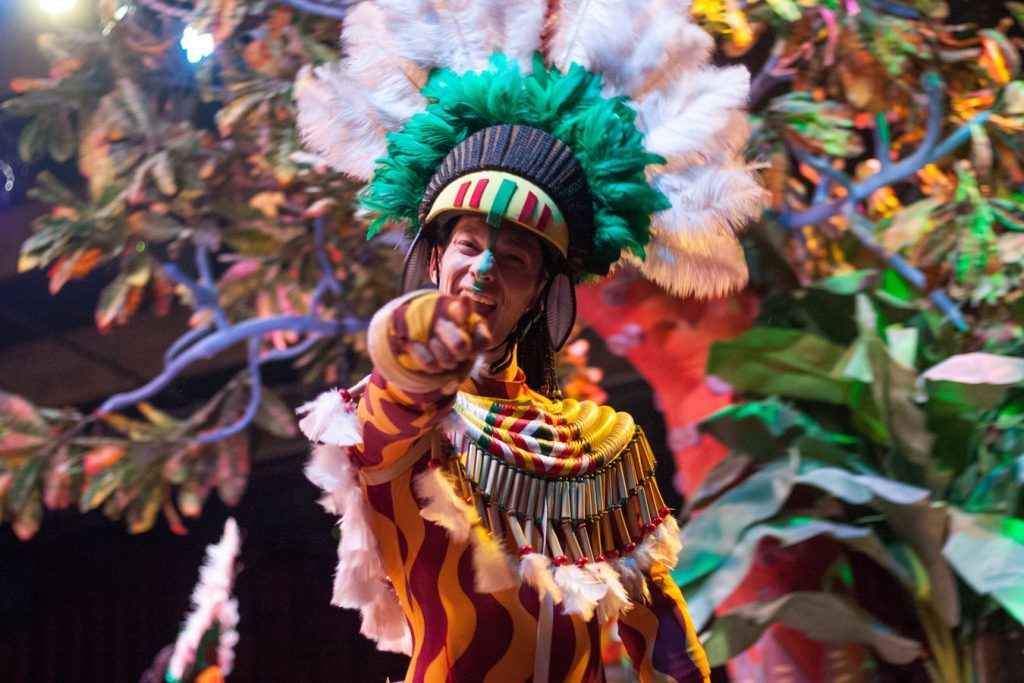
Freshwater snorkeling in heavenly Bonito one of the best-kept secrets in Brazil, though its popularity is growing.
Bonito is an eco-tourism hub in Mato Grosso do Sul state in Southern Brazil. The encompassing area has garnered a reputation for its crystal-clear rivers, huge, stalactite-covered cavern, and a bounty of colorful fish.
Located on the edge of the great Amazon basin, Bonito is a mirror into the underworld – similar to the great cenotes of Tulum and Cuba . While unassuming on the surface, there is a reason by Bonito is named after the Portuguese for “beautiful.”
While snorkeling in the magical waterways that end in shallow (and warm) pools as clear as glass is the main highlight, Bonito is also the jumping-off point for expeditions into the Pantanal region, filled with jaguars, boa constrictors, and colorful birds. Then there are the river-beaches on clear water lakes, zip-lining adventures, paddle boarding, scuba diving, and fantasy waterfalls.
An aquarium come to life; Bonito is a jungle-laden paradise with just enough eco-tourism operators to make life easy— yet not enough to destroy what makes this spot so enchanting.

The capital of southern Brazil’s Santa Catarina state, Florianópolis, is the place to go for beach resorts, surfing, boating, and a heavy German influence.
Most of the city lies on the spectacular 54-kilometer-long Santa Catarina Island and connected to a mainland commercial area via the famous Pedro Ivo Campos Bridge. The frontier between Portuguese and Spanish empires, the region was filled with German-speaking immigrants in the 1820s to act as a buffer – and has had a lasting legacy.
These immigrants kept their small family-owned farming practices, similar to North America at the time, yet vastly different from the mega-plantation culture of most of Brazil. This resulted in Florianópolis having a healthier legacy of equality and egalitarian policies than the rest of the country — a trend that continues today. Not to mention a wild Oktoberfest festival, fascinating history, and a flourishing cultural scene.
For tourists, there is sun, sand, and surf aplenty, with beach hopping being the most popular attraction. The seafood and beer are both expectedly standout, as is the sophisticated city vibes. With over a hundred beaches, all encircled by picturesque hills covered with lush Atlantic Forest vegetation – it is impossible not to love this unique place in Brazil.
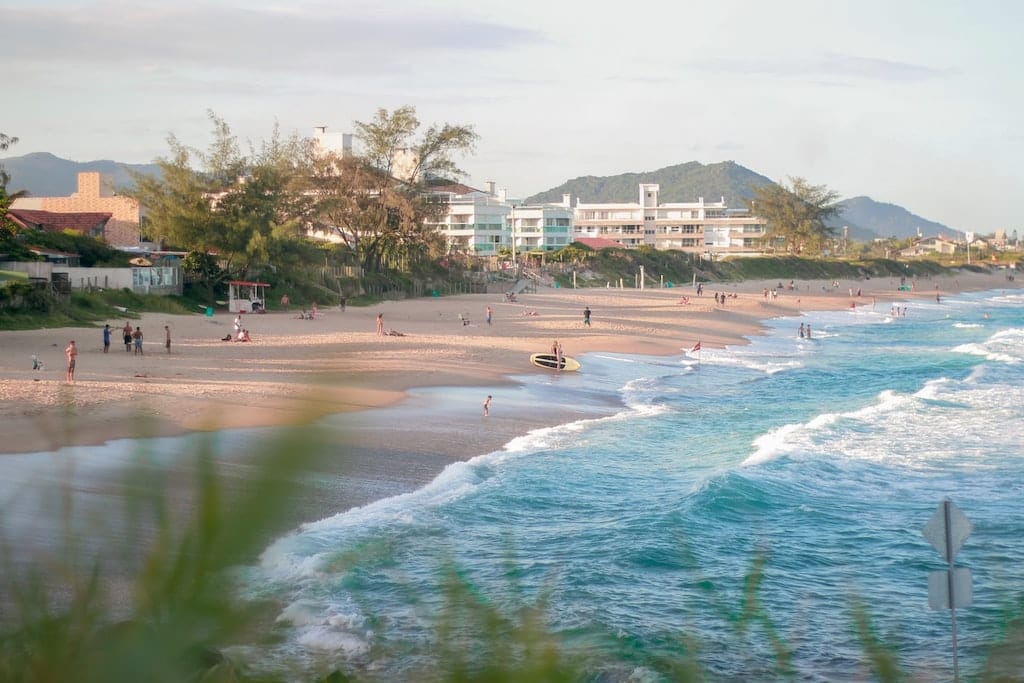
What Sao Paulo lacks in Rio-style beauty and landscape, it more than makes up for in energy and pride. Ask any resident and they’ll tell you at length how they’ll never live anywhere else – so it’s definitely somewhere that travelers should check out. Traffic galore there may be but there’s plenty to experience in this bustling cosmopolitan city.
It’s the art center of Brazil so, as might be expected, there are a wealth of museums, galleries and cultural centers. Not to mention all the street art.
Head downtown for the historic area and many of the main attractions; head to the other areas for more of an insight into the daily life of the Paulistanos. In the evenings, aside from a great nightlife, there is always something happening, whether it’s theatre, musical performance and international events.
We love heading to Avenida Paulista on a Sunday to join in the masses of people walking, cycling and rollerblading along the temporarily pedestrianized street. The city is also home to a wide range of culinary delights and it’s definitely one of the top places to go in Brazil for foodies.
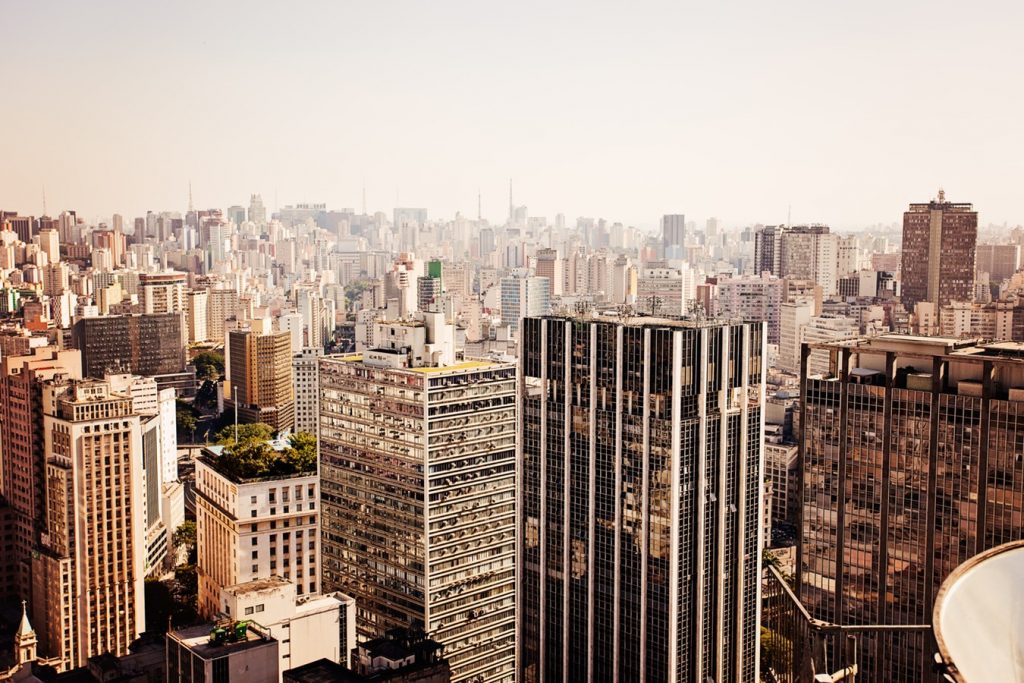
Another contender for the most beautiful town in Brazil, Tiradentes in the Brazilian state of Minas Gerais, is an unspoiled case of Portuguese colonial architecture. It is so well preserved and so appealing, you would at times think you have mistakenly wandered into a movie set – and will catch yourself thinking,’ how can a place be so perfect.’
Gorgeous homes set along cobblestone roads enveloped by green mountains and a truly majestic church: Tiradentes is the kind of place dreams are made of. Except it is real. When gold became scarce, this historic mining town was largely forgotten and fell into decay. Crucially, this meant it wasn’t modified or ravaged by growth and modernity. When tourism began to trickle back here in the late 1970s, intrepid guests were rewarded with exceptionally preserved Baroque structures thanks to the years of isolation.
Beyond the obvious visual appeal, there is a booming restaurant scene, lush forest hikes, and some wonderfully insightful museums. The charming São José Fountain should not be missed, along with the vintage steam train that runs between Tiradentes and the magnificent Serra São José grouping of quartzite blocks.

If you’re looking for things to do in Brazil that give you more of a perspective on the country, then Brasilia is one of those. Established as the capital city in 1960, it was a utopian vision of organized urban design in response to the perceived chaos of Rio and Sao Paulo.
It was designed in the shape of a crucifix but is also often compared to an airplane, with Eixo Monumental forming the central body with the star attractions laid out along it and two wings making up the residential and commercial sectors.
It’s a spread-out city with lots of spaghetti junctions so you can’t walk around it the same way you would other cities, but there’s still plenty to discover.
Head up to the viewing platform of the Television Tower to appreciate the city plan or stroll past the government buildings on the Esplanade of the Ministries. Go bar hopping, starting at old favorite Beirute, or enjoy culinary experiences in some of Brasilia’s ever-increasing contemporary restaurants.
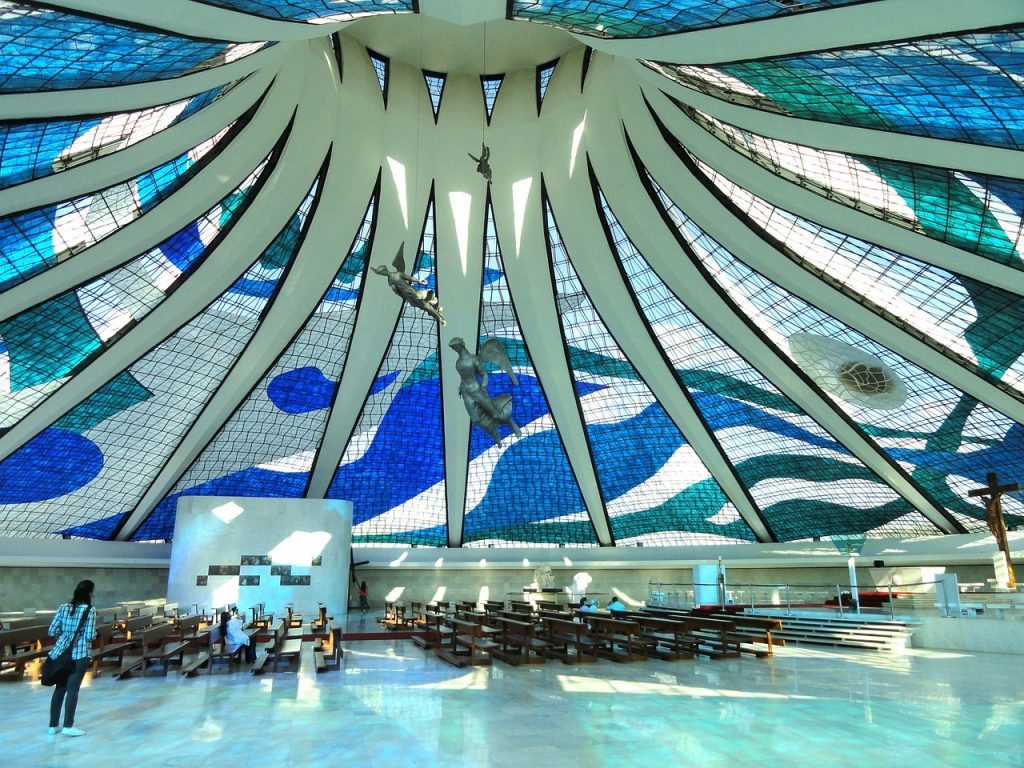
A small town popular with backpackers, Paraty is flanked by the jaw-dropping mountains on Brazil’s Costa Verde and supremely positioned between Rio de Janeiro and São Paulo.
The perfect place to break up a trip, Paraty has a lot going for it with a rich Portuguese colonial center including cobbled streets and many excellent 17th- and 18th-century buildings due to its history as an important port during the Brazilian Gold Rush.
Today more of a popular artist refuge and tourist hotspot than an export hub, Paraty was recently recognized by UNESCO as a World Heritage Site along with the nearby island of Ilha Grande.
Paraty is a welcome escape from the city madness, with tropical hiking, horseback riding, boat cruising, and snorkeling. Or you can just spend hours exploring the colonial-era streets, darting into small cafes, whitewashed churches, and modern galleries. Paraty has long been a beloved getaway for residents of Rio, but now the cosmopolitan vibes have been taken a step further with the influx of international vacationers.
In August, Paraty host the annual Festival of Cachaça, and in May, there is the Paraty Bourbon Jazz Festival, which includes many of the world’s top artists. Add to this the 65 islands and 300 beaches nearby, a fun cook school, a slew of bars and luxe lodgings, and it is safe to say Paraty will firmly keep its status as one of the best places to visit in Brazil for the foreseeable future.
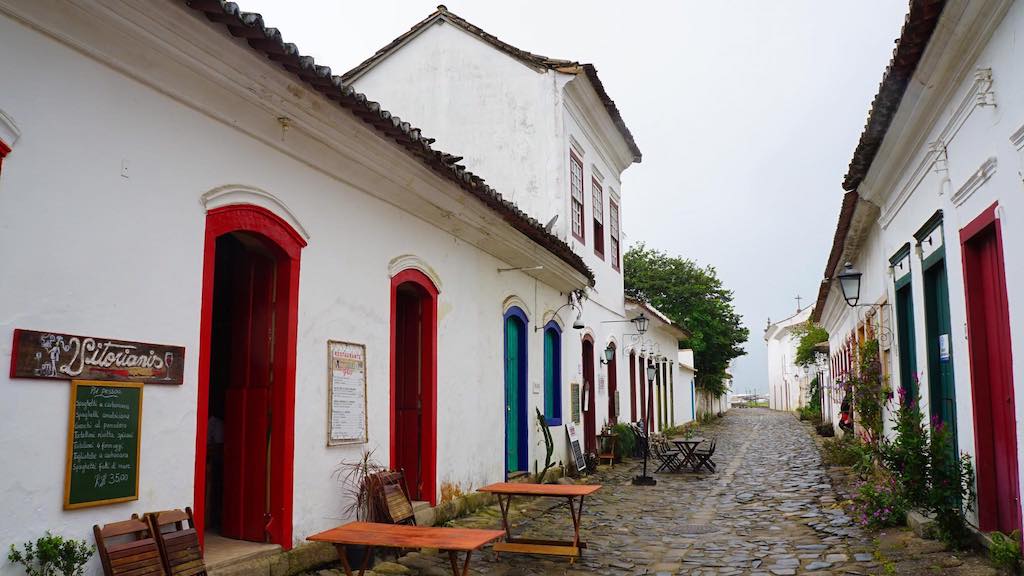
The Amazon has captured the imagination of hundreds of thousands of people throughout the ages and for good reason. Its incomparable ecosystem and diverse flora and fauna are fascinating not just to biologists, but to travelers, which is why going on an Amazon Rainforest River Tour on the Rio Negro is so popular!
Cruising down the Amazon River taking in the quiet majesty of the area is one of the things to do in Brazil that just can’t be missed.
Manaus is the largest city nearby and definitely the most convenient location you can explore from. Here you’ll find a wide range of accommodation options and tour operators to fit every budget. And prices are a lot lower here than what you can find in the Ecuadorian Amazon or Peruvian Amazon if that helps…
You can go on organized hikes into the jungle, canoe trips or even go fishing. All of these are unforgettable experiences to help you appreciate the power of the river and the life it generates around it.

São Miguel das Missões in Rio Grande do Sul state is a monumental Spanish Jesuit mission ruins from the 17th century.
It was built because the Jesuits at the time of colonization were on a mission of evangelizing the Indigenous people of Bacia do Rio Prata (a territory that today is spread across Argentina, Paraguay, and Brazil), to preserve their culture and language and protect them from Portuguese slave traders. Eighteen such villages were built as places where converted Indigenous people lived, to adapt their lifestyle to Christianity.
The Jesuits were eventually expelled under the Treaty of Madrid when the area was transferred from Spain to Portugal. The Guaraní tribes who lived here refused to comply with the order to relocate from their homelands, and thus a joint Portuguese-Spanish army attacked and defeated the Guaraní. The São Miguel das Missões was left in ruins, the Guaraní were killed and enslaved, and this great social experiment ended.
The ruins today have a ‘paradise lost’ feel to them, with an incredible museum and many gorgeous viewpoints to appreciate the scale of the undertaking.
In 1984 the Mission was listed as World Heritage under the Jesuit Missions of the Guaranis listing, along with three others in Argentina including the equally impressive San Ignacio Mini.
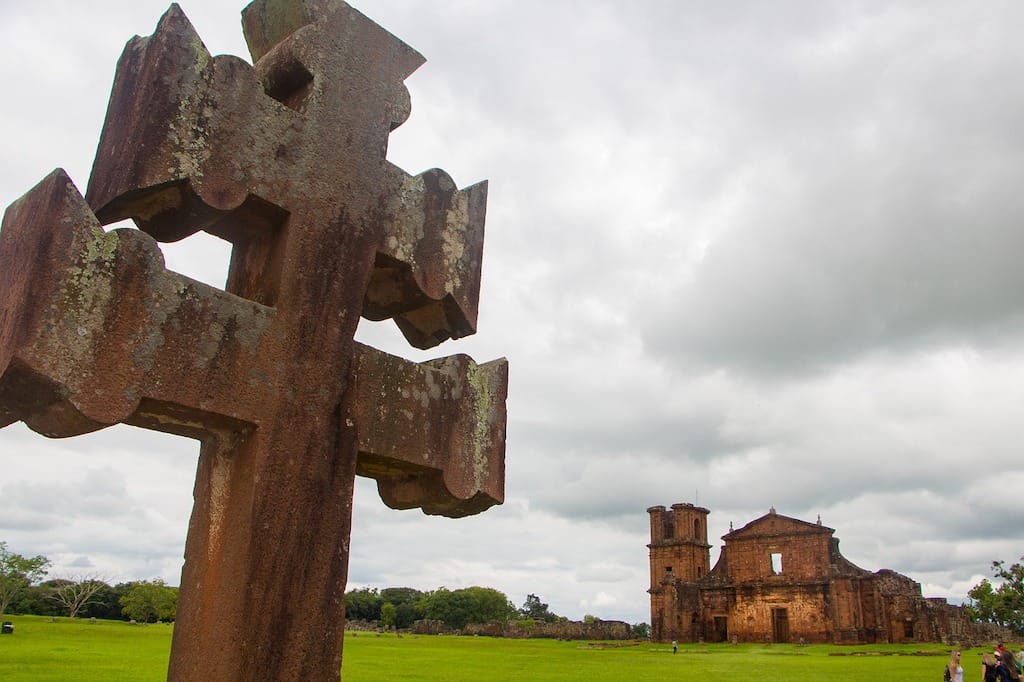
Hidden in the murky depths of the famous Amazon jungle, Alter do Chao is a quirky and offbeat beach destination that boasts astonishing white sandy stretches that will convince you you’ve somehow traveled to Brazil’s famous north coast.
Located around 33 kilometers west of the already isolated Santarém, Alter do Chao is most well-known for its Ilha do Amor (Island of Love), an arresting island ringed by a white-sand beach. But there is much more to this place than just beaches; there is a three-fingered lagoon to investigate – either by canoe or stand-up paddleboard – and boat tours into the surrounding Amazon.
You should not miss a trip to Ponta do Cururu at sunset where large numbers of pink and grey dolphins gather for an evening meal. An ethereal experience — to say the least.
Positioned on a major tributary of the Amazon river between Belem and Manaus, the isolation of Alter do Chão’s and retreat from the modern world is the appeal here – and the main reason why there are so few visitors. A lack of roads in the region means the main way to get here is by flying to Santarém and then catching the bus. You’ll be duly rewarded for your efforts.
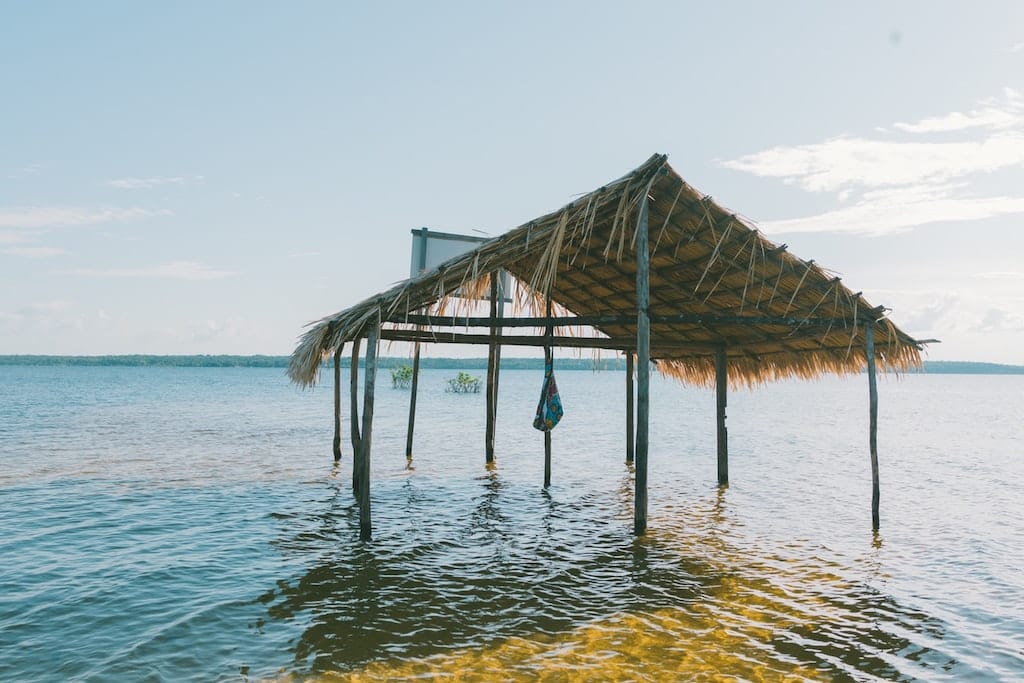
While not on most tourist itinerary for Brazil, landlocked Belo Horizonte is the capital city of Brazil’s Minas Gerais and the countries sixth-largest city.
A lively, industrial and gritty city – architectural lovers should not miss this city and the Pampulha Lake Architectural Complex, home to an assortment of incredible designs by Brazil’s modernist architect Oscar Niemeyer. There is the wavy-topped Church of St. Francis of Assisi, a casino, a ballroom, the Golf Yacht Club, and various other edifices all in collaboration with famed landscape architect Roberto Burle Marx and give a hint to what he would later build in Brasília.
The artificial lake itself is also stunning and has capybara living around its edge.
Back in the concrete jungle, Belo Horizonte is a sprawling mess – but has plenty of charm if you are willing to seek it out. The Instituto de Arte Contemporânea Inhotim is the world’s largest open-air contemporary art museum with 87 acres of beautiful gardens— then there is a vibrant central market and a revitalizing museum scene.
Ouro Preto is also a short distance away, making Belo Horizonte a convenient stopover point.
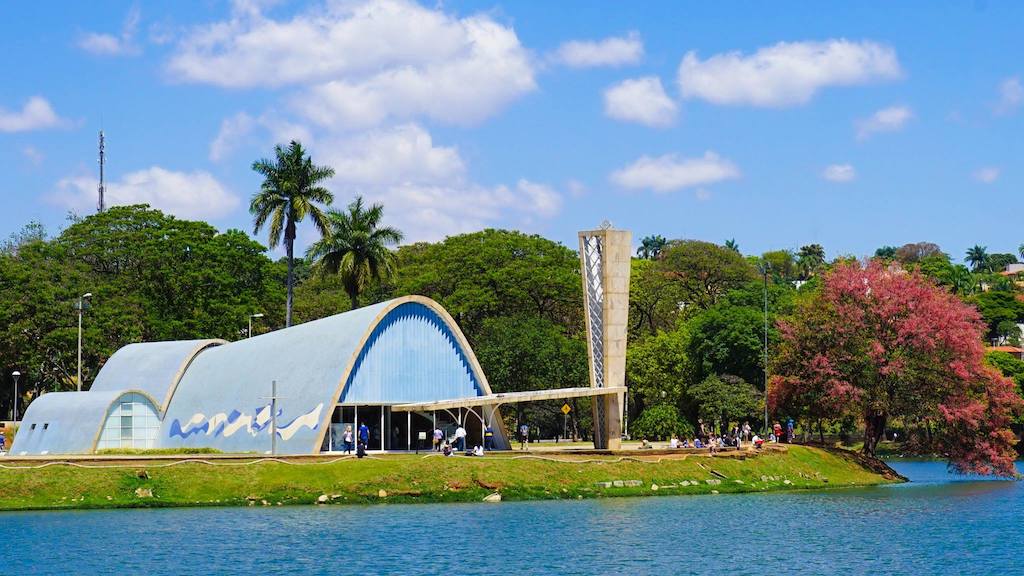
Another of the most incredible natural sites in Brazil, the Pantanal is virtually unpopulated. It’s an enormous wetland covering approximately 210,000 square kilometers and hosting an amazing variety of animals.
Definitely, one for the nature lovers, the wildlife here is unmissable if you like to see creatures in their natural habit. Another UNESCO World Heritage Site, the Pantanal Conservation Area actually consists of a group of four protected areas with a total area of 187,818 ha.
Positioned in western central Brazil at the south-west corner of the State of Mato Grosso, the protected site stewards 1.3% of Brazil’s Pantanal region, one of the world’s largest freshwater wetland ecosystems.
The headwaters of the region’s two primary river systems, the Cuiabá and the Paraguay rivers, are found here, and the wealth and diversity of its vegetation and animal life are magnificent.
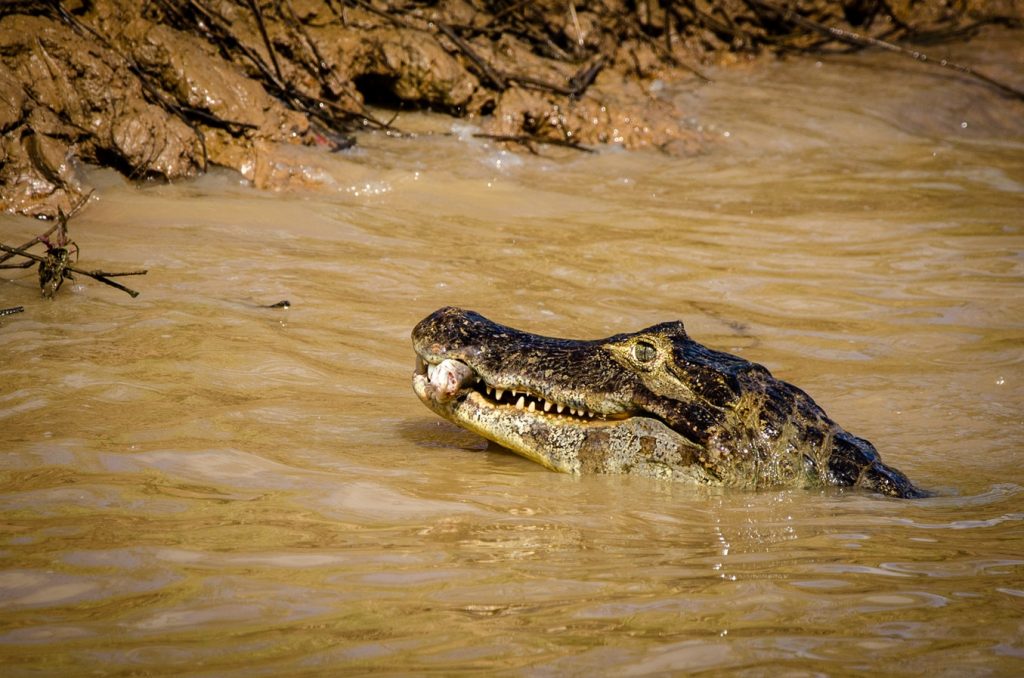
Belém, the largest city of the state of Pará in the country’s north, is the eastern gateway to the Amazon River.
2.5 million people reside in this tropical metropolis, which has benefited throughout its history from a position approximately 100 km upriver from the Atlantic Ocean.
While many might flit through this transit hub in a rush to more exotic adventures, you should spend a few days exploring the dynamic city filled with mango trees, vibrant markets, museums, and a growing restaurant scene. For a while during the rubber boom in the late 19th century Belem was known as the ‘tropical Paris; with electricity, grand monuments, streetcars, and a sophisticated European vibe – though today Belem is very much forging its own path.
The standout highlight has to be the colorful riverfront district Cidade Velha (old town) filled with Portuguese-colonial architecture similar to Lagos or Porto – with plenty of ornate churches, picturesque azulejo-tile houses, and an extensive 17th-century fort.
Another ‘must-see spot’ is the vast Ver-o-Peso open-air market located on Guajará bay’s docks and hawking exotic Amazonian fish, unknown fruit, and indigenous handicrafts. It is considered one of the largest markets in Latin America, and you can spend at least a few hours perusing the items on sale, interspersed with breaks for a gratifying bowl of pulped açai berries at one of the stands and a cold bottle of Tijuca beer to top it all off.
In the evening – try to catch an opera or performance at the Theatro da Paz, which would look right at home in Vienna or Buenos Aires .

We love Salvador, Brazil’s third-largest city, for its lively mix of cultures and styles, its 17 th and 18th-century architecture, and its endless vibrancy. This is the epicenter of Brazil’s Afro-Brazilian community and where the best music and culture can be found.
Of all the things to do in Brazil, make Salvador one of them. During the days, explore streets so picturesque that you feel like you have stepped back in time, especially in the center (Pelourinho); at night, take a ride on the 85 meters Art Deco Lacerda Elevator on your way to a delicious meal in one of the many restaurants. Architecturally blessed and culturally diverse, Salvador was the first capital city of Brazil and has it all.
In between times, chill on the beach. This is a city that likes to live, so enjoy being part of it!
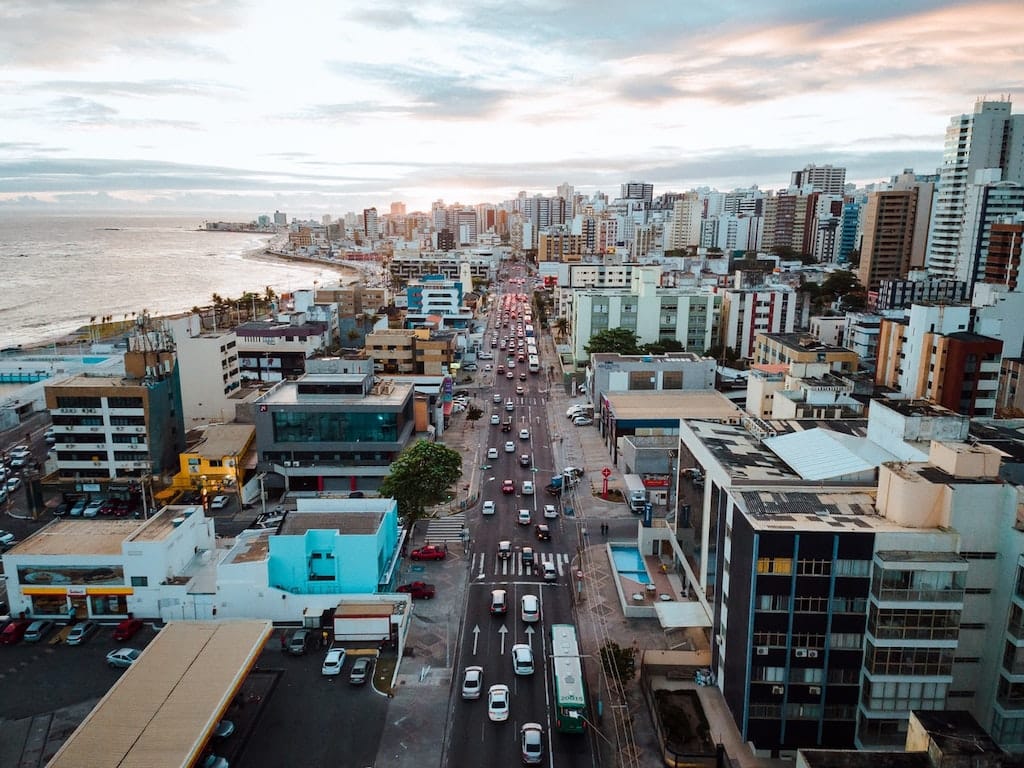
An improbable eco-tourism destination, the remote Chapada dos Veadeiros National Park in the central Brazilian state of Goiás is 650 square kilometers of big sky country. There are rolling hills, lush flora and fauna, dramatic canyons, and plenty of hiking trails to keep you occupied for at least a few days.
Rivers crisscross the park (and surrounding private land), creating a lattice of canyons, cliffs, and rivers – usually with a waterfall somewhere to allow for a refreshing dip at the end of the hike. There is an abundance of orchids, and iconic wildlife species like jaguars, armadillos, jaguars, and toucans.
Guides are no longer required to hike here, but if you want to learn about the biodiversity here, they are recommended. The Travessia das Sete Quedas hike, in particular, is simply magical, a 23-kilometer trail through a spectacular canyon and crossing the Rio Preto river twice. You can do it all in one day, or overnight in a campsite with seven small waterfalls nearby.
Chapada dos Veadeiros National Park access is from the nearby town of São Jorge, which connects to kooky Alto Paraíso de Goiás and the rest of the start.
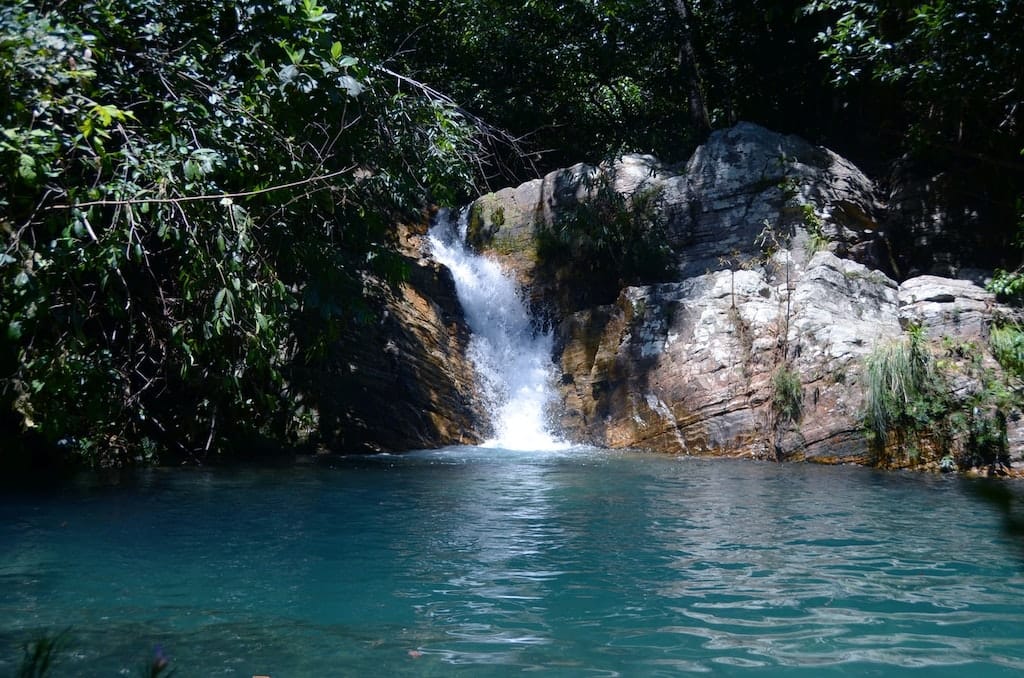
Who would have expected one of the top things to do in Brazil to be to visit wine country, but yes – the Vale dos Vinhedos Wine Region proves this marvelous country does have it all.
Located in the southern state of Rio Grande do Sul between the cities of Garibaldi, Bento Gonçalves, and Monte Belo do Sul, this area has a strong Italian influence. It also offers the unique properties required in terms of soil, climate, topography, and culture to create a desirable bottle of wine.
Vale dos Vinhedos covers 82 square kilometers (32 square miles) and is home to over 30 wineries and an influential national grape and wine research bureau. Miniature estates sit alongside larger wineries providing plenty of options for wine tours, with most allowing drop-in visitors.
Even for those who don’t like wine, the attractive area also houses a cornucopia of cheese factories, art workshops, craft houses, restaurants, and boutique accommodations. The work of the Italian immigrants over the last 150 years has culminated in Vale dos Vinhedos getting a reputation for outstanding vintages, particularly Cabernet Sauvignon and Merlot. It was even recently named one of the world’s ten best wine travel destinations recently, joining the likes of Queenstown in New Zealand or Champagne in France.
While not yet swamped with international tourists, the Vale dos Vinhedos is exceptionally popular with locals and has a well-established collection of rural inns and tourist routes. You’ll be rubbing your eyes and thinking you have been transported to Italy or Northern California.
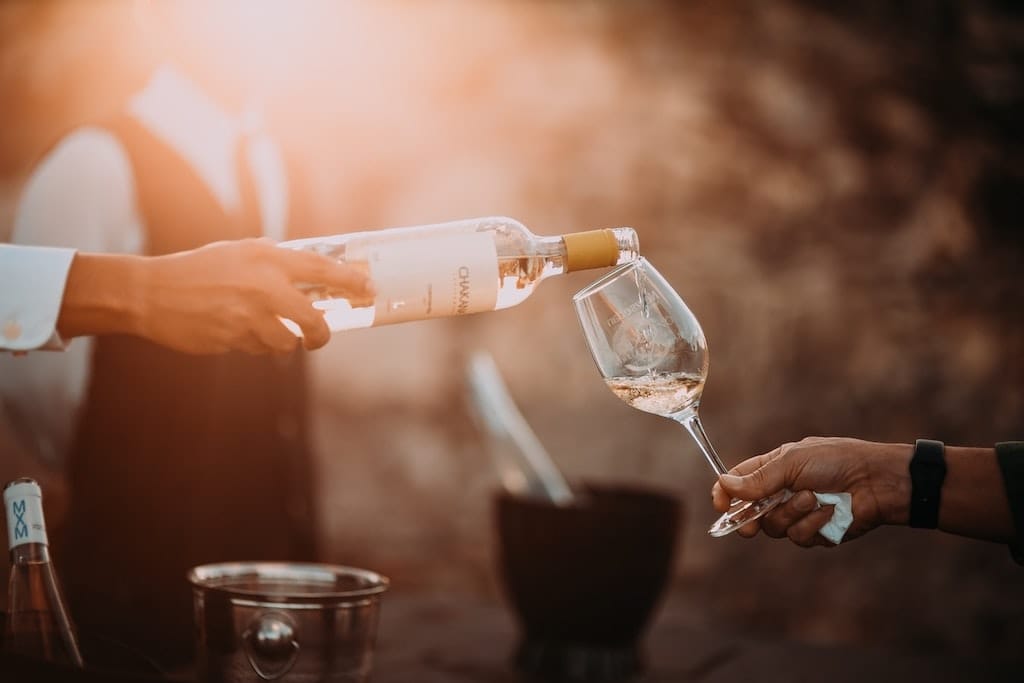
One hundred eighty kilometers from Rio de Janeiro is Armação dos Búzios – or just Búzios for the devoted, a renowned seaside town where Rio’s elite flock each weekend.
An urbane Eden of greenery, clear waters and narrow cobblestone streets create an enduring appeal that has seen Búzios transform over the past 50 years from a small fishing village to Brazil’s St. Tropez. Located on a jutting peninsula, Búzios is a collection of three settlements and 17 beaches with oceanfront dining, an arresting harbor, and all the expected tourist amenities.
There is everything from hostels to high-end hotels and more options for relation, shopping, and nightlife then we could ever cover. It is hard to know where to start. And then there are the off-shore islands, ideal for diving, world-class gastronomy, world-class galleries, and boutique shopping.
But our favorite activity has to be people watching here. Buzios attracts the most fashionable people from not just Brazil but around the world. So, as you might imagine, one of the best things to do is simply choose a seat at a pavement cafe, order a Caipirinha, and watch the gorgeous people go by…
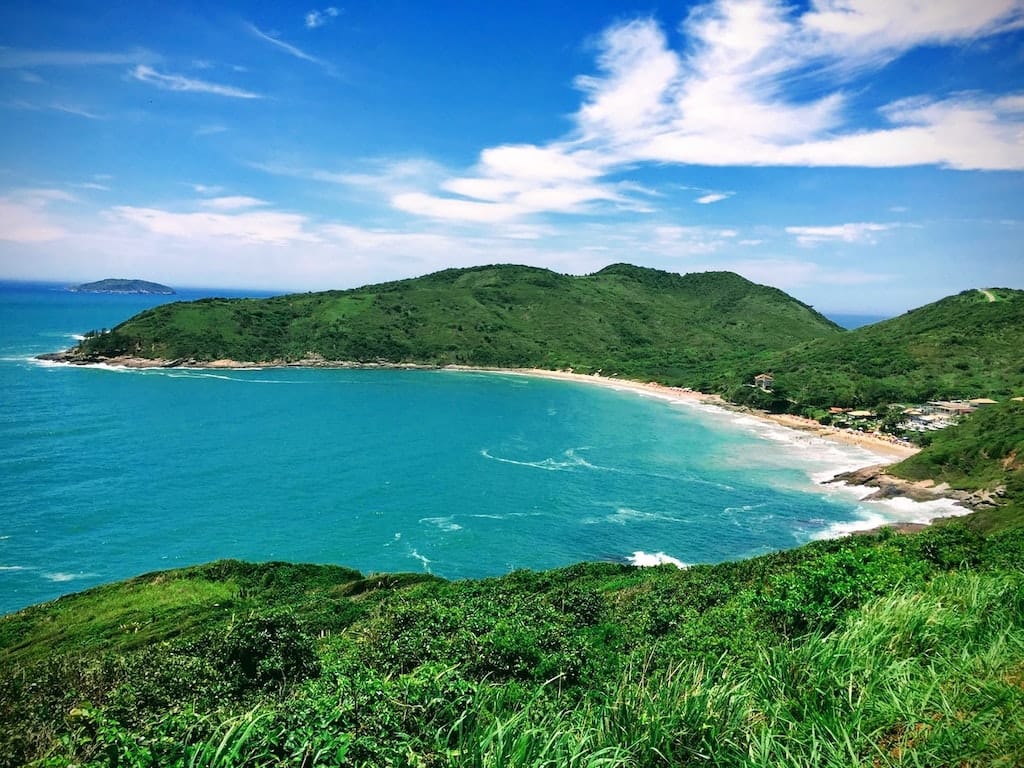

- Amazon River
- Galápagos Islands
- Indonesian Archipelago
- Mekong River
- Irrawaddy River
- India Cruises
- Pacific Coast
- Patagonia Cruises
- Machu Picchu
- Iguazu Falls
- Brazil Travel Guide
Top 10 Brazil Tourist Attractions You Have To See
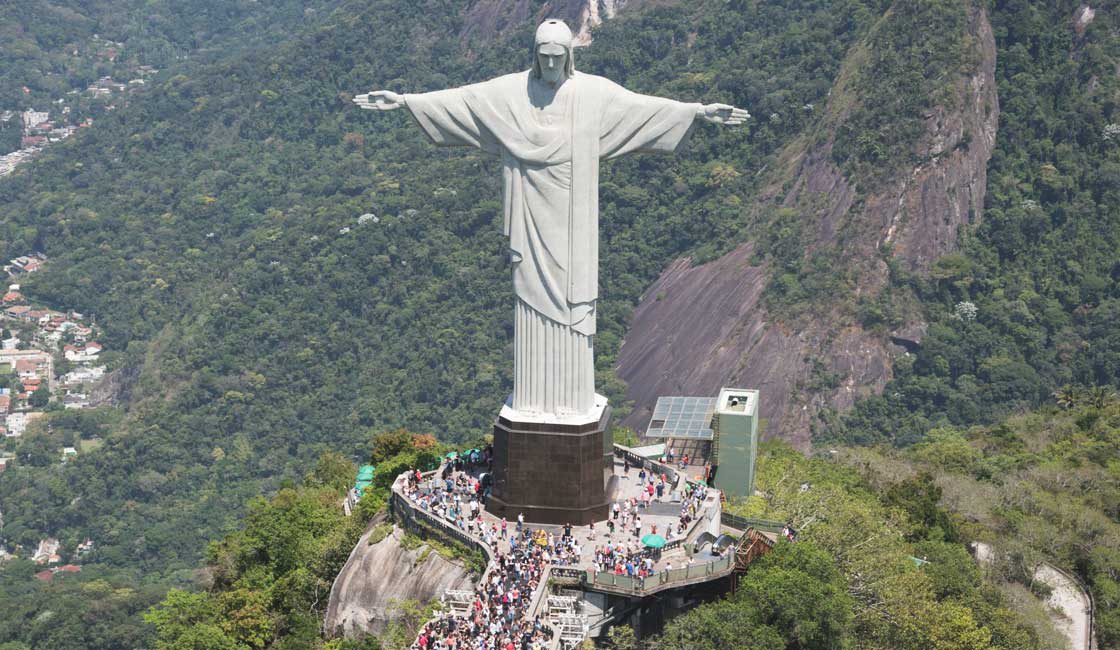
The largest country in South America, Brazil occupies almost half the continent. Nearly all of it is in the Southern Hemisphere, and much of it is tropical, with vast stretches of rainforest filled with exotic plants and wildlife. The country’s 4600-mile-long Atlantic coast is lined with golden-sand beaches, and its interior is filled with mineral resources. Portugal was the colonial power that ruled Brazil until 1822. The national language is Portuguese and a strong Portuguese influence is evident in Brazil’s colonial architecture and decorative arts. Below are what we consider the top attractions worth visiting on a vacation to Brazil .

Cristo Redentor
Christ the Redeemer
One of Brazil’s most iconic monuments and Rio’s most visited attraction , the statue of Christ the Redeemer was completed in 1931 and stands 98 feet tall, with horizontally outstretched arms spanning 92 feet. The work of Polish-French sculptor Paul Landowski and Brazilian engineer Heitor da Silva Costa is made of reinforced concrete clad in a mosaic of thousands of triangular soapstone tiles. The statue stands on a square stone pedestal about 26 feet high, which itself is situated on a deck atop the mountain’s summit. The base encloses a chapel that is popular for weddings. The statue has become emblematic of both the city of Rio de Janeiro and the whole nation of Brazil and is the largest Art Deco-style sculpture in the world.
In addition to the symbolic importance within the Catholic community, the statue is also one of the New Seven Wonders of the World and provides spell-binding views over Rio de Janeiro and the bay from the summit of Corcovado, 2310 feet above the city. The area on which it stands is part of the Tijuca National Park, and a rack railway climbs two miles to a broad plaza at the top. A mid-point stop on the railway leads to trails through the Tijuca National Park, replete with springs, waterfalls, and a wide variety of tropical birds, butterflies, and plants.

Way to experience the falls
Iguaçu Falls
At the point where Brazil, Paraguay, and Argentina meet, ten miles before joining the Parana River, the Iguaçu River flows over rough, uneven ground, and then, amidst the exuberant forest, spectacularly hurls itself into a semicircular chain of 247 irregular waterfalls that thunder down into the gorge below. Just above the falls, the river is constricted to a quarter of its usual width, making the force of the water even stronger. Some of the falls are more than 330 feet high and they cover such a broad area that you’ll never see all of them at once, but you do get the broadest panorama from the Brazilian side.
A visit to the Iguazu falls is a heart-stopping, visceral experience, while the power and noise of the cascades, which extend nearly 1.85 miles, will live forever in your memory. The falls lie split between Brazil and Argentina in the UNESCO-acclaimed Iguaçu National Park, where subtropical rainforests are home to more than 1,000 species of birds and mammals, including deer, otters, ocelots, and capybaras. Catwalks and a tower offer different perspectives, and one bridge reaches all the way to the largest water curtain, known as the Garganta do Diabo (Devil’s Throat), which drops more than 262 feet into a creamy white pool. You can cross to the Argentinian side for closer views from catwalks that extend farther into the center of the falls. The two sides offer different perspectives and views, so it’s a good idea to plan to see both.
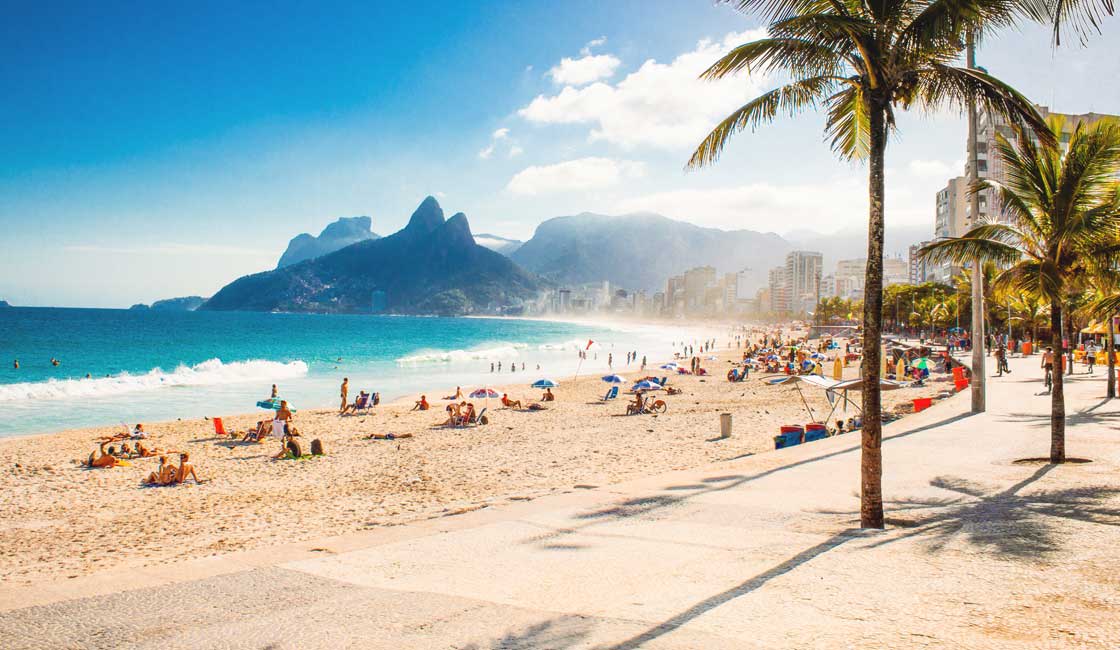
Copacabana, Rio de Janeiro
Occupying a narrow strip of land between the mountains and the sea, Copacabana − downtown Rio’s most fashionable district − follows Avenida Nossa Senhora de Copacabana, and is famous for its magnificent two-and-a-half-mile curved beach. Skyscraper hotels, apartment houses, cafés, shops, nightclubs, restaurants, theatres, live music bars, street fairs, and pubs line the waterfront. The neighborhood is a blend of Brazilian soul; it is crowded, rowdy, and traditional. However, the most powerful draw in Copacabana is still the fantastic view of the coast and the incredible white-sand beach alongside the rolling surf.
The beach is separated from the buildings and the traffic by a broad promenade paved in black and white mosaic in a rippled pattern inspired by Rocio’s Square in Lisbon, Portugal. The huge strip of sand bordering Copacabana Beach is not the result of a natural process; during the ’70s, a large land reclamation increased the area of the beach, which is a popular playground filled with sun-worshippers whenever the weather is fine.
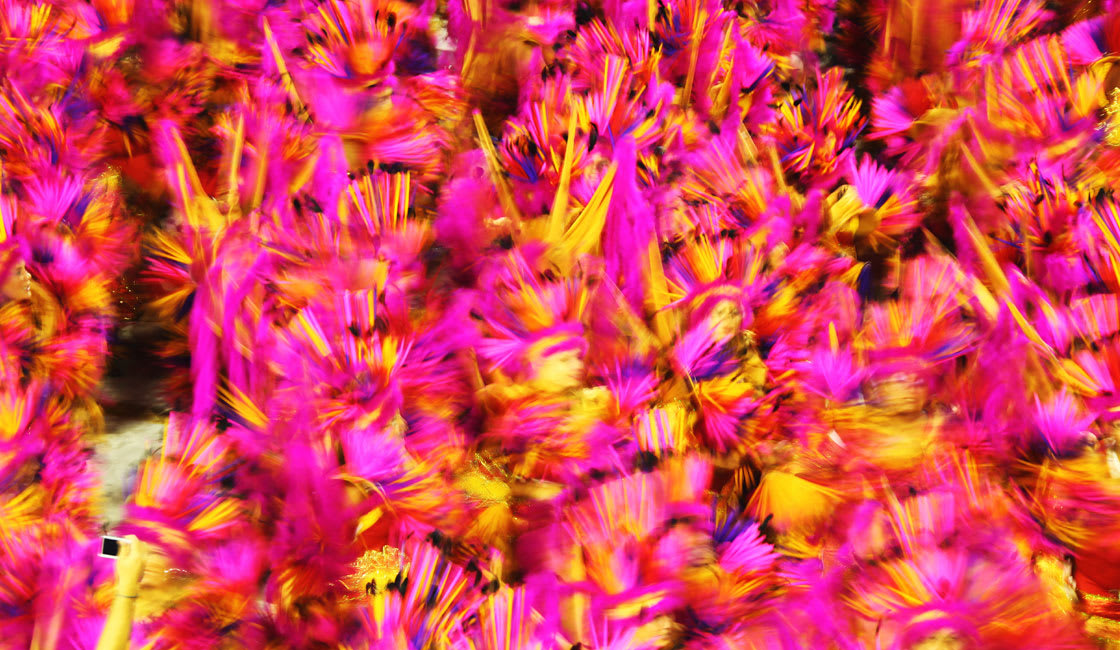
Carnaval (Carnival), Rio de Janeiro
Rio de Janeiro Carnaval is one of Brazil’s top tourist attractions − the mother, the mecca, the king of all carnivals. Every year, just before the beginning of Lent, Rio de Janeiro transforms into the biggest party on the planet, a party that is attended by five million people from all around the world. Few shows match Carnaval’s extravaganza for color, sound, action, and exuberance. This is not just another boisterous street party, but a carefully staged showpiece. The highlight of attending Rio Carnaval is witnessing the world-renowned Samba Parade hosted in a purpose-built stadium called the Sambódromo, where dancers and musicians from the competing samba schools strut their stuff in a dazzling explosion of brilliant costumes.
Carnaval is an exhilarating time to be in Rio, all the businesses unrelated to Carnaval shut down and the Brazilians completely embrace the carnival spirit, joining street parties across the city. You’ll also find Carnivals in Salvador, Bahia, Recife, and other Brazilian cities.
Bordered by Arpoador Beach on one end and Leblon Beach on the other end, Ipanema Beach is considered one of the main centers of activity for the city of Rio and one of the most expensive places to live. Known as the “Little Paris” of Rio, it is renowned for its avant-garde art galleries, bookstores, movie theaters, hotels, restaurants, and cafés, which make it a popular social zone year-round. The same wave design of Copacabana’s wide promenade continues here, separating the sand from the buildings. Sunday is especially busy, with an antique market at Praça de Quentaland and the Feira de Artesanato de Ipanema, alive with music, street food, art, and handcrafts with vendors selling everything from wooden dolls to swizzle sticks topped with parrots, making it fun a festive for families visiting Brazil .
Pelourinho, Salvador
Pelourinho is the historic city center of Brazil’s former colonial capital, Salvador . The cobblestoned streets and vibrantly colored buildings are a picturesque example of how the African, indigenous, and European cultures, which were thrown together in Salvador, have converged throughout the centuries. This old quarter has been named a UNESCO World Heritage site for its exceptional collection of 17th- and 18th-century colonial buildings, the finest such assembly in South America. This is where you’ll find Salvador’s most beautiful churches and monasteries, built at a time when Brazil was the source of Portugal’s riches, and the plentiful gold was lavished on the colony’s religious buildings.
The finest and most opulent of the city’s churches is São Francisco, built in the early 1700s and filled with intricate carvings covered in gold. Pelourinho means “whipping post” in Portuguese, and this was the location of the slave auction in the days when slavery was common. Slavery was outlawed in 1835, and over time, this portion of the city, though home to artists and musicians, fell into disrepair. In the 1990s, a major restoration effort resulted in making the area a highly desirable Brazil tourist attraction.

Ipiranga Museum
Art Museums of Sao Paulo
Sao Paulo holds some of the best collections of fine arts in Latin America, and the buildings in which they are housed are architectural landmarks as well. The Museu de Arte, MASP, is considered the premier art museum in Brazil, displaying the continent’s most comprehensive collection of Western art, with representative works by artists from Classical antiquity, the Renaissance, the Baroque period, along with plentiful works by Brazilian and other Latin American artists. The museum is a Modernist landmark conceived by Italian architect Lina Bo Bardi; bright red concrete elevates the building structure above ground making the museum stand out from the neutral-colored high-rise buildings that surround it. There are 73 bronze sculptures by Degas and works by Renoir, Manet, Van Gogh, Matisse, Picasso, and Miró.
At the Museu de Arte Contemporânea, in Ibirapuera Park, you’ll find more than 8,000 works of art. This is one of Latin America’s largest collections of 20th-century Western art, comprising the most important artists, art movements, and tendencies of modern and contemporary art. It includes works by Picasso, Chagall, Kandinsky, Miró, and Modigliani along with major Brazilian painters. Additionally, Museu do Ipiranga, set above Versailles-inspired formal gardens, houses paintings, and decorative arts.
For a different type of art, don’t miss Batman’s Alley, an open-air gallery of street art by local and international artists. It is in the bohemian Vila Madalena neighborhood, where you’ll also find art galleries showing the works of well-known and rising Brazilian artists and craftspeople.
Cathedral of Brasilia
This striking modernist building is an architectural icon of Brazil, designed by renowned architect Oscar Niemeyer. The round church has 16 concrete columns representing hands raised to heaven. The columns converge to a central elevated circle, soaring 138 feet towards the sky while allowing the natural light to flood in through a glass roof offering a glimpse to the heavens with angels suspended above the congregation. Not only that but the building is surrounded by a shallow pool that reflects its beauty.
Botanical Garden of Curitiba, Paraná
The postcard-worthy botanical garden is one of Curitiba’s main attractions and rightly so because it has an impressive and colorful garden and has a fantastic greenhouse. The Park is packed with flower gardens, with ideal places for picnics. Moreover, the external garden has a lovely French style with beautiful designs and walks between the areas colored by flowers and a fountain that provides beautiful photo opportunities. Inside the glass-and-steel greenhouse, it is possible to see species of plants typical of tropical areas.
Sugarloaf Mountain, Rio de Janeiro
Sugarloaf Mountain is arguably one of the most important tourist attractions in Brazil. The rounded rock peak juts out of a tree-covered promontory, rising nearly 1300 feet above the beaches and the city. Its summit offers jaw-dropping views of Rio and the harbor, together with the thrill of riding suspended in a cable car between SugarLoaf and the Morro da Urca, a lower peak from which a second cableway connects to the city. Rio’s first settlement began below these peaks, near the long Praia da Urca beach, and you can tour one of the three early forts there, the star-shaped Fort São João.
While Rainforest Cruises aim to provide accurate and up-to-date information, we make no representations as to the accuracy or completeness of any information herein or found by following any link on this site. Rainforest Cruises cannot and will not accept responsibility for any omissions or inaccuracies, or for any consequences arising therefrom, including any losses, injuries, or damages resulting from the display or use of this information.
You may also like
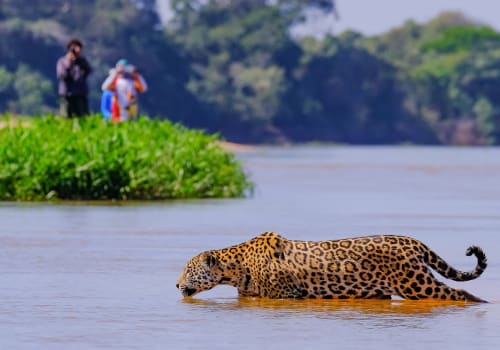
Best Places To Visit In The Pantanal To See Wildlife
One of the largest, most pristine, and most biologically vibrant wetlands in the world, the Pantanal offers South America’s all-around best wildlife-viewing opportunities. The “Kingdom of Waters,” as it’s sometimes called, easily […]
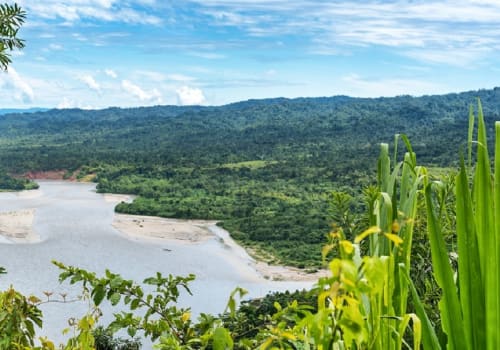
5 Best Places To Visit The Amazon Jungle To See Wildlife
One simply runs out of superlatives describing the rainforest of the Amazon Basin (the so-called “Amazon jungle” of popular conception). About the size of the conterminous United States, this biggest river basin […]
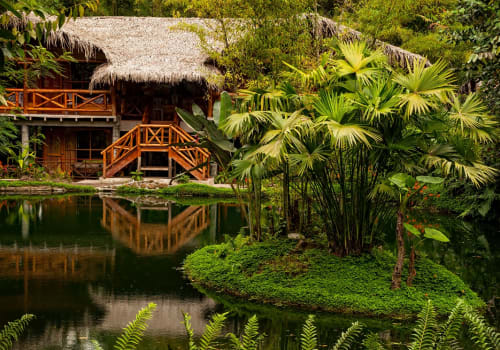
8 Luxury Amazon Rainforest Hotels: Where To Stay In The Amazon
The Amazon Rainforest is by far one of the most mysterious and exciting locales to visit in all of South America. Teeming with abundant wildlife, exotic trees and plants, and even indigenous […]
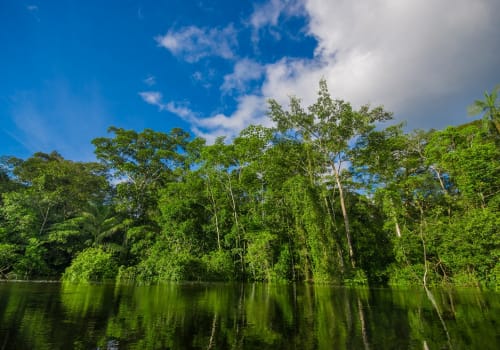
11 Tourist Attractions In The Amazon Rainforest You Must See
When it comes to untouched nature in a wildlife-rich environment, the Amazon Rainforest is one of the last places on earth to explore. Even hearing the word Amazon conjures up images of […]
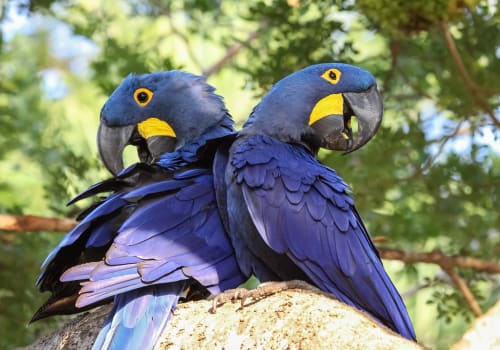
Pantanal Honeymoon | Lodges & Itinerary Ideas For Lovers
Are you looking for a honeymoon destination full of romance and adventure at the same time? Perhaps one in a remote location in a South American country full of different landscapes and […]
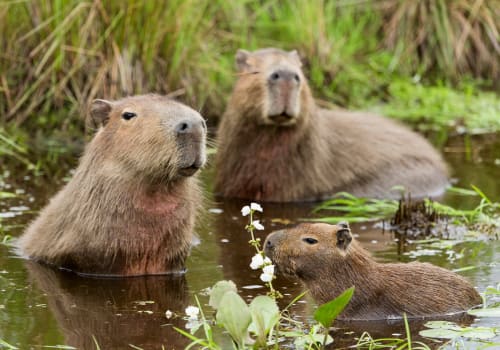
Pantanal Family Travel: Top 7 Things To Do With Kids
If you’re looking for a new destination for your family vacation this year, why not consider one of the most remote and naturally unique regions in all of South America? The Pantanal […]
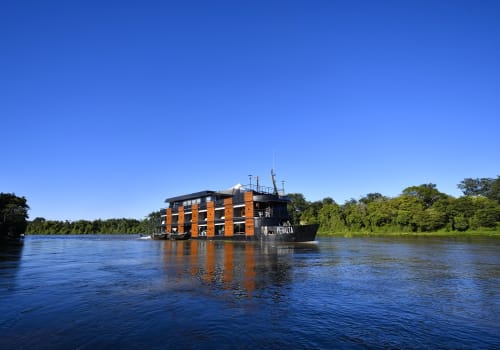
Where To Stay In The Pantanal
While exploring the Pantanal wetlands region in Brazil, where you lay your head at night is an important decision to make. While you may worry your options are limited, consider that several […]
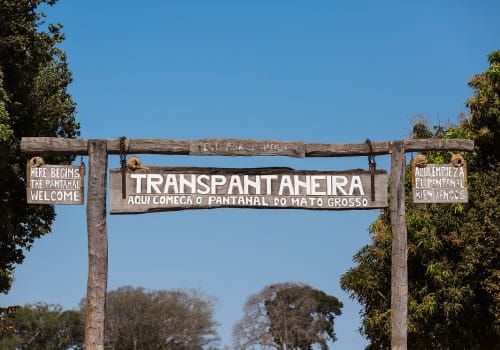
5 Amazing Attractions You Must See In The Pantanal
If you’re looking for a South American adventure unlike any other and a location not teeming with crowds, then head to the Pantanal region of Brazil. Tucked within the western part of […]
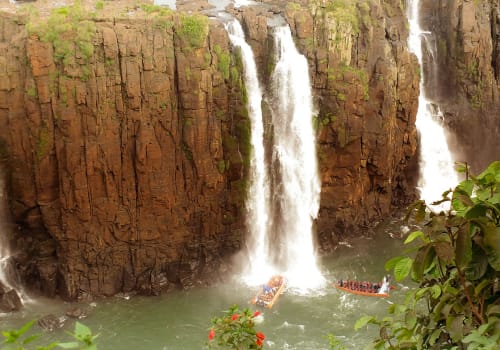
Brazil Vs Argentina: Which Side Of The Iguazu Falls Is Best?
Brazil vs Argentina, it’s a long-standing battle. The two countries compete in regards to almost everything: from their football teams to their natural wonders, from their tourist attractions to their barbeques, to […]
On the Lookout for Expert Advice & Offers?
Join over 20,000 discerning travelers and be the first to receive our monthly exclusive discounts, inspiring travel content and expert tips, straight to your inbox.

- Charter (Private)

DEAL FLASH: 2 For 1 On Luxury 4-Day Amazon River Cruise Thanksgiving Departure
- Group Enquiry? NEW

Places to Visit in Brazil
- Places To Visit
Brazil Places to Visit
Here are some of the best places to visit in brazil:, rio de janeiro.
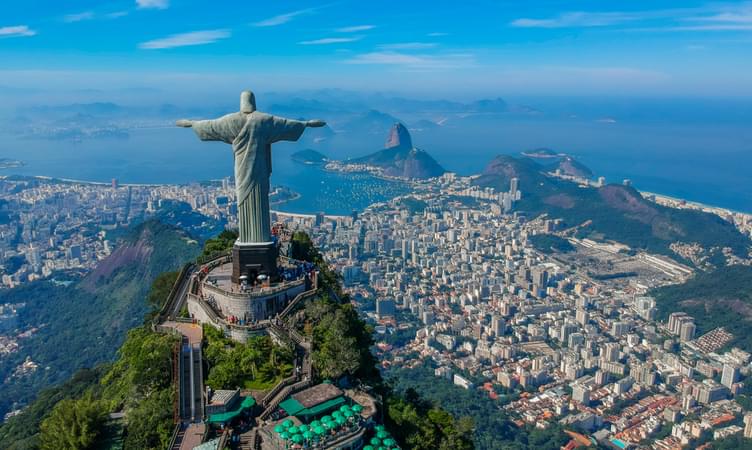
Nestled between the mountains and the sea, the very location of Rio de Janeiro makes it spectacular so much so that it has been acclaimed as the world heritage site for being the “the staggeringly beautiful location for one of the world's biggest cities" by UNESCO. However, the accolades of UNESCO weren’t solely for the natural setting of the city but also for the planned green space, urban cultural landscape and the right blend of architecture, all of which have contributed very well in the growth of the city.
Rio de Janeiro is also the second major city of Brazil has also served as the capital of Brazil from 1763 to 1960. Founded by the colonists from Portugal in the mid 1500s, the city used to be the port for the shipment of gold from its inland mining areas.
All through the history, Rio always seemed very aware of its physical assets - long crescent beaches, soaring mountains behind it and the towering Sugar Loaf above the harbor. All these are today the prime tourist attractions of the city which have amplified the landscape with distinguished buildings from the different era of the history as well as the green parks and spaces that add to the city’s landscape.

Even though the city is not too large in size, it is considered to be one of the most important industrial and commercial centers of the country. On the basis of what the Ministry of Tourism, Brazil had to say, Fortaleza is found to be the “second-most desired tourist destination in Brazil.” Some of the famous beaches of the city include the bech of Futuro and the Iracema. Since beaches are commonly used here, the majority of the tourists also indulge in watersports. Fortaleza consists of Brazil’s largest oceanariums known as Acquario Cear?. Found to be nestled away on the Praia de Iracema coastline in Fortaleza, the oceanarium has been recorded to have attracted over 12 million visitors annually. You can check out the Beach Park - a theme park to satisfy all your adventure fantasies. There are many other exciting experiences that you can indulge in including checking out the marvellous night-life and the beach-front restaurants are worthy of your time. Another one of Brazil’s gems that has a typical tropical climate. Some of the best times to visit this city are during summers, which would be between February and April.
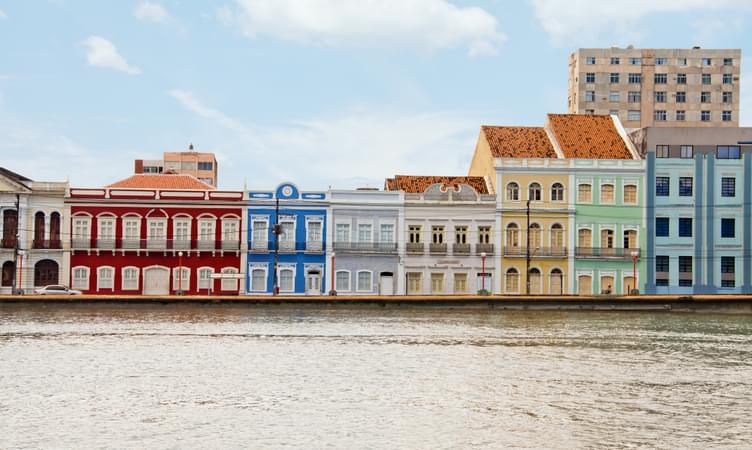
Located in the northeast corner of South America, Recife was founded in 1537 thereby qualifying as one of the oldest cities in the world. It is the capital city of Pernambuco and is primarily known for housing the largest scale of production for sugar canes. The city is home to many beautiful rivers, beaches and tiny islands. The name Recife itself can be accredited to the fact that the city’s shoreline is filled with magnificent-looking stone reefs. Due to the nature of the city, the place is also fondly referred to as the “Brazillian Venice.” Among the places to visit in Brazil, Recife should top your list. Why? The spirit of Recife is always about being up and about and the folks herein indulge in many different celebrations all throughout the year. You should surely check out the New Year celebrations starting at the Praia de Boa Viagem beach located in Old Recife. Recife consists of numerous local markets including the Mercado de S?o Jos? are worth a visit or two. Featuring an old, iron construction - these markets give you a vintage feeling. You can also visit the Fort Cinco Pontes, also known as the ‘Fore of Five Points.’ The weather is quite friendly all year round. Most days are tropical but the winter can go down to 1 degree. We recommend visiting Recife between March and June to enjoy the tropical weather.
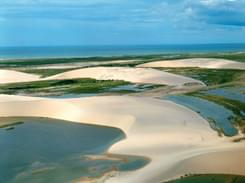
Brasilia - named inspired by Brazil itself serves as the main seat of the government. Since it is home to the federal government, it is understood to be a federal capital of Brazil. This well-planned city is also home to some of the most important buildings in Brazil including the Banking sector and the Embassy sector. The city is filled with parks and beaches all around. Although modern by heart, they haven’t commercialised all aspects of the city but have made sure everything is kept intact. The city is filled with modern structures all over and thus, was declared to be a World Heritage Site by UNESCO in 1987. The city’s planning was considered to be quite advanced and urban. Another one of the architect’s paradise, many even refer to Brasilia as the “City of Design.” Being the federal capital doesn’t stop Brasilia from being just as happening as any other party location. There are festivals taking place all throughout the year. The festivals are often accompanied with different parades and unique types of celebrations. Brasilia itself features a young, vibrant art’s scene. Some of the world-famous artists have hailed from Brasilia including Bruno Giorgi, Alfredo Volpi, Burle Marx and Marianne Peretti to name a few. Brasilia is home to tropical, savanna-type climate. There are a few months during the year, wherein it does get mild however it is best to experience this city during its winter months. The best time to visit Brasilia is between December and March.
.jpg?gravity=center&width=752&height=450&crop=fill&quality=auto&fetch_format=auto&flags=strip_profile&format=jpg&sign_url=true)
Capital city of Amazonas, Manaus is home to Negro and Solim?es rivers and is qualified as the second oldest city in Brazil, as it was discovered in 1669. Initially, owing to its size, Manaus was actually considered to be a fort. It had a different name too. Back in those days, it was called Fort of S?o Jos? do Rio Negro. Among the tourist places in Brazil, many fondly refer to Manaus as ‘The City of the Margins of the Black River.’ Manaus acts as the perfect destination to lay low for a bit before you go exploring the incredible flora and fauna. It’d be interesting to take a boat ride through the black waters of the Negro River. If you’re around the region, you will surely be informed of the ‘Meeting of the Waters’ point wherein the black waters of Negro meet the brown waters of Solimoes River. Manaus is known for the happening nightlife it offers to its visitors. Imagine partying hard at the beachfront with some of the most interesting travelers from around the world - that’s just the kind of vibe that Manaus holds. Compared to most other cities in Brazil, Manaus has a humid climate. The best times to visit Manaus would be between December and March because that’s when most celebrations take place, as is the case with most Brazil places to visit.
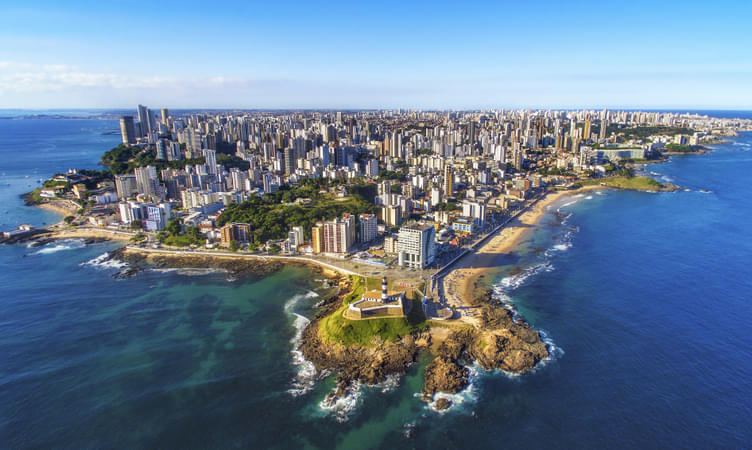
The name ‘Salvador,’ is an abbreviation of a longer version, “S?o Salvador da Bahia de Todos os Santos.” This literally stands for ‘Holy Savior of the Bay of All Saints.’ Being the capital city of Bahia, the city is home to one of the oldest colonial settlements in the world, let alone Brazil places to visit. Salvador’s Porto da Barra Beach awaits you. Named as one of the best beaches in the world, the region is a party hub for anyone looking for adventure. The beaches are ideal for watersports including swimming, sailing and several other underwater activities. Stellar examples of rich Portuguese colonial architecture can be found in Salvador - a sight that you cannot absolutely miss. In fact, the whole Pelourinho area located in the upper town region of Salvador is classified as a ‘World Heritage Site’ by UNESCO. You will find yourself indulging in the tasteful cuisines that the city has to offer. The city is also known for its art - in several forms including music and dancing - making it an interesting choice when it comes to places to visit in Brazil. The weather, unlike many other cities in Brazil, is quite pleasant. The temperatures here are relatively consistent with most months being hot. It is only between April and June that it rains. The best times to visit Salvador would be between December and March, as is the case with most other Brazil places to visit.
Alter do Chao

Alter do Cha? stands out as one of the most important administrative districts. Many even refer to Alter do Cha? as the ‘Brazilian Caribbean,’ given its location, which is why it is an important place to include in your list of places to visit in Brazil. Alter do Cha?, considered as the main tourist spot in the state of Santar?m, is home to some of the most incredible-looking freshwater beaches. Known as the ‘Island of Love,’ this small slice of paradise is located a few kilometers away from the Alter do Cha? city centre. Bustling at the heart of the city is a vibrant arts community. The region, Arariba Cultura Indigena is what comes to mind when we talk about art. If you’re at the Island of Love, you might want to go rowing in the boat and check out the crystal clear water. When it comes to Alter do Cha?, art doesn’t just limit itself to canvases. Be it ceremonial costumes, necklaces or even home decor - there’s something unique that you are sure to find among the Brazil places to visit. Tourists from all around the world come visiting during the low-tide months, which is between August and December, especially because of how calming the waterforce can get. However, the best months to visit Alter do Cha? are between December and April.
Belo Horizonte
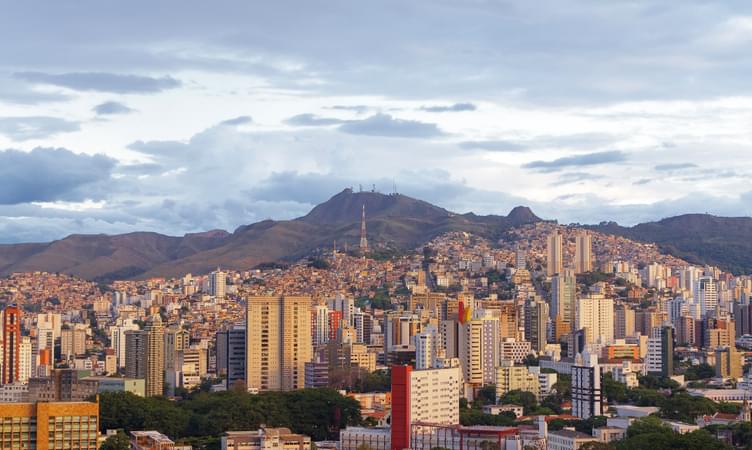
The words Belo Horizonte literally translates to “A Beautiful Horizon” in English. It should be on the top of your places to visit in Brazil list. History suggests that Belo Horizonte is among the first cities in Brazil that undertook the modern-style of planning. Greenery all over, there are plenty of parks all throughout the city that you can check out as well, including the Baleia State Park as well as the Serra do Rola-Moca State park. The city is a paradise for architecture lovers as it is home to some of the best works till date. Chief among the best works of architecture is the Pampulha Complex. The good-natured city is extremely serious about conserving its flora and fauna and thus, you will find multiple environmental education projects all throughout. Some of the most common activities that you can indulge in while you’re here is visit the Bela Horizonte Zoo. The Zoo, which comes under the protection of the Ministry of Conservation Brazil, is constructed over a massive 1.4 million square meters. Belo Horizonte has mild weather all throughout the year, there are no extremes on this one. The city is pleasant all throughout the year but we recommend visiting during summers as the greenery just pops up the whole atmosphere.
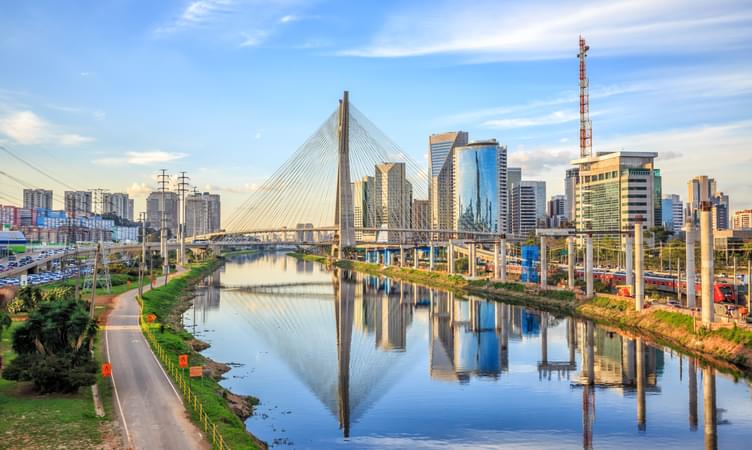
S?o Paulo is the most populated city of Brazil. The city is recognised as the capital of the surrounding state of S?o Paulo. Some of the wealthiest people are inhabitants of this city. There are numerous photo-worthy spots around the city as well, which makes it worth it in the places to visit in Brazil. For example there is the narrow alleyway of Vila Madalena. While you’re at it, do check out the luscious greenery of Ibirapuera Park. Another location that is straight out of a postcard is the Municipal Theatre - which is primarily based on the structural design of the Paris Opera House. This theatre is known to host musical and dance performances by world-famous artists. Be sure to check out one of the shows, if you’re passing through. There are a lot of activities that one can take part in while in S?o Paulo. Chief among them would perhaps be visiting the Avenida Paulista, the main financial and cultural centre of the city. The best of these restaurants and contemporary centers can be found in S?o Paulo’s Avenida Paulista region. The most popular museum of Brazil known as MASP is also located in this region. The temperatures here are relatively consistent with most months being hot. The weather is quite friendly all year round, with most days being tropical however, we recommend visiting between March and June.

Other Attractions
The pantanal.
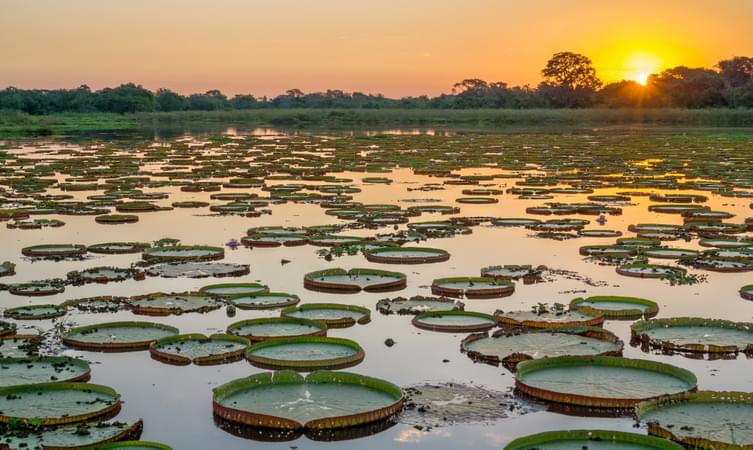
The Amazon Rainforest

Sao Paulo Museum Of Art
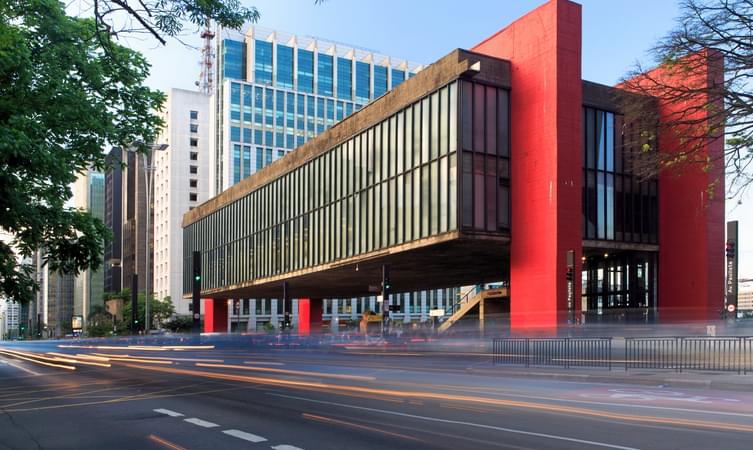
Chapada Dos Veadeiros National Park
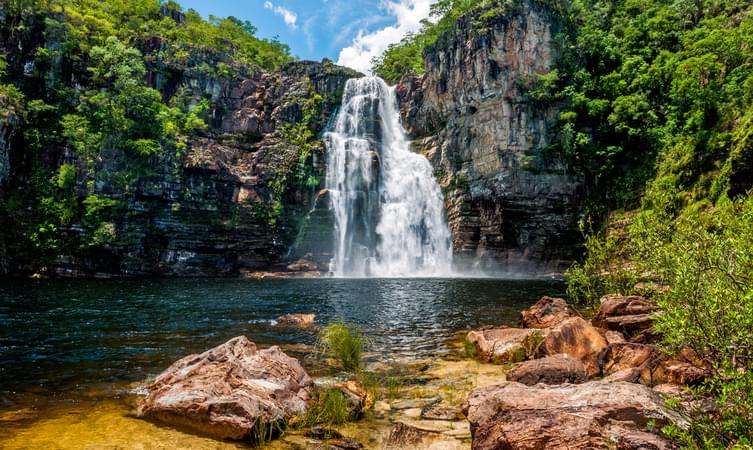
Lencois National Park
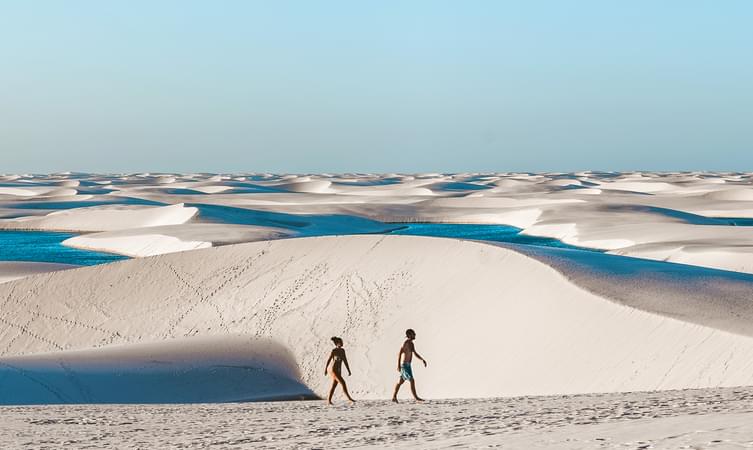
Arraial Do Cabo
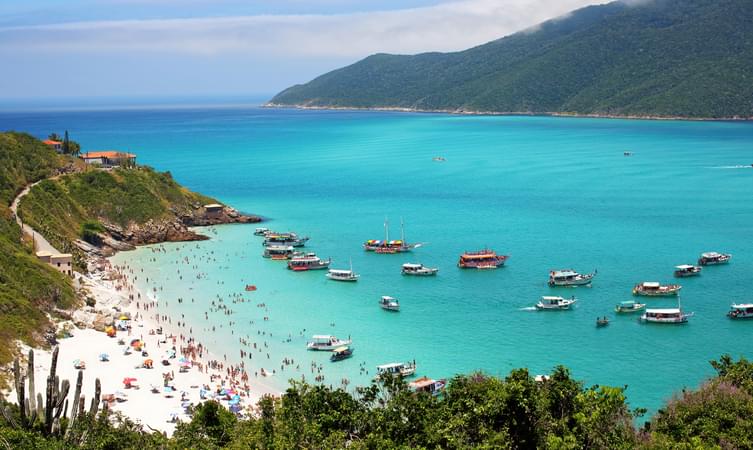
Museu do Ipiranga

The Museu do Ipiranga, nestled in the heart of São Paulo, Brazil, stands as a magnificent tribute to the rich history and cultural heritage of this vibrant nation. With its grandeur and historical significance, it beckons visitors from far and wide to immerse themselves in the tapestry of Brazilian history.
As you step through its gates, you're transported on a journey through time, where the past comes alive through captivating exhibits and artifacts. The museum's expansive collection beautifully showcases Brazil's evolution from its indigenous roots to the bustling metropolis it is today.
One cannot help but be awestruck by the architectural marvel that is the museum itself. Its majestic facade, adorned with intricate details and adorned with the Brazilian flag, commands admiration and reverence. Designed by renowned architect Tommaso Gaudenzio Bezzi, the building is a testament to the grandeur of Brazilian architecture.
Inside, visitors are treated to a treasure trove of artifacts spanning centuries. From ancient indigenous relics to colonial-era artifacts and modern artworks, the museum offers a comprehensive overview of Brazil's diverse cultural landscape. Each exhibit is meticulously curated, offering insights into Brazil's history, art, and societal development.
Santa Teresa

Santa Teresa in Rio de Janeiro is a bohemian neighborhood nestled on a hillside, offering stunning views of the city below. Known for its charming cobblestone streets, vibrant art scene, and eclectic mix of cafes and galleries, Santa Teresa exudes a unique cultural vibe that attracts both locals and tourists alike.
Florianōpolis
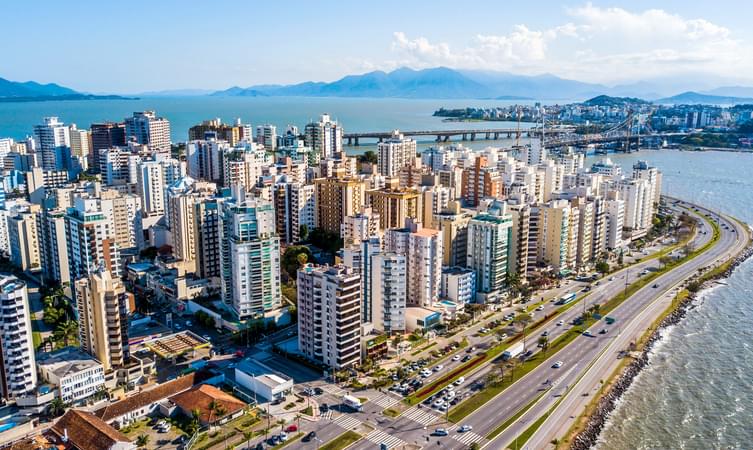
Mount Roraima
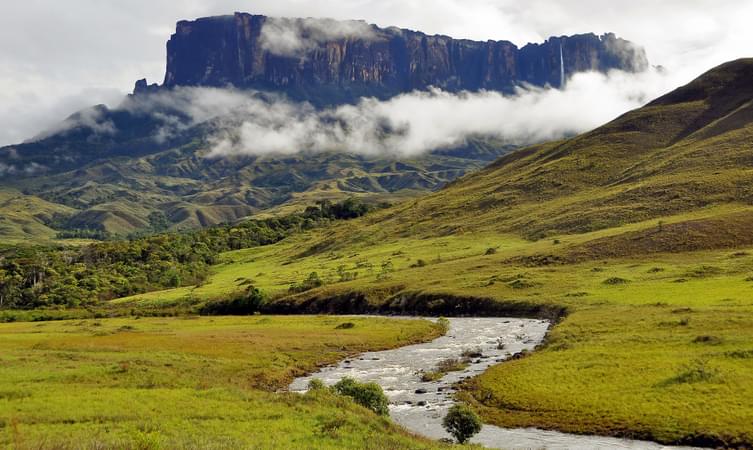
Chapada Diamantina National Park
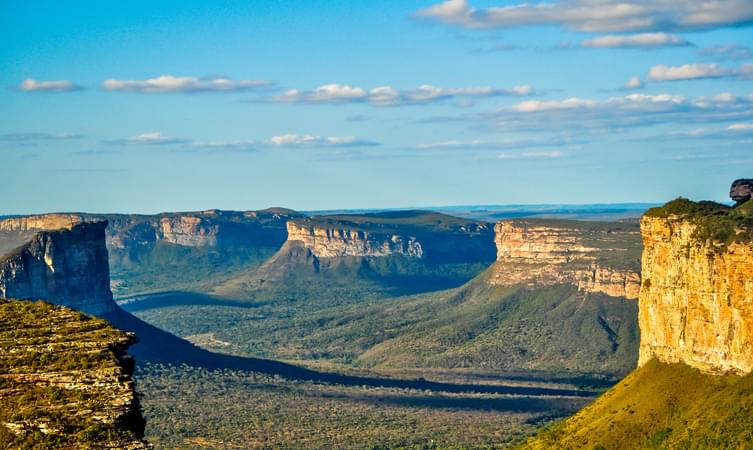
Teatro Municipal de Sao Paulo

Teatro Municipal de São Paulo stands as a cultural beacon in Brazil, symbolizing the nation's rich artistic heritage. Located in the heart of São Paulo, this historic theater is renowned for its architectural grandeur and diverse array of performances. Since its inauguration in 1911, it has served as a hub for opera, ballet, symphony concerts, and theatrical productions, showcasing both Brazilian and international talent.
Beco do Batman

Beco do Batman, in São Paulo's Vila Madalena district, is a vibrant open-air gallery renowned for its stunning street art. Named after a Batman mural, it attracts art enthusiasts and tourists alike. The alley's ever-changing graffiti and murals showcase local and international artists, making it a dynamic and colorful destination for exploring urban creativity.
Catedral Metropolitana de São Paulo

The Catedral Metropolitana de São Paulo, also known as São Paulo Cathedral, is a striking neo-Gothic structure located in the heart of São Paulo, Brazil. Completed in 1954, the cathedral stands on the historic site of the city's founding. Its design, inspired by medieval European cathedrals, features impressive stained glass windows, towering spires, and a grand central dome. The interior houses beautiful mosaics, sculptures, and a significant organ with over 12,000 pipes. As one of the largest churches in Brazil, it is a central place of worship and a symbol of São Paulo's cultural and architectural heritage.
Iguacu National Park
.jpg?w=753&h=450&dpr)
Iguaçu National Park, a UNESCO World Heritage Site since 1986, is a breathtaking testament to the power and beauty of nature. Located in the tri-border region of Brazil, Argentina, and Paraguay, the park is famed for its awe-inspiring Iguaçu Falls, one of the largest waterfall systems in the world. The sheer force of the cascading water, surrounded by lush rainforest, creates an unforgettable spectacle that draws visitors from across the globe.
Sugarloaf Mountain
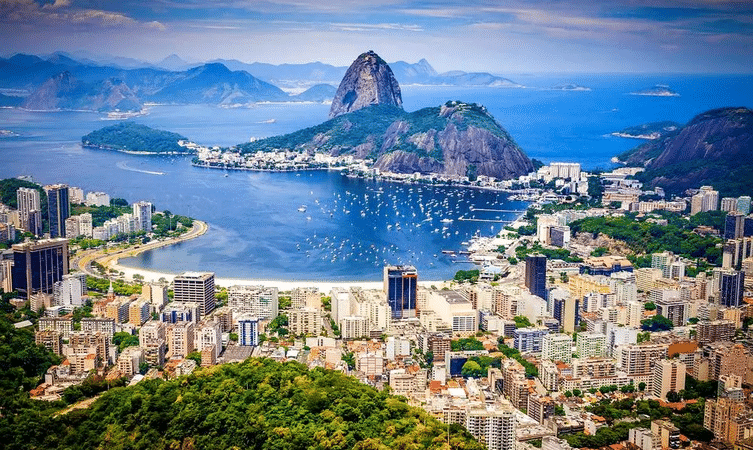
Sugarloaf Mountain (Pão de Açúcar) is a prominent peak situated at the entrance of Guanabara Bay in Rio de Janeiro, Brazil. Rising 396 meters (1,299 feet) above the harbor, it is renowned for its unique, rounded shape and offers breathtaking panoramic views of the city and its surrounding landscapes, including the famous beaches of Copacabana and Ipanema, and the Christ the Redeemer statue.
Ibirapuera Park

Ibirapuera Park, located in São Paulo, Brazil, is a sprawling urban oasis renowned for its lush greenery, scenic lakes, and recreational facilities. The park offers jogging trails, cycling paths, and open spaces for picnics and leisure activities. Cultural attractions like museums and art installations add to its vibrant charm.
Mercado Municipal de Sao Paulo

The Mercado Municipal de São Paulo, also known as the Mercadão, is a vibrant and iconic market located in the heart of São Paulo, Brazil. Built in 1933, this architectural gem is renowned for its bustling atmosphere and diverse array of fresh produce, meats, cheeses, and spices. Its striking stained glass windows and towering dome add to its allure, attracting both locals and tourists alike.
Mosteiro de Sao Bento

The Mosteiro de São Bento, or Saint Benedict Monastery, is a renowned religious and architectural landmark located in São Paulo, Brazil. Founded in 1598 by a group of Benedictine monks, the monastery has played a pivotal role in the city’s spiritual and cultural history. The current structure, an impressive example of neo-Gothic architecture, was completed in 1922, designed by the German architect Richard Berndl.
People Also Ask About Brazil
What are the best things to do in brazil, what are the best cities to visit in brazil, what is the best time to visit brazil, how to reach brazil, what is brazil known for, how much does a trip to brazil cost.
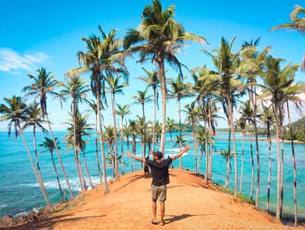
Brazil Reviews

Popular Nearby Places Around Brazil
More things to do in brazil, more on brazil tourism, best domestic packages, best international packages, domestic honeymoon packages, international honeymoon packages, places to visit in india, international places to visit, things to do in india, international things to do, popular on thrillophilia.
- We assure the privacy of your contact data.
- This data will only be used by our team to contact you and no other purposes.
Your enquiry has been received successfully. Our destination expert will reach out to you soon!

19 Top-Rated Tourist Attractions in Rio de Janeiro
Written by Lana Law and Michael Law Updated Jan 19, 2024 We may earn a commission from affiliate links ( )
The city of Rio de Janeiro, with its evocative name, brings to mind golden sand beaches populated by sun-kissed bodies by day and the passion of the samba by night. Many people consider this to be the most beautiful city setting in the world, and UNESCO cited "the staggeringly beautiful location for one of the world's biggest cities" in naming Rio a World Heritage Site .
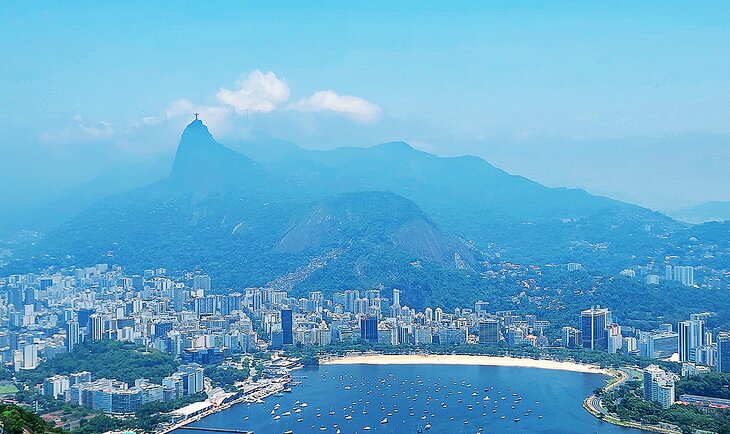
The best way to appreciate Rio is to rush headlong into the experiences and attractions with passion and gusto. Corcovado, Sugarloaf, Copacabana, and Ipanema are the top places to start but there are many must-see places. When you're done touring the sites, hit the beach, and then head out in the evening for first-class dining, to see a football game, or to enjoy the nightlife.
Discover the best this city offers with our list of the top attractions in Rio de Janeiro.
See also: Where to Stay in Rio de Janeiro
Christ the Redeemer (Cristo Redentor)
Carnaval (carnival), escadaria selarón (selaraón steps), jardim botânico (botanical garden), prainha beach (little beach), tijuca national park, são francisco da penitência, teatro municipal (municipal theater), quinta da boa vista, nossa senhora do carmo and monte do carmo, ilha fiscal, catedral de são sebastião, take a boat trip to ilha de paquetá, day trip to petrópolis, where to stay in rio de janeiro for sightseeing, tips and tours: how to make the most of your visit to rio de janeiro, map of tourist attractions in rio de janeiro, rio de janeiro, brazil - climate chart.
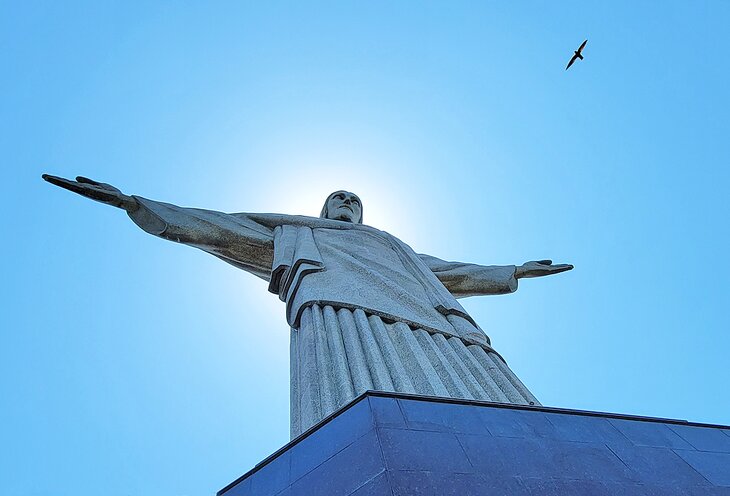
Towering over the city with its welcoming arms, the Christ the Redeemer statue is the iconic symbol of Rio de Janeiro and it's something you must visit while you're here. Set atop 709 meter-high Corcovado Mountain , this monument has been watching over the city for nearly 100 years.
Views from the deck below the 30-meter-high monument out over the city, ocean, and surrounding mountains are incredible on a clear day.
For the famous shot of yourself in front of the statue, walk about halfway down the stairs to the lower deck and shoot backward towards the statue.
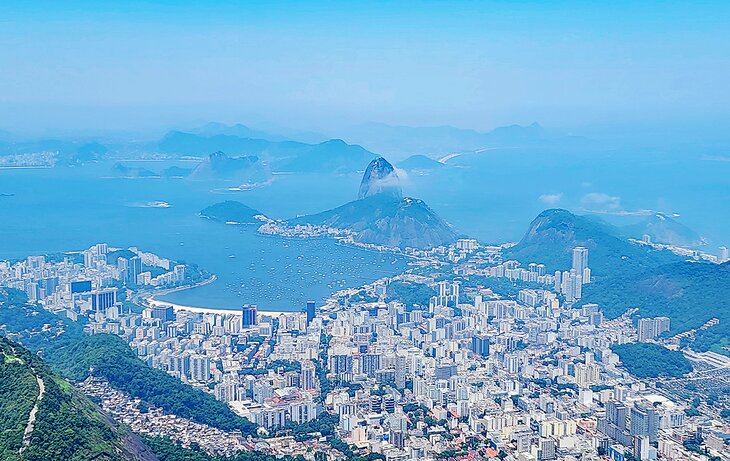
Visiting Christ the Redeemer isn't all about views and selfies, the ride up to the top on the incline railway is half the fun. Ascending through the lush jungle, the steep ride to the top takes about 20 minutes and provides beautiful views.
Visiting Christ the Redeemer is one of the most popular things to do in Rio de Janeiro, with over 800,000 people visiting annually. Be prepared for crowds at the top. To avoid long queues for the train, book your tickets in advance online and select a time. Another option for getting to the top is taking a van ride, which is cheaper but far less scenic and enjoyable.
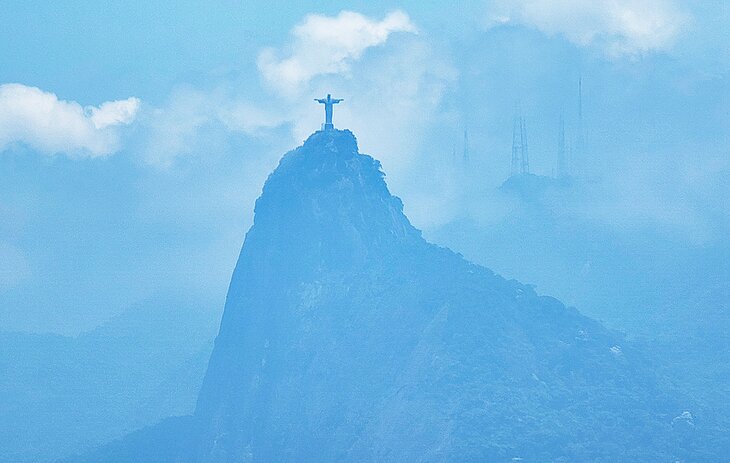
The best time to visit is early in the day, as the statue can become foggy as the day progresses.
Note: The former restaurant at the top is permanently closed; the only food and drink option is a small snack bar, although there are plenty of places to buy souvenirs!
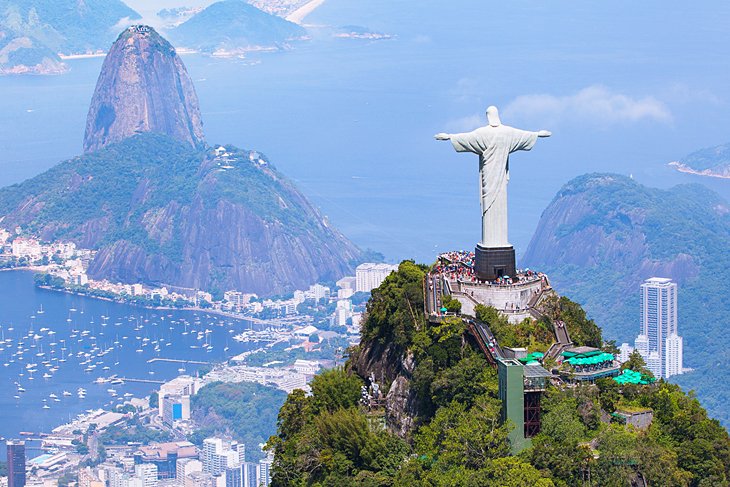
It's hard to imagine a more perfectly placed mountain than Sugarloaf. Just slightly offshore from mainland Rio de Janeiro, this towering monolith provides sweeping views of the city and across to Christ the Redeemer. At the top, you'll find multiple viewing platforms, most of which are protected from the punishing equatorial sun. Views also extend to Rio's famed harbor with the Ponte Pres. Costa e Silva bridge in the foreground and back towards Copacabana and Christ the Redeemer.
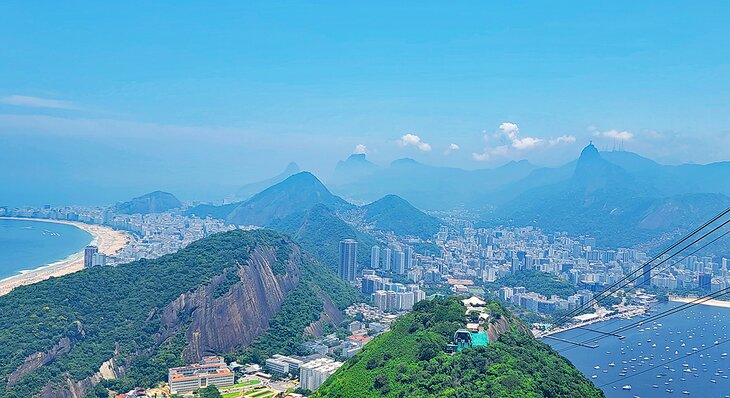
The ride to the top of Sugarloaf Mountain is via a scenic two-stage cable car ride. Don't be distracted by the first stopping area with its shopping mall; the best views are from the top. As you exit the first station, just keep walking to your left and you'll eventually find the second station. The ride up from here is stunning, keep an eye out below for mountain climbers ascending the sheer face of the mountain.
As with Christ the Redeemer, lines can be long, so book your tickets in advance . You can book for specific days but not times. The best option, if you don't mind paying a little more, is to buy the VIP ticket which allows you to skip the lines on the way up and down (surprisingly you need to show your ticket to get down). This is an excellent investment!
The attraction is also known as Pão de açúcar when searching for the drop-off point using UBER .
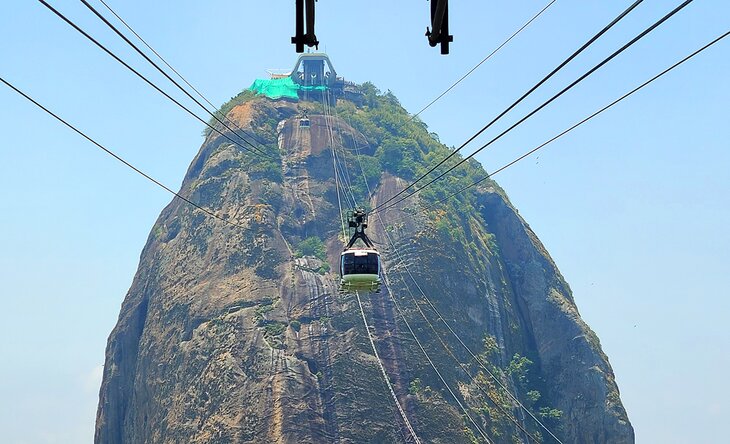
This 2.5-mile stretch of golden sand is synonymous with Rio de Janeiro. Packed with people on warm summer weekends and throughout the Christmas holidays, it's a lively and fun scene and the beach where people from all walks of life come for sun, surf, and fun. The beach is wide, so be prepared for a significant walk to the water's edge.
The water is refreshingly cool and the waves can be surprisingly large depending on the day. Rio does a good job of keeping people on the beach safe, don't be surprised if you see a red helicopter doing water rescues if the surf is up. Chairs and umbrellas can be rented for a reasonable fee from organized beach service operators, who also provide cold drinks and meals. They also provide free showers.
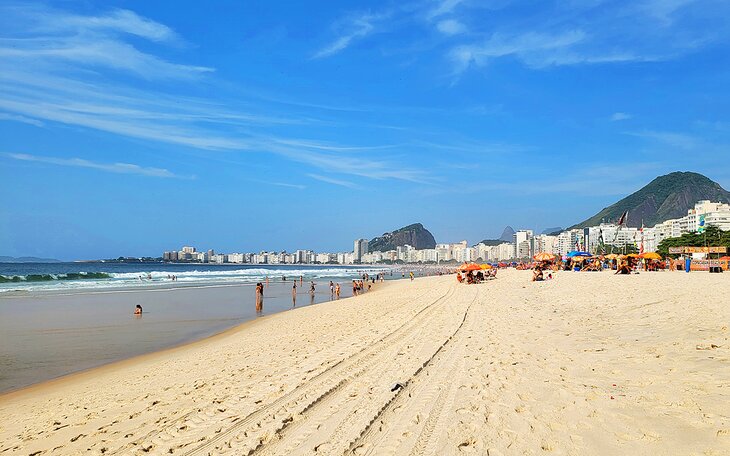
Back from the beach is a wide walkway with black and white stones arranged in a decorative pattern. Here, you'll also find beachside restaurants and, in the evening, vendors selling all manner of handicrafts and souvenirs. At the far northern end of the beach are restaurants, many with live music, clustered under the large headland. Be sure to plan to come here in the early evening. It is an excellent spot to enjoy the sunset with expansive views of the beach.
If you can tear yourself from your towel, the early 18 th century Fort Copacabana and Military Museum at the south end of the beach is worth a look.
Note: The mood on Copacabana Beach varies. It's generally very family-oriented on weekends and holidays during the day. Night on the beach can be rowdy at times, especially on holidays in the late evening. Normal weekdays are much quieter.
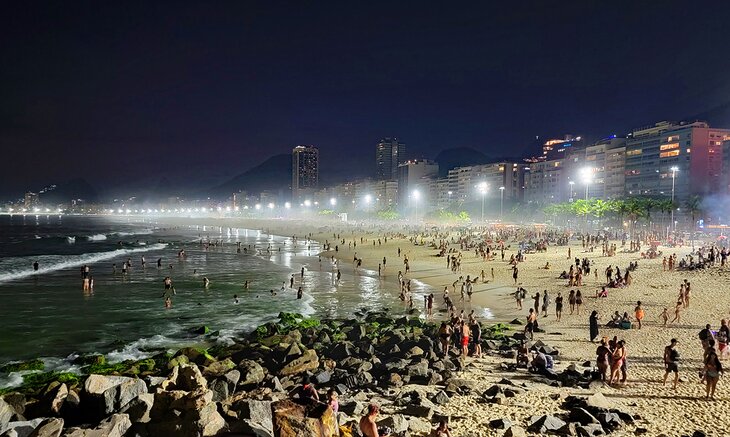
Address: Praça Coronel Eugênio Franco, Rio de Janeiro
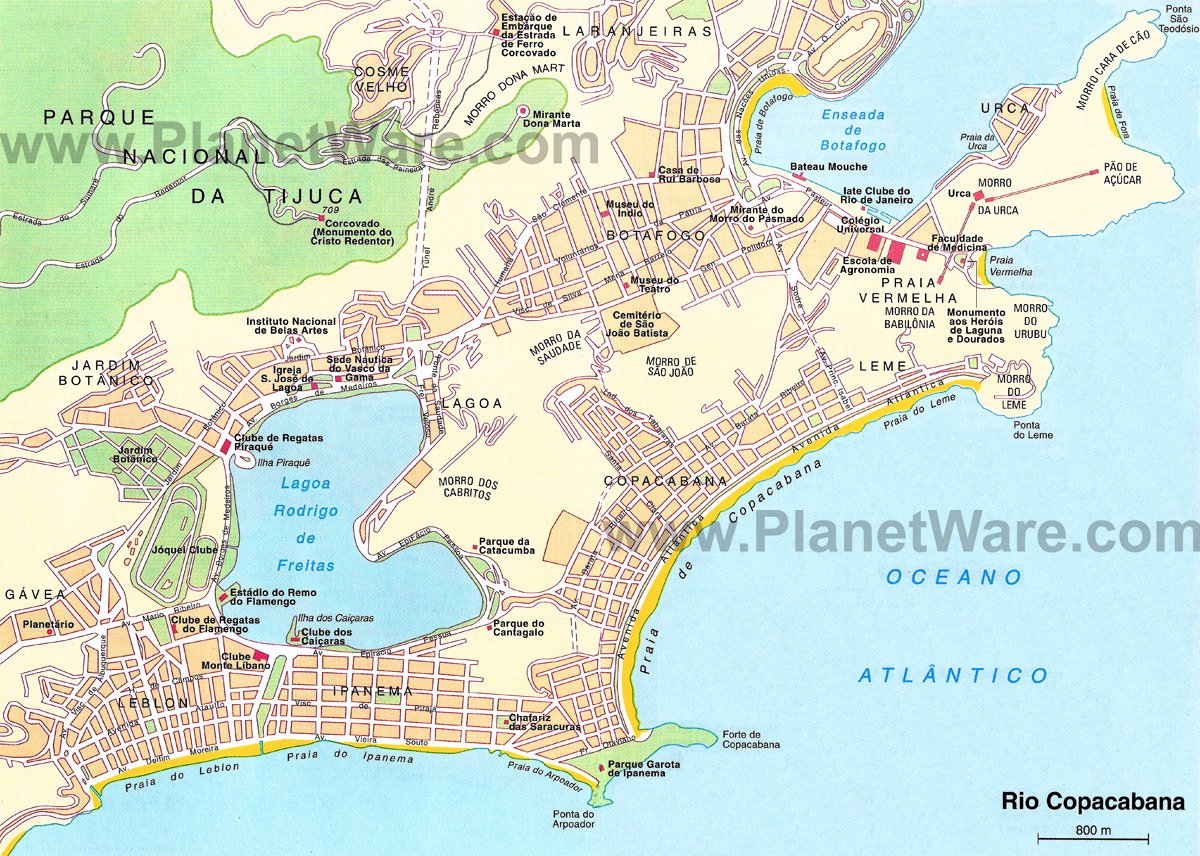
Continuing on westward from Copacabana's four-kilometer strand, the beaches of Ipanema and Leblon are separated by the Jardim de Alá Canal, which drains the lagoon, Lagoa Rodrigo de Freitas. Along the seafront promenade are large hotels, sidewalk cafés, and restaurants.
These two districts, although best known for their beaches (one of which was made world-famous by the song The Girl from Ipanema ) have a lively cultural life, with art galleries, cinemas, and an avant-garde theater. Praça de Quental in Leblon is the scene of an antiques market every Sunday, and Praca General Osorio hosts the Sunday Feira de Artesanato de Ipanema featuring crafts, music, art, and local foods.
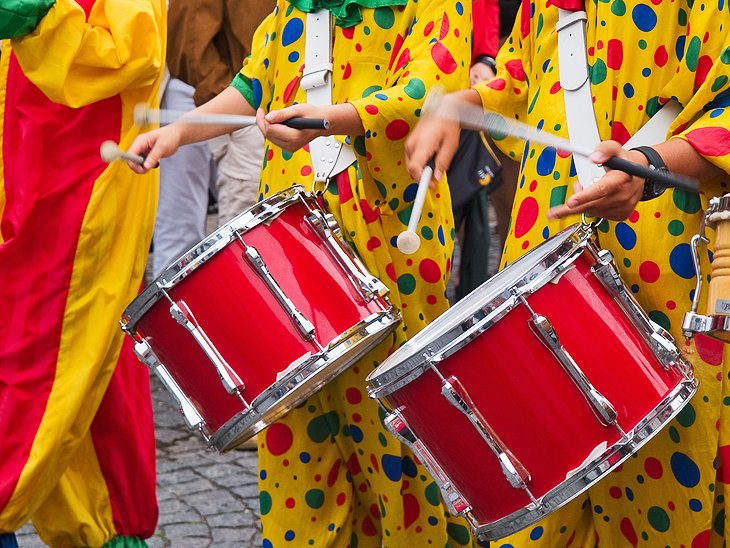
Carnaval is the biggest event of the year on the city's calendar. The festival brings a riot of color and endless action to the streets of Rio each February (sometimes late January, depending on the year). Some visitors plan their entire trip to Brazil around Carnival, and if you are going to attend, you need to do some serious advanced planning.
The celebrations begin shortly after New Year, but the splendor and extravagance reaches its spectacular climax in the four days before Ash Wednesday, attracting hundreds of thousands of spectators to its street parades, samba parties, and shows. Other Brazilian cities celebrate Carnaval; it is also a major tourist event in Bahia and Recife, but Rio's is the most lavish.
The most spectacular events are the parades of the samba schools, which are held in a unique venue designed by renowned Brazilian architect Oscar Niemeyer. The Sambódromo is a long parade route lined by stadium-style boxes designed so that up to 90,000 spectators can watch the parades of brilliantly costumed dancers as they compete. The parade route is 700 meters long and 13 meters wide. It was first used in 1984 and updated as a venue for the 2016 Olympic Games.
Address: Rua Marquês de Sapucaí, Rio de Janeiro
Official site: www.sambadrome.com
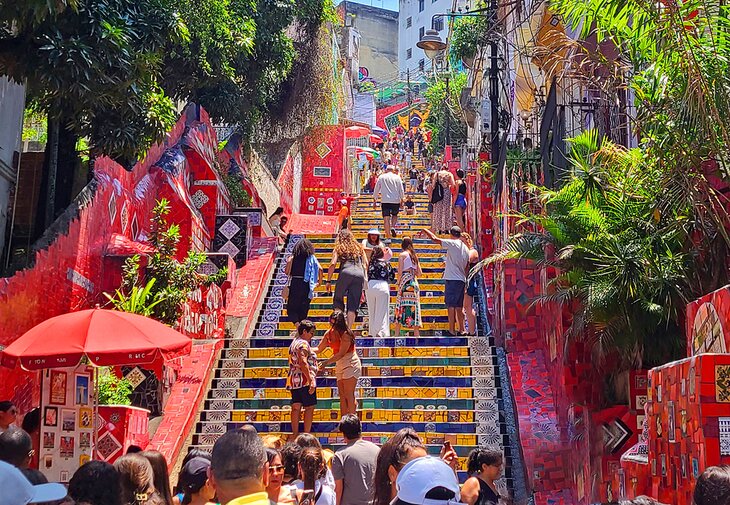
A fun distraction when visiting Rio is the Selaraón Steps. Colorful stairs wind their way up a steep incline, each decorated with an assortment of tiles.
Work on the stairs began in 1983 by Jorge Selearón, who collected tile castoffs and affixed them to the dilapidated staircase running outside his home. Until his suspicious death in 2013, the somewhat eccentric artist kept adding, replacing, and repairing the tiles on stairs in the colors of the Brazilian flag and the tiles on the edges of the staircase in red.
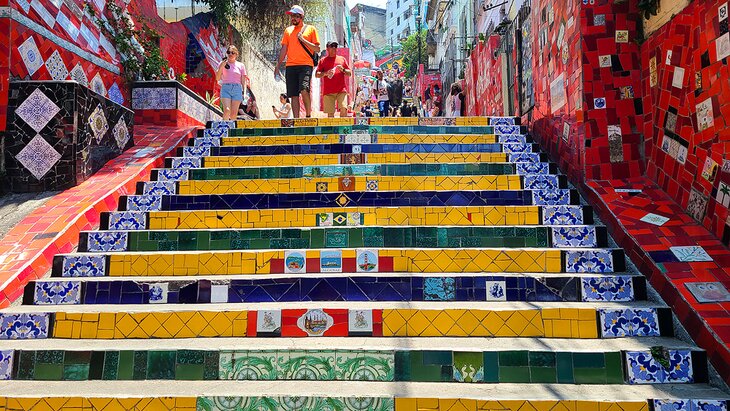
The stairs are exceptionally photogenic and attract large crowds during the day. If you want to get the iconic shot with the staircase name, those tiles are near the bottom of the 125-meter-high staircase. Be sure to walk to the top of the stairs to get a feel for the amount of work Selearón put into this monument.
Small restaurants on shops selling cold beverages line the stairs. A good stop is a small restaurant at the top; it has a shady patio, a bit of a breeze, decent food, is well-priced, and provides good views of the stairs and a bit of downtown Rio.
The area around the stairs is a bit gritty (some call it Bohemian), I wouldn't recommend venturing too far away from the stairs, and I wouldn't come here at night.
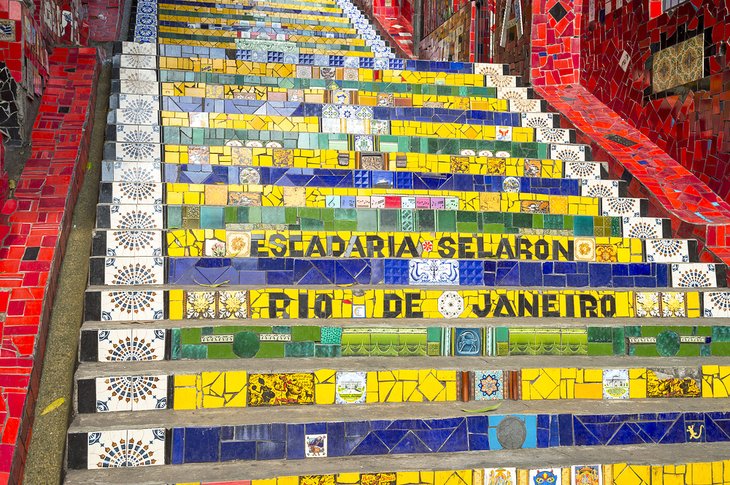
If you've had enough of the urban beat of Rio de Janeiro and crave a bit of nature, take a trip over to the Botanical Gardens. The wide trails under the canopy of green are well-maintained and provide an oasis of calm and a pleasant change from the concrete jungle nearby.
A highlight is Aleia Barbosa Rodrigues, a wonderful wide walkway lined on both sides by towering Royal Palm trees with the famous Fountain of the Muses in the middle. Near the fountain is a giant Kapok tree.
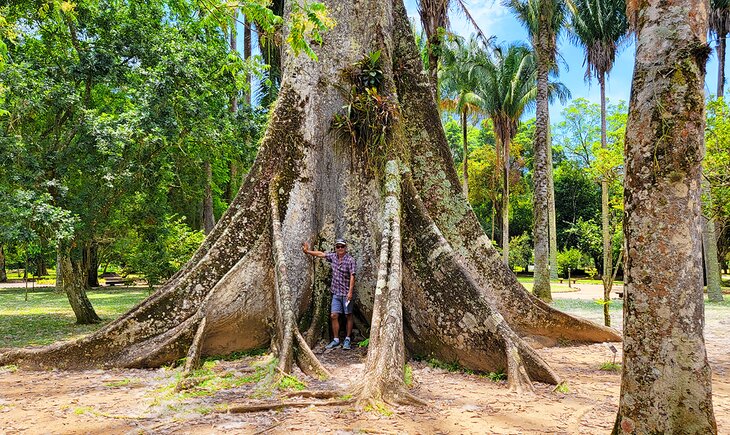
The gardens are a UNESCO World Biosphere site and are home to over 8,000 species of plant life. Trails are well marked in English and be sure to follow the signs to both the Orchidarium, an iron-and-glass greenhouse built in the 1930s, and the Japanese Gardens.
Note that an admission fee is charged to enter and at the time of writing only cash was accepted.
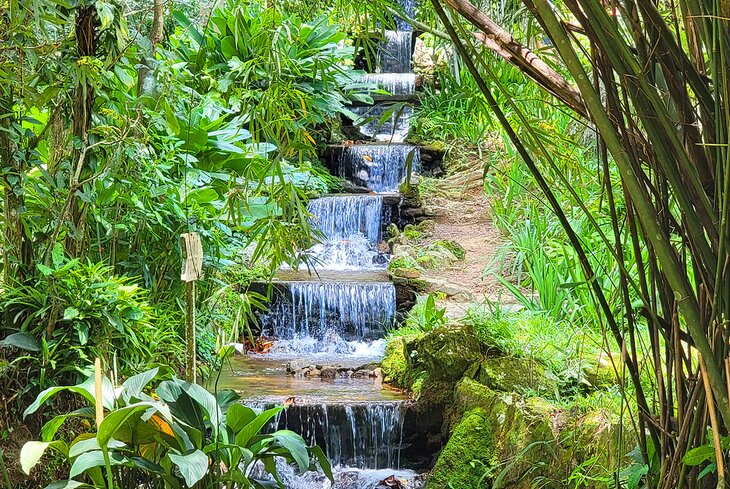
Address: R. Jardim Botânico, Rio de Janeiro
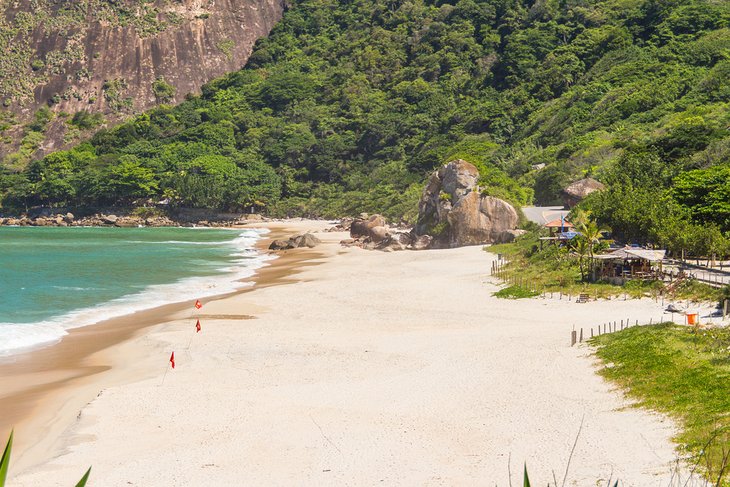
If you have visited the beaches of Copacabana and Ipanema and still crave more, but at the same time are looking for something a bit different, take the 20-kilometer jaunt down to Prainha. Where the rainforest meets the ocean, this beach is more natural than the ones in the heart of Rio.
Golden sands and large round boulders are lapped by the sea, and finding your own patch of sand to soak up the sun is never an issue. If you like to surf, this is the place to do it. Nice right and left breaks provide consistent rides in May, then flatten out until September.
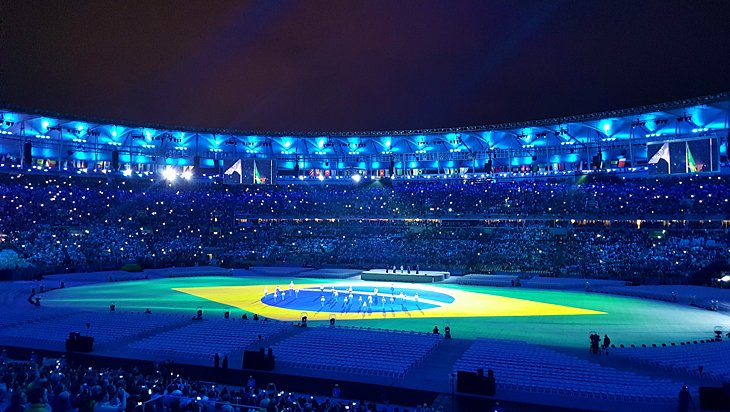
A must-see for football (soccer) fans when a game is scheduled, Brazil's largest stadium was home to the opening and closing ceremonies of the 2016 Summer Olympic Games. It was completely renovated for the FIFA World Cup 2014 and holds more than 78,000 fans.
The stadium is used for matches between Rio's major football clubs, the Flamengo, Botafogo, Fluminense, and Vasco da Gama, as well as for concerts. The brief tour would be of interest to avid fans, but others should give it a miss.
The shore of Lagoa Rodrigo de Freitas , near Copacabana and Ipanema, where many other Olympic events took place, is lined by parks and sports clubs, and its waters are popular for regattas and other water sports.
Address: Av. Pres. Castelo Branco, Rio de Janeiro
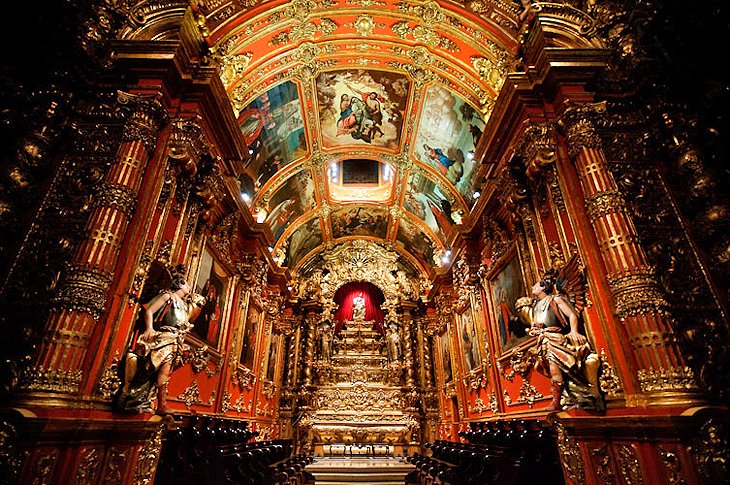
On the hill just above the harbor are the church and monastery of São Bento, one of the finest Benedictine complexes in Brazil. The original 1617 church was without aisles until it was enlarged in the second half of the 17th century by the addition of eight side chapels. The finest artists of the Benedictine order were involved in decorating the interior.
The exuberant carving that covers the walls and ceiling was mainly the work of a monk named Domingos da Conceição, who was also responsible for the figures of St. Benedict and St. Scholastica on the high altar.
The choir chapel has silver work by Mestre Valentim and 14 paintings by Ricardo do Pilar, a monk who was the foremost Benedictine painter of colonial Brazil. His masterpiece, Senhor dos Martírios (Christ of the Passion), is in the sacristy of the monastery.
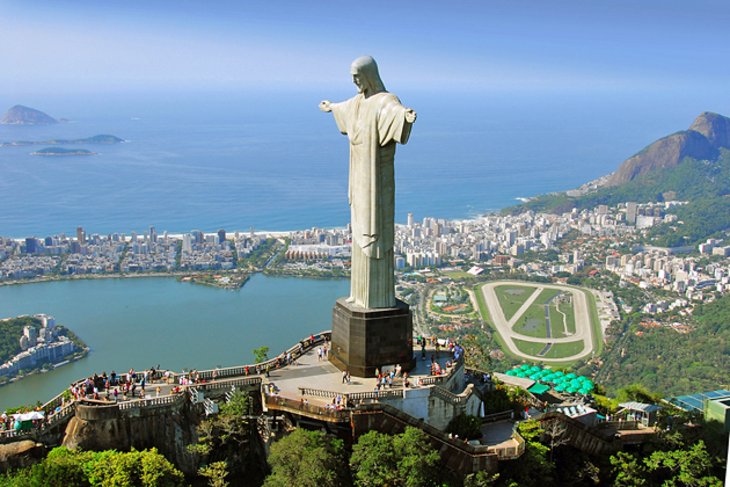
Tijuca National Park protects the Tijuca Forest and several viewpoints overlooking the city, and surrounds Cristo Redentor , the giant-sized statue of Christ on Corcovado. To explore the park, you can leave the train up to Corcovado at a midpoint and follow the road through the forest.
The 3,300-hectare Tijuca Forest, one of the world's largest forests within a city , was planted in the late 1850s on land that had been destroyed by coffee plantations, to safeguard the springs that supplied Rio de Janeiro's water. Most of the trees are native species and provide habitat for Capuchin monkeys, quatis (Brazilian raccoon), colorful toucans, hawks, brilliant blue butterflies, and many other species of wildlife, which you may spot while exploring its trails and roads.
Near the station of the Corcovado railway is Largo do Boticário , one of Rio's most picturesque squares, surrounded by colonial-style houses. From the pagoda-style pavilion at Morro da Vista Chinesa, 380 meters above the shore, are views of the Municipal Park, the Botanic Garden, and a long stretch of the south coast.
There are more views from Mirante Dona Marta, a viewpoint on a spur of rock above Botafogo Bay. Several waterfalls drop from the forest springs, including the 30-meter Cascatinha Taunay .
Set in extensive gardens near the park is the Museu do Açude , with the valuable porcelain collections of the West India Company; old views of Rio de Janeiro by Brazilian and foreign artists; and azulejos, traditional Portuguese tiles from the 17th through 19th centuries.
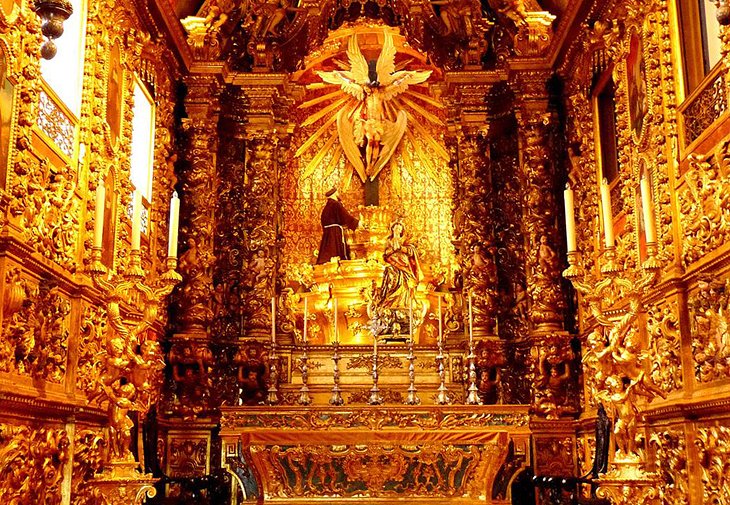
The Igreja da Ordem Terceira de São Francisco da Penitência is divided into three sections with separate entrances, and the simple façade of this church belies the riches within. The interior, which was begun in 1657 and completed in 1773, is a riot of gilded wood carving.
Among those who contributed to the decoration of the interior were Manuel and Francisco Xavier de Brito, two leading Portuguese sculptors and woodcarvers. They had very similar styles, known as Brito, using decorative forms that influenced Aleijadinho and other masters of Brazilian Baroque.
The ceiling of the choir has the earliest trompe-l'oeil painting in Brazil, completed in 1736, the work of Caetano da Costa Coelho, who later painted the ceiling of the nave in the same style.
Address: Rua da Carioca, Rio de Janeiro
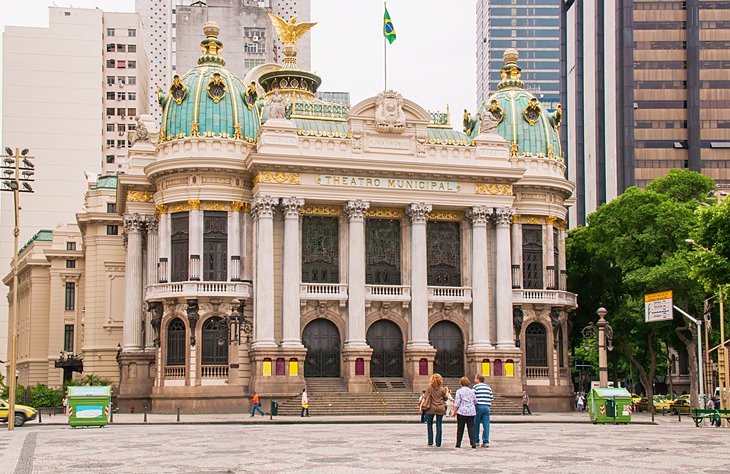
The grand Municipal Theater, built in the early 20th century, was inspired by the Paris Opera of Charles Garnier, and its interior is even more ornate and luxurious than the dramatic towered façade. Important highlights to see are the sculptures by Henrique Bernardelli and paintings by Rodolfo Amoedo and Eliseu Visconti, as well as the drop curtain, the proscenium frieze, and the ceilings.
Guided tours, some in English, are available or, better yet, attend a classical concert or ballet performance here.
Address: Praça Floriano, Rio de Janeiro
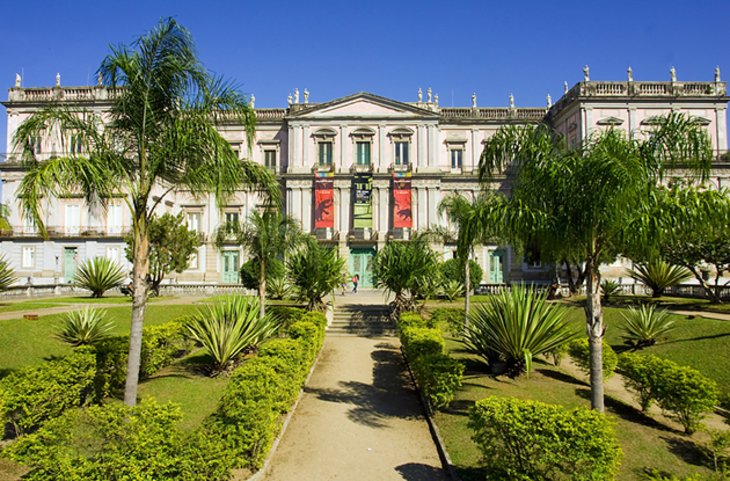
The gardens, villas, and imperial palaces of São Cristóvão are now public parks and museums, the foremost of which is Quinta da Boa Vista. From 1808 to 1889, the palace was the residence of the royal and the imperial family and was later altered and rebuilt as the Palácio de São Cristóvão. It houses the National Museum , which has the largest zoological, botanical, ethnographic, and archaeology collections in the country, totaling more than a million items.
In the expansive park are gardens with lakes, woodlands, and caves, which you can reach via a miniature railway. Also inside the park is a zoo with more than 2,000 species of mammals, birds, and reptiles from Brazil and around the world.
Address: São Cristóvão, Rio de Janeiro
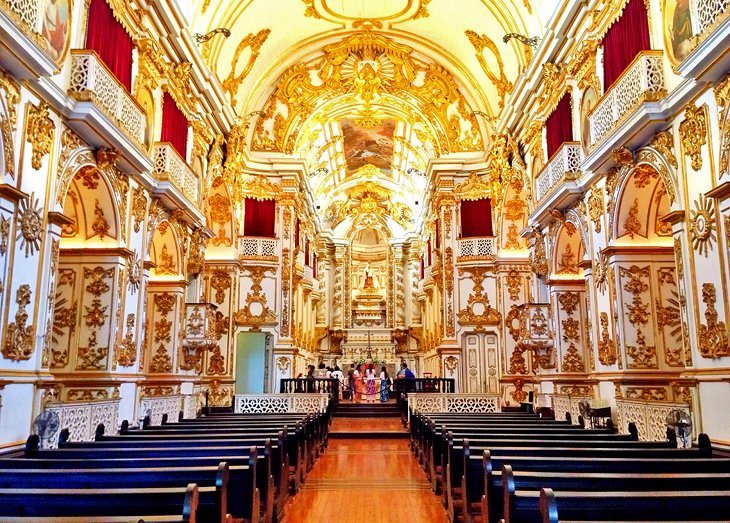
The parish church of Nossa Senhora do Carmo was the Capela Real (Royal Chapel) from 1808 to 1889 and the cathedral until the modern one replaced it in 1976. Connected to it by a passage is a second Carmelite church, Monte do Carmo, begun in 1755.
Highlights are its Baroque façade, stone doorway, and the white and gold carving by Mestre Valentim in the Chapel of the Novitiate. The 1761 former cathedral is richly decorated with carving and has a silver high altar. In a side street is the chapel of Nossa Senhora do Cabo da Boa Esperança (Our Lady of the Cape of Good Hope), the last surviving street oratory in the city.
Address: Rua 1 de Maráo (off Rua do Ouvidor), Rio de Janeiro
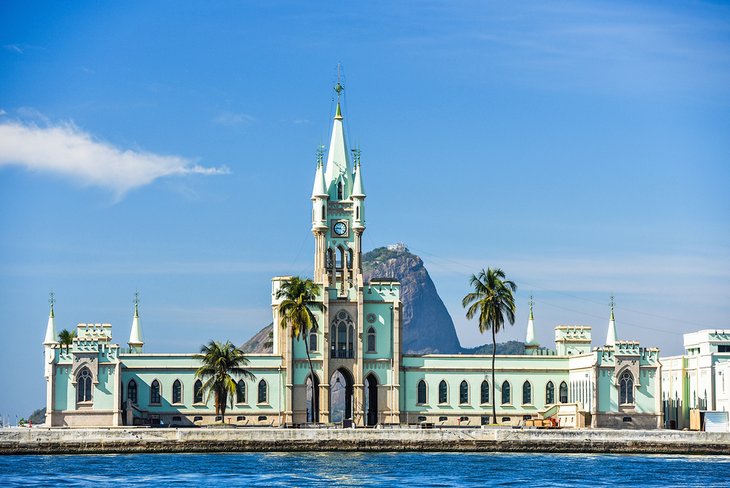
This neo-Gothic castle in Rio de Janeiro's harbor was built in 1889 and used for many years as a customs inspection building. Today this architectural gem, complete with turrets and towers, is open to the public.
Inside Ilha Fiscal, you'll find smooth hardwood floors with mosaic patterns throughout, while impressive stained-glass windows glow in Rio's tropical sun. As you wander around, take a stroll through the museum that showcases Brazilian naval history.
Access to the island is generally by boat , which passes some spectacular scenery along the way including colonial architecture on Ilha das Cobras and the skyline of downtown Rio. The ride is about 20 minutes .
Prior to departure, you are welcome to wander around and check out some military hardware including a helicopter, tank, and a submarine which you can go inside. Buying tickets can be done in person but it's best to purchase them in advance online at the official website where you can select the date and time of your tour.
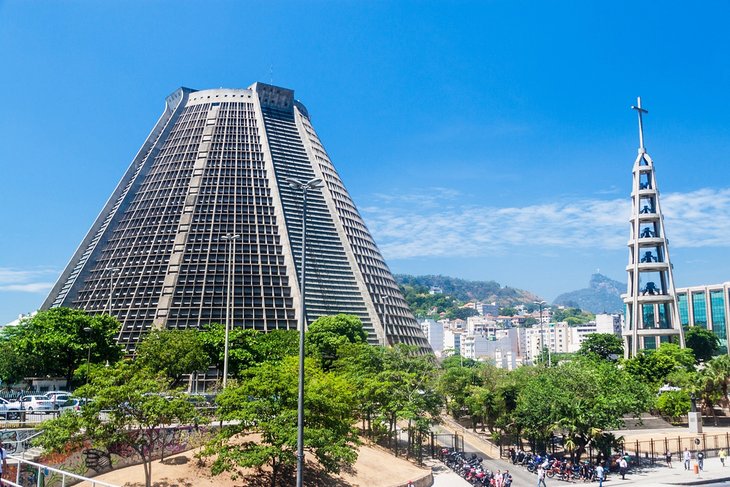
Architect Edgar Fonseca, who designed Rio's Catedral de São Sebastião, took his inspiration from Mayan pyramids, interpreting their soaring forms in a modern context. Built between 1964 and 1979 and often referred to as the New Cathedral to distinguish it from its immediate predecessor, Nossa Senhora do Carmo, the church seats 5,000 in its 96-meter interior. Four stained glass windows rise 64 meters from the floor to light the interior with brilliantly colored natural light. At night, the church is lit from within, a bright beacon in the central skyline.
If you are visiting the Selaraón Steps, the church is visible from the restaurant at the top of the staircase, just look off to your left.
Address: Av. Chile 245, Rio de Janeiro
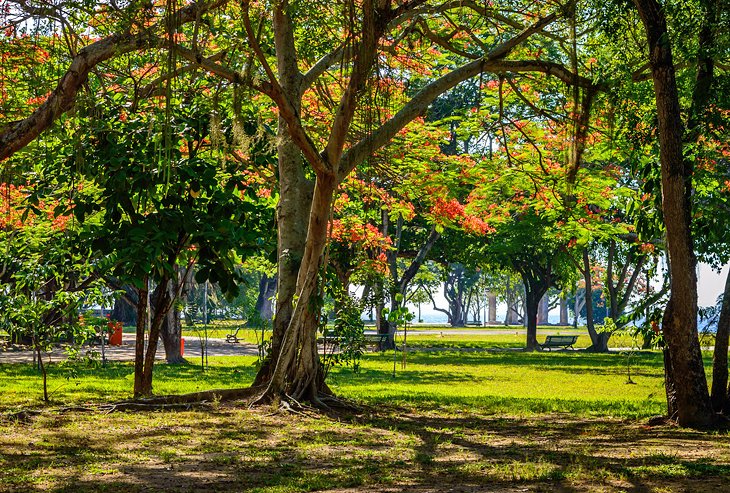
The island of Paquetá, with an area of a little more than a square kilometer, lies in Guanabara Bay, an hour's boat trip from Praça 15 de Novembro . It became a fashionable resort in the early 1800s, when Portuguese Emperor Dom João VI spent his summers here (the colony of Brazil became the seat of the Portuguese Empire in 1808, when Napoleon's armies occupied Portugal).
Solar del Rey, a palace in which Dom João VI frequently stayed, is among the interesting old buildings, which also include the 1698 chapel of São Roque and the house of José Bonifácio de Andrada e Silva, father of Brazilian independence. No cars invade the peace of the island, but you can explore it on foot, by rented bicycle, or in a horse-drawn carriage. Palms line the island's beaches, where you'll find impromptu food stands grilling fresh fish.
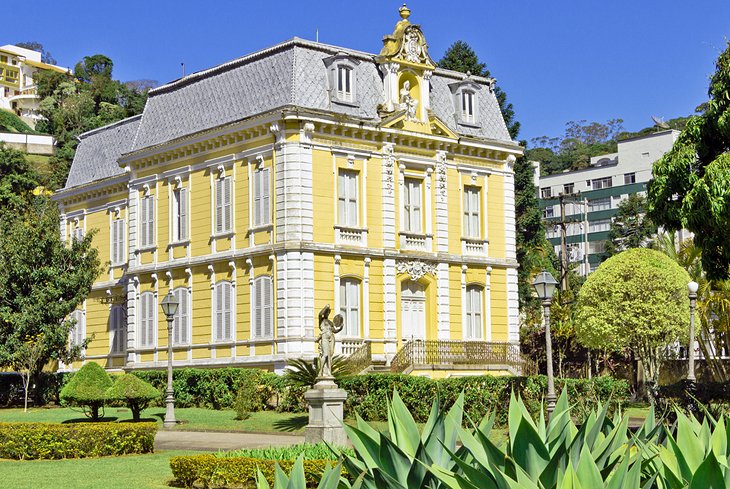
Petrópolis, 68 kilometers from Rio de Janeiro, sits high in a forested valley of the Serra dos Órgãos and was chosen by King Pedro II of Brazil as his summer home. Aristocrats quickly followed, building their own summer palaces and villas and making Petrópolis an elegant upper-class resort.
It was later a favorite of artists and intellectuals and a popular tourist destination for its beautiful buildings and pleasant year-round climate. Today, the former Summer Palace is the Imperial Museum , filled with memorabilia from the days of the Brazilian Empire. Also worth seeing are the Cathedral of Saint Peter of Alcântara , the Crystal Palace, and the house of aviation pioneer Santos-Dumont.
Rio de Janeiro stretches between the bay and mountains, its attractions so spread out that there is no neighborhood convenient to more than a few of them. Fortunately, Rio's Metro system is fast and efficient, so the best hotels for tourists are in the safe beach neighborhoods of Copacabana and Ipanema, amid restaurants and shops and handy to Metro access. Another option is Botafogo, a residential area adjacent to Copacabana, near the cable car to Sugarloaf. Here are some highly-rated hotels in Rio de Janeiro.
Luxury Hotels :
- Featuring a scenic rooftop pool, Miramar Hotel by Windsor is right on Copacabana beach, where sun chairs and umbrellas are available for guests; it's a short walk from Ipanema.
- Belmond Copacabana Palace is an icon of Copacabana's reputation for sophistication and glamor, a place where film stars and royalty have basked in Old World elegance.
- The rooftop pool at JW Marriott Hotel Rio de Janeiro overlooks Copacabana Beach (umbrellas and chairs are reserved for guests) and there is a spa and fitness center.
Mid-Range Hotels:
- A block off the beach, the friendly Ipanema Inn offers personal service in the midst of Ipanema's vibrant dining and arts scene.
- On a quiet street in the heart of Copacabana, Hotel Sesc Copacabana is a block from the beach and surrounded by restaurants and shops.
- Also a block off the beach, Windsor Palace Hotel has a small rooftop pool, a large breakfast buffet, and a free airport shuttle.
Budget Hotels:
- Ibis Copacabana Posto 5 is a few blocks off the beach and near the Metro station, with plenty of dining options nearby.
- Close to the Metro in residential Botafogo, one stop from Copacabana, Ibis Rio de Janeiro Botafogo is near the Sugarloaf cable car.
- So is Mercure Botafogo Mourisco , whose higher rooms have a view of Christ the Redeemer on Corcovado.
- Day Tour: On an eight-hour Full Day Complete Tour of Rio de Janeiro, you'll get a good overview of the city, with stops to visit the major highlights, including Copacabana beach, the Tijuca Forest, Christ the Redeemer statue on Corcovado, the Metropolitan Cathedral, Escadaria Selarón, and the Baroque São Bento Monastery. Also included in the tour is the cable car ride to Sugarloaf and lunch at a steakhouse.
- Corcovado and Sugarloaf Tour: See Rio from the two most prominent points in the city on the Corcovado Mountain, Christ Redeemer, and Sugarloaf Mountain Day Tour . This full day of Rio's most famous landmarks includes a cable car ride to the top of Sugarloaf Mountain and travel by van or cog train through the Tijuca Rainforest to the Christ the Redeemer statue.
- Jeep Tour: Explore the immense National Park on the slopes of Corcovado on a Tijuca Rain Forest Jeep Tour from Rio de Janeiro. As you ride through the rainforest in an open-top Jeep, you'll have a four-hour eco-tour, with a hike to observe butterflies, monkeys, sloths, and birds. Stop to see the Cachoeira dos Macacos (Waterfall of the Monkeys) and for panoramic views from Vista Chinesa (Chinese View) as you learn about the flora of the Mata Atlântica from your guide.
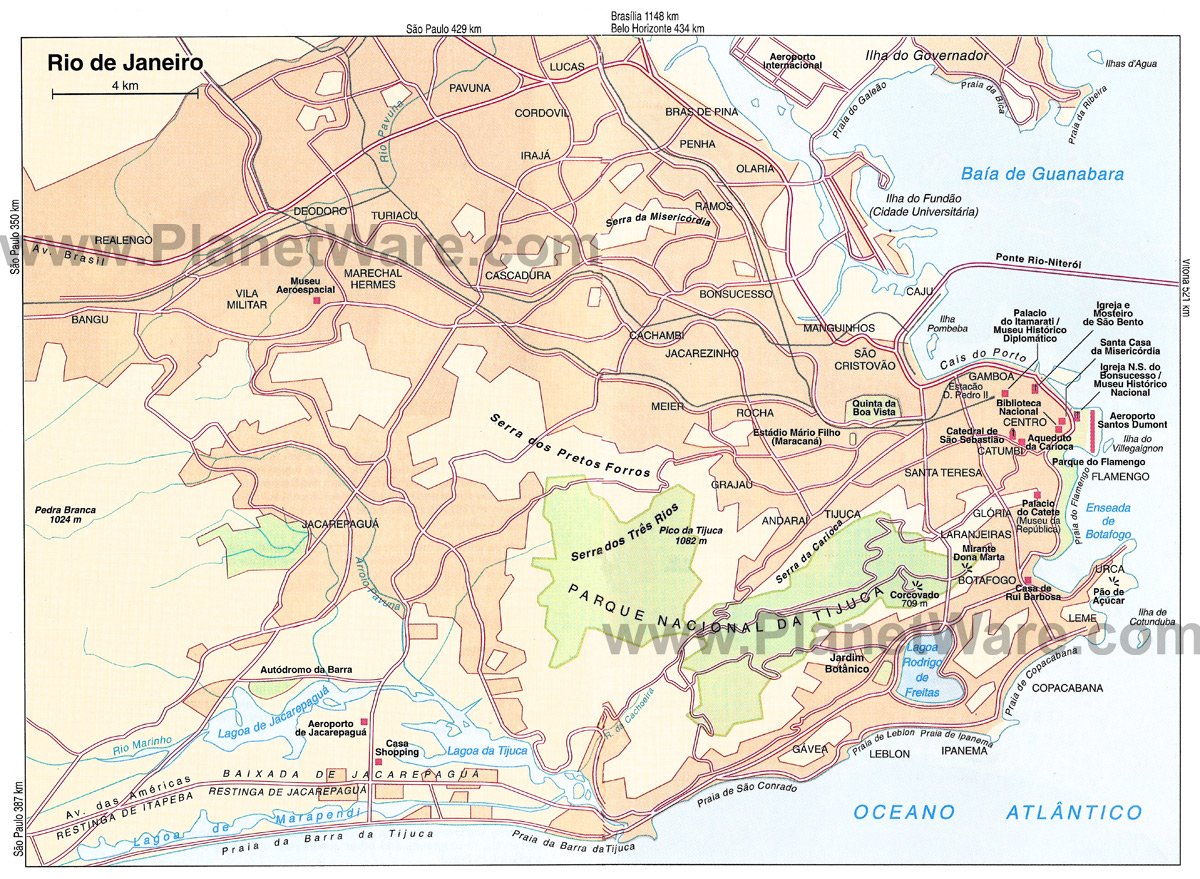
More on Brazil
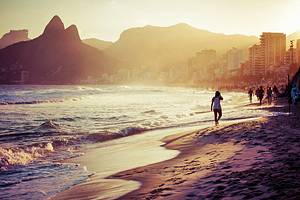
Must-see attractions in Brazil

Parque Nacional da Tijuca
Rio de Janeiro
The Tijuca is all that's left of the Atlantic rainforest that once surrounded Rio de Janeiro. This 39-sq-km tropical-jungle preserve is an exuberant green…

Pão de Açúcar
Seen from the peak of Pão de Açúcar, Rio is undoubtedly a Cidade Maravilhosa (Marvelous City). There are many good times to make the ascent, but sunset on…

Copacabana Beach
A magnificent confluence of land and sea, the long, scalloped beach of Copacabana extends for some 4km, with a flurry of activity along its length: over…

Reserva Extrativista Baixo Rio Branco-Jauaperi
This newly minted extractive reserve is an outstanding place to immerse yourself in the best the Amazon has to offer, with excellent wildlife-watching –…

Parque Nacional da Chapada Diamantina
Spanning over 1520 sq km and containing within it innumerable species of plants and animals, deafening waterfalls and vast, rugged plains, Parque Nacional…
Parque Nacional Marinho de Fernando de Noronha
Fernando de Noronha
Covering around 70% of the main island and all the surrounding sea, Parque Nacional Marinho de Fernando de Noronha contains most of the archipelago's must…
Instituto de Arte Contemporânea Inhotim
Belo Horizonte
The world's largest open-air contemporary art museum, and greater Belo Horizonte's standout attraction, this sprawling, world-class complex of gardens…
Edifício Copan
Copan was designed by late modernist master Oscar Niemeyer. The building, with its serpentine facade and narrow brises soleil (permanent sunshades), is…
Mercado Municipal
This covered market is a belle epoque confection of stained glass and a series of vast domes. Inside, a fabulous urban market specializes in all things…
Praia do Campeche
Santa Catarina
The 3.5km Praia do Campeche is one of Floripa's five-star beaches, an absolute stunner of sun-kissed perfection with wind conditions lending themselves to…
Baía do Sancho
The most stunning stretch of sand on an island of magnificent beaches, Baía do Sancho is a protected cove of brilliant turquoise waters backed by forest…
Parque Nacional Serra dos Órgaos – Teresópolis Entrance
Rio de Janeiro State
About 6km south of Teresópolis, off the BR-116 Rio–Teresópolis highway, you'll find the main (and most accessible) entrance to magnificent Parque Nacional…
Maracanã Football Stadium
Rio’s Maracanã stadium is hallowed ground among football lovers. The massive arena has been the site of legendary victories and crushing defeats. Maracanã…

Floresta Nacional do Tapajós
If you came to the Amazon to see primary rainforest, look no further than the Floresta Nacional do Tapajós. Wildlife is a possibility – from birds to…

Museu Oscar Niemeyer
Designed by and named for the architect responsible for much of Brasília, this striking museum features an iconic eye-shaped tower painted with whimsical…

Jardim Botânico Adolpho Ducke
Spanning over 100 sq km, this 'garden' is actually the world’s largest urban forest. There's a network of five short trails (guides and closed shoes…

Serra do Aracá State Park
Although this state park was established in 1990 to preserve the unique canyons carved out by the Rio Aracá, it wasn't until recently that the massive…

The floodplains east and southeast of Santarém are among the Amazon's most rewarding excursions. Flooded for much of the year, the plains are home to…
Parque Nacional da Serra da Capivara
One of Brazil's most important national parks, this 1300-sq-km reserve contains more than 40,000 rock paintings among spectacular panoramas of immense…
Parque Nacional de Aparados da Serra
Rio Grande do Sul
Located 18km southeast of Cambará do Sul, this magnificent park occupies 102.5 sq km on the border between Rio Grande do Sul and Santa Catarina. It's here…

Parque Nacional do Itatiaia
Brazil’s oldest national park, Itatiaia shelters a stunning variety of landscapes, from dense rainforests to spare and rugged upland peaks. Most visitors…

Museu de Arte do Rio
Looming large over Praça Mauá, the MAR is an icon for the rebirth of Rio's once derelict port. The huge museum hosts wide-ranging exhibitions that focus…
Itaipu Binacional
Foz do Iguaçu
With a capacity of 14 million kilowatts, this binational dam is the world's second-largest hydroelectric power station, and the one that produces the most…

Teatro Amazonas
This gorgeous theater was built at the height of the rubber boom, using European designers, decorators and even raw materials. The original driveway was…

Mercado Ver-o-Peso
The name of this waterfront market, with its iconic four-turreted structure at its southwestern end, comes from colonial times, when the Portuguese would…
Praça dos Trés Poderes
This square is a focal point of the city design, a synthesis of the ideas of architects Niemeyer and Costa, combining various monuments, museums and…

Encontro das Águas
Just beyond Manaus, the warm dark Rio Negro pours into the cool creamy Rio Solimões, but because of differences in temperature, speed and density, their…
Parque Nacional Serra dos Órgãos
Created in 1939, this high country park straddling the Serra dos Órgãos (Organ Pipe Range) just north of Rio is best known for its spectacular mountain…
Oficina Cerâmica Francisco Brennand
Francisco Brennand, born in 1927 into an Irish immigrant family and now considered Brazil’s greatest ceramicist, revitalized his family’s abandoned tile…
Parque Estadual do Alto do Ribeira
São Paulo State
This 357-sq-km state park, with its 450 cataloged caves, is known as Brazil’s Capital das Grutas (Cave Capital). The park's Núcleos de Visitação (Visitor…
Museu de Arte de São Paulo
Sampa’s pride, this museum possesses Latin America’s most comprehensive collection of Western art. Hovering above a concrete plaza that turns into an…
Igreja NS do Bonfim
This famous 18th-century church, located a few kilometers north of Comércio on the Itapagipe Peninsula, is the source of the fitas (colored ribbons) you…
Parque Nacional Serra dos Órgaos – Vale do Bonfim Entrance
Up a dirt road in the foothills 20km northeast of Petrópolis, this remote entrance to Parque Nacional Serra dos Órgaos grants immediate access to a…
Praia da Trindade
About 25km south of Paraty, Trindade occupies a long sweep of stunningly beautiful coastline. Here you can lounge or hike along four of Brazil’s most…
Piscinas Naturais
Porto de Galinhas
A major factor in Porto Galinhas' popularity is the collection of amazing tidal pools full of tropical fish that appear in the coral reefs around 100m in…
Mazuma Mineira
Minas Gerais
If you've ever wondered how cachaça (Brazil's famous sugarcane alcohol) is made, this is a perfect place to learn. This small-scale alambique (distillery)…
Mosteiro São Bento
Among the city’s oldest and most important churches, São Bento dates to 1598, though its neo-Gothic facade dates only to the early 20th century. Step…
Congresso Nacional
Featuring photogenic roof ‘dishes’ and twin towers, the Congresso Nacional has one of the more interesting interiors in the city. In addition to the color…
Parque Unipraias
Camboriú's pride and joy is this six-hectare urban reserve. In addition to 500m of walking trails, the real coup is the amusements, which are sold…
Palácio da Alvorada
The official presidential residence, the Palácio da Alvorada, is a Niemeyer building constructed in 1958. It was the first edifice in the city to be…
More destinations you need to see

- Travel Advisories |
- Contact Us |
- MyTravelGov |
Find U.S. Embassies & Consulates
Travel.state.gov, congressional liaison, special issuance agency, u.s. passports, international travel, intercountry adoption, international parental child abduction, records and authentications, popular links, travel advisories, mytravelgov, stay connected, legal resources, legal information, info for u.s. law enforcement, replace or certify documents.
Before You Go
Learn About Your Destination
While Abroad
Emergencies
Share this page:
Travel Advisory October 19, 2023
Brazil - level 2: exercise increased caution.
Reissued with updates to Country Summary.
Exercise increased caution in Brazil due to crime . Some areas have increased risk. Read the entire Travel Advisory.
Do not travel to:
- Any areas within 150 km/100 miles of Brazil’s land borders with Venezuela, Colombia, Peru, Bolivia, Guyana, Suriname, French Guiana, and Paraguay due to crime . (Note: This does not apply to the Foz do Iguacu National Park or Pantanal National Park.)
- Informal housing developments (commonly referred to in Brazil as favelas, vilas, comunidades, and/or conglomerados) at any time of day due to crime (see additional information below).
- Brasilia’s administrative regions (commonly known as “satellite cities”) of Ceilandia, Santa Maria, Sao Sebastiao, and Paranoa during non-daylight hours due to crime (see additional information below).
Country Summary: Violent crime, such as murder, armed robbery, and carjacking, is common in urban areas, day and night. Gang activity and organized crime is widespread. Assaults, including with sedatives and drugs placed in drinks, are common. U.S. government personnel are discouraged from using municipal buses in all parts of Brazil due to an elevated risk of robbery and assault at any time of day, and especially at night.
If you decide to travel to Brazil:
- Be aware of your surroundings.
- Do not physically resist any robbery attempt.
- Do not accept food or drinks from strangers.
- Use caution when walking or driving at night.
- Avoid going to bars or nightclubs alone.
- Avoid walking on beaches after dark.
- Do not display signs of wealth, such as wearing expensive watches or jewelry.
- Be extra vigilant when visiting banks or ATMs.
- Use caution at, or going to, major transportation centers or on public transportation, especially at night. Passengers face an elevated risk of robbery or assault using public, municipal bus transportation throughout Brazil.
- Use increased caution when hiking in isolated areas.
- Enroll in the Smart Traveler Enrollment Program (STEP) to receive Alerts and make it easier to locate you in an emergency.
- Follow the Department of State on Facebook and Twitter .
- Review the Country Security Report for Brazil.
- Prepare a contingency plan for emergency situations. Review the Traveler’s Checklist .
- Visit the CDC page for the latest Travel Health Information related to your travel.
International Borders – Level 4: Do Not Travel
U.S. government personnel are not permitted to travel to areas within 150 km/100 miles of the international land borders with Venezuela, Colombia, Peru, Bolivia, Guyana, Suriname, French Guiana, and Paraguay without advance approval from security officials due to crime. Travel to the Foz do Iguacu National Park and Pantanal National Park is permitted.
Visit our website for Travel to High-Risk Areas .
Informal Housing Developments (commonly known as “Favelas”) – Level 4: Do Not Travel
Do not travel to informal housing developments (commonly referred to in Brazil as favelas, vilas, comunidades, and/or conglomerados), even on a guided tour. Neither the tour companies nor the police can guarantee your safety when entering these communities. Even in these communities that the police or local governments deem safe, the situation can change quickly and without notice. While some informal housing developments have clear boundaries or gates, or even names such as “favela”, “vila”, “comunidade”, or “conglomerado”, other such developments may be less obvious, and may be identified by crowded quarters, poorer conditions, and/or irregular construction. In addition, exercise caution in areas surrounding these communities, as occasionally, inter-gang fighting and confrontations with police move beyond the confines of these communities. Except under limited circumstances and with advance approval, U.S. government personnel are not permitted to enter any informal housing developments in Brazil. Read the Safety and Security Section on the country information page and consult the maps on the Embassy’s website for further information regarding favelas.
Visit our website for Travel High-Risk Areas .
Brasilia’s Administrative Regions (commonly known as “Satellite Cities”) – Level 4: Do Not Travel
Without advance approval from security officials, U.S. government personnel are not permitted to travel to Brasilia’s Administrative Regions of Ceilandia, Santa Maria, Sao Sebastiao, and Paranoa between the hours of 6:00 p.m. and 6:00 a.m. (non-daylight hours) due to crime.
Embassy Messages
View Alerts and Messages Archive
Quick Facts
Must be valid on the date of entry
One page required for entry stamp
Yes, beginning April 10, 2025
None required, but see Health section
More than 10,000 BR must be declared to Customs
Embassies and Consulates
U.S. Embassy Brasilia SES 801- Avenida das Nacoes, Lote 03 70403-900 - Brasilia, DF Brazil Telephone: 011-55-61-3312-7000 Emergency After-Hours Telephone: 011-55-61-3312-7400 Fax: (61) 3312-7651 Email: [email protected]
Embassy Branch Office in Belo Horizonte Avenida do Contorno, 4520 / 2nd floor – Funcionários 30110-028 Belo Horizonte, MG – Brazil Telephone: +55 (31) 3338-4000 E-mail: [email protected] Emergency After-Hours Telephone: Please contact the U.S. Embassy in Brasilia
Consular Agency in Brasilia’s Consular District Manaus Consular Agency Edificio Atrium, Suite 306 Rua Franco de Sá, 310 69.079-210 Manaus, AM Brazil Telephone: 011-55-92-3611-3333 Emergency After-Hours Telephone: Please contact the U.S. Embassy in Brasilia
U.S. Consulate General Porto Alegre Avenida Assis Brasil, 1889 Passo d' Areia 91010-004 - Porto Alegre, RS Brazil Telephone: 011-55-51-3345-6000 Email: [email protected]
U.S. Consulate General Recife Rua Goncalves Maia, 163, Boa Vista 50070-125 - Recife, PE Brazil Telephone: 011-55-81-3416-3050 or 011-55-81-3416-3080 Emergency After-Hours Telephone: 011-55-81-3416-3060 or 011-55-81-9916-9470 Email: [email protected]
Consular Agency in Recife’s Consular District U.S. Consular Agency Fortaleza Avenida Santos Dumont 2828, Aldeota, Suite 708 60150-162- Fortaleza, CE Brazil Telephone: 011-55-85-3223-4902 Emergency After-Hours Telephone: Please contact the U.S. Consulate General in Recife
U.S. Consulate General Rio de Janeiro Avenida Presidente Wilson, 147, Castelo 20030-020, Rio de Janeiro, RJ Brazil Telephone: 011-55-213823-2000 Emergency After-Hours Telephone: 011-55-21-3823-2029 Email: [email protected]
Consular Agency in Rio de Janeiro’s Consular District U.S. Consular Agency Salvador da Bahia Avenida Tancredo Neves, 1632, Caminho das Arvores Salvador Trade Center-Torre Sul, Room 1401 41820-020 - Salvador, Bahia Brazil Telephone: 011-55-71-3113-2090/2091/2092 Emergency After-Hours Telephone: Please contact the U.S. Consulate General in Rio de Janeiro: (21) 3823-2029
U.S. Consulate General Sao Paulo Rua Henri Dunant, 500 Chacara Santo Antonio 04709-110 - Sao Paulo, SP Brazil Telephone: 011-55-11-3250-5000 Emergency After-Hours Telephone: 011-55-11-3250-5373 Email: [email protected]
Destination Description
See the Department of State’s Fact Sheet on Brazil for information on U.S.-Brazil relations.
Entry, Exit and Visa Requirements
There are no COVID-related entry requirements for U.S. citizens.
Effective midnight on April 10, 2025 , a visa will be required for U.S. citizens to travel to Brazil, regardless of the purpose of travel. For more information about visa requirements, visit the Brazilian government-authorized website, https://brazil.vfsevisa.com
You will need:
- A valid U.S. passport.
- A valid Brazilian visa or e-visa, beginning April 10, 2025 for tourists and currently for all other types of travel.
- Visit the Brazilian government-authorized website to obtain your e-visa: https://brazil.vfsevisa.com
Find a Brazilian consulate abroad .
Brazilian law requires any minor who is a Brazilian citizen (even dual nationals who are both U.S. and Brazilian citizens) to have permission from each parent to travel within Brazil or exit the country. When a minor travels with both parents, no written authorization is needed. When the minor travels with only one parent or without either parent, s/he must have two original written authorization letters from each absent parent and carry a copy* of the child’s birth certificate or have an annotation in his/her Brazilian passport authorizing travel alone or with only one parent. Brazilian citizen minors without authorization letters and a birth certificate* or an annotated Brazilian passport likely will not be allowed by authorities to pass through immigration or to board a flight departing Brazil.
The U.S. Embassy and its consulates cannot intervene in Brazilian immigration matters or request that this requirement be waived for U.S. citizen travelers.
Written Authorization Letter: If the absent parent is in Brazil, written authorization letters must be in Portuguese and notarized by a Brazilian notary. If the absent parent is in the United States or elsewhere outside of Brazil, the authorization must be done at the nearest Brazilian Embassy or Consulate using the form provided by that office. Again, please note that Brazilian law requires two original authorizations for each absent parent. This is important, because Federal Police may request and retain one authorization upon the minor’s entry into Brazil. Authorities may then request the second original document upon the minor’s departure. Authorizations written in English or executed before a U.S. (or any non-Brazilian) notary public are not accepted by the Brazilian Federal Police. Similarly, birth certificates issued outside of Brazil that are not apostilled * and translated by a certified translator may not be accepted.
Brazilian Passport Annotation: In lieu of carrying authorization letters, parents of dual U.S.-Brazilian citizen minors may instead request an annotation be placed in the minor’s Brazilian passport authorizing the minor to travel with only one parent, or to travel alone or with a third party. This annotation replaces the requirement for written authorization letters until the passport expires. Parents residing in Brazil should contact the Brazilian Federal Police for details on obtaining an annotated passport. Parents residing abroad should contact the nearest Brazilian Embassy or Consulate. The annotated Brazilian passport must not be expired and must be carried along with the minor’s U.S. passport at all times for Brazilian Federal Police to accept it in lieu of an authorization letter. There is no comparable annotation available in U.S. passports.
Children who are not dual citizens of Brazil: Please note that, while Brazilian law related to travel authorization does not explicitly apply to non-citizens of Brazil, Federal Police have, at times, delayed the travel of non-Brazilian minors who lack appropriate authorization from both parents. For this reason, we recommend that families of non-Brazilian minors who may travel through Brazil without one or both parents execute written authorizations (following the instructions in the preceding paragraph) in advance of travel and ensure that the minor, or the minor’s traveling companion, carries the original or notarized copy** of the minor’s birth certificate.
An exemplar of the form used by Brazilian authorities to document parental permission for minors to travel without one or both parents may be found here.
*There is a useful pamphlet published by the Hague Conference called “ The ABCs of Apostilles .” The Brazilian competent authority that issues apostilles is the Conselho Nacional de Justiça .
**If the birth certificate was issued in Brazil, copies must be notarized by a Brazilian notary. If issued outside of Brazil, copies must be apostilled and translated by a certified translator into Portuguese.
HIV/AIDS Restrictions: The U.S. Department of State is unaware of any HIV/AIDS entry restrictions for visitors to or foreign residents of Brazil.
Find information on dual nationality , prevention of international child abduction , and customs regulations on our websites.
Safety and Security
Crime: The violent crime rate is high in most Brazilian urban centers. Public transportation, hotel sectors, and tourist areas report high crime rates, but these incidents can happen anywhere and at any time. Be aware of your surroundings.
- Informal housing developments in Brazil (commonly referred to in Brazil as favelas, vilas, comunidades, and/or satellite cities), even on a guided tour, at any time of day due to crime. Neither the tour companies nor the police can guarantee your safety when entering these areas. Even in favelas that the police or local governments deem safe, the situation can change quickly and without notice. In addition, exercise caution in areas surrounding favelas, as occasionally, inter-gang fighting and confrontations with police move beyond the confines of these communities.
- Brasilia’s administrative regions (commonly known as “satellite cities”) of Ceilandia, Santa Maria, Sao Sebastiao, and Paranoa during non-daylight hours due to crime.
- Any areas within 150 km of Brazil’s land borders with Venezuela, Colombia, Peru, Bolivia, Guyana, Suriname, French Guiana, and Paraguay due to crime. (Note: This does not apply to the Foz do Iguacu National Park or Pantanal National Park.)
- Consider avoiding the use of public, municipal buses in Brazil at any time of day, and especially at night. Crime trends indicate an elevated risk of robbery or assault on public bus systems throughout Brazil. The U.S. government recommends against personnel using public, municipal buses in all parts of Brazil.
- Avoid going to bars or nightclubs alone and avoid leaving with strangers.
- Before going on a date with someone you met on a dating app, tell a loved one who you are meeting, where you are going, and the details of the dating application account.
- Be wary about inviting individuals to your residence. If inviting a new acquaintance to your residence, speak to your door attendant in advance about your invited guest.
- Trust your instincts – if something does not feel right or if you suddenly feel ill, walk away from the situation.
- If you believe you may have been drugged, seek immediate medical attention. Some people can have life-threatening reactions to these drugs. After that, report the crime to local police and contact us at the numbers listed below.
- Traveling Outside Metropolitan Areas After Dark: Travelers are encouraged to organize their trips so that they can travel during daylight hours. Road conditions throughout Brazil can vary widely, and travelers must exercise caution due to debris in the road, horse-drawn carriages, unmarked speed bumps, and other infrastructure deficiencies.
- Armed hold-ups of pedestrians and motorists can happen, including at or near public beaches. Personal belongings, left unattended even for a moment, are often taken. If you are robbed, hand over your personal belongings without resisting. Resisting will increase your risk of injury.
- Carjackings and hold-ups can occur at any time of the day or night, especially at intersections and in tunnels. Some robberies involve individuals robbed at gunpoint and taken to make purchases or to withdraw as much money as possible from one or more ATMs.
- Crime on public transportation occurs. Registered taxis have red license plates and openly display company information and phone numbers.
- Credit card fraud and ATM scams are common in Brazil. Work closely with your financial institutions to monitor accounts and keep your credit card in view while it is scanned at a point of sale.
- Avoid using ATMs in unfamiliar, secluded, or lightly protected areas. Be aware that criminals often target ATMs and businesses in the early hours of the morning when there are fewer witnesses and law enforcement response times may be delayed. If you opt to use an ATM, select those that are located inside of secure facilities, such as an airport, hospital, bank, or government building.
- Avoid openly displaying your cell phone. When using a ride share service or taxi, wait for its arrival in a secure area.
- Avoid large groups or events where crowds have gathered. Public events of any nature, including concerts and sporting events, can unexpectedly turn violent.
- Travel to any areas within 150 km of the international borders with Venezuela, Colombia, Peru, Bolivia, Guyana, Suriname, French Guiana, and Paraguay, except in limited circumstances with the appropriate U.S. Department of State approvals. Individuals with ties to illegal criminal networks operate along Brazilian borders. Travel to the Foz do Iguaçu National Park and Pantanal National Park is permitted.
- Enter any informal housing developments in Brazil (commonly referred to in Brazil as favelas, vilas, comunidades, and/or satellite cities), except in limited circumstances with the appropriate approvals.
- Enter Brasilia’s administrative regions (commonly known as “satellite cities”) of Ceilandia, Santa Maria, Sao Sebastiao, and Paranoa during non-daylight hours.
To reduce the chance of becoming the victim of a crime, in addition to the above recommendations, please review the below precautions:
- Limit the personal belongings you carry with you. Carry your money in your front pockets and limit the number of credit cards you carry. Make copies of all of your personal documents – including your credit cards, license, passport, etc. – and keep them in a safe place. This will be helpful if you lose your documents.
- Do not carry or wear valuable items that will attract the attention of thieves. If you need to wear expensive jewelry or carry a camera, conceal it until you arrive at your destination.
- Be aware of the street environment and avoid contact with those who may be looking for robbery targets. Seek a safer location. Go into a store, bank, or simply cross the street.
- Do not walk on beaches after dark. Assaults are common.
- Use increased caution when hiking in isolated areas, particularly near popular tourist locations in the city of Rio de Janeiro.
Demonstrations and strikes are common in urban areas, may occur unexpectedly, disrupt transportation, and may escalate into violence.
- Even demonstrations intended to be peaceful can turn confrontational and possibly become violent.
- Avoid areas around protests and demonstrations.
- Check local media for updates and traffic advisories.
- Check the website of the Embassy or Consulate nearest you for current information on demonstrations.
International Financial Scams: See the Department of State and the FBI pages for information.
Victims of Crime:
U.S. citizen victims of crime should contact the local authorities to file a Brazilian police report before departing Brazil. In most instances, you can report crimes to the tourist or civil police. U.S. citizens should also inform the nearest U.S. Embassy or Consulate, but local authorities are responsible for investigating and prosecuting the crime.
- Police number - 190
- the U.S. Embassy at 011-55-61-3312-7000
- the U.S. Consulate General in Porto Alegre at 011-55-51-3345-6000
- the U.S. Consulate General in Recife at 011-55-81-3416-3050 or 011-55-81-3416-3080
- the U.S. Consulate General in Rio de Janeiro at 011-55-21-3823-2000
- the U.S. Consulate General in Sao Paulo at 011-55-11-3250-5000
See our webpage on help for U.S. victims of crime overseas .
- Replace a lost or stolen passport
- Contact relatives or friends with your written consent
- Help you find appropriate medical care
- Assist you in reporting a crime to the police
- Provide an emergency loan for repatriation to the United States and/or limited medical support in cases of destitution
- Help you find accommodation and arrange flights home
- Provide information on victims' compensation programs in the U.S .
- Provide a list of local lawyers who speak English
The local equivalent to the “911” emergency line in Brazil is divided among four services:
- 190 - Policia (Police)
- 191 - Policia Rodoviaria (on interstate roads)
- 192 - Ambulancia (Ambulance)
- 193 - Bombeiros (Fire Department)
Victims of Domestic Violence or Sexual Assault: Contact the nearest Embassy or Consulate for assistance after contacting local authorities.
Tourism: The tourism industry is unevenly regulated, and safety inspections for equipment and facilities are inconsistent. Inquire with property management about the presence and functionality of safety equipment, such as fire alarms and carbon monoxide detectors. Hazardous areas/activities are normally identified with appropriate signage in major urban centers but may not be in other locations. Tourism industry staff may not be trained or certified either by the host government or by recognized authorities in the field. In the event of an injury, appropriate and timely medical treatment is consistently available only in or near major cities. First responders can face delays accessing areas outside of major cities to quickly provide urgent medical treatment. U.S. citizens are encouraged to purchase medical evacuation insurance. See our webpage for more information on insurance providers for overseas coverage
Local Laws & Special Circumstances
Criminal Penalties: You are subject to local laws. If you violate local laws, even unknowingly, you may be expelled, arrested, or imprisoned. Individuals establishing a business or practicing a profession that requires additional permits or licensing should seek information from the competent local authorities, prior to practicing or operating a business.
Furthermore, some laws are also prosecutable in the United States, regardless of local law. For examples, see our website on crimes against minors abroad and the Department of Justice website.
Arrest Notification: If you are arrested or detained, ask police or prison officials to notify the U.S. Embassy or Consulate immediately. See our webpage for further information.
Firearms: Brazil forbids importing, exporting, and possessing firearms without prior authorization of the Brazilian Government. U.S. citizens are subject to arrest and prosecution in Brazil for possession of unauthorized firearms or firearm components anywhere in the country, including airports. This prohibition extends to spent shell casings or ammunition, even if inside luggage during transit, regardless of whether those items were legally purchased in the United States or elsewhere.
Counterfeit and Pirated Goods: Although counterfeit and pirated goods are prevalent in many countries, they may still be illegal according to local laws. You may also pay fines or have to give them up if you bring them back to the United States. See the U.S. Department of Justice website for more information.
Water Hazards: Many of Brazil’s beaches have very dangerous riptides, even if the water looks safe. Ocean currents and waves are unpredictable, even in popular beaches frequented by tourists. Shark attacks are reported in the waters of some beaches in northeastern Brazil, particularly near Recife. Always observe posted warnings and never swim while under the influence of alcohol. Follow local authorities’ guidance and refrain from swimming alone in areas marked with red warning signs or at beaches where there are no municipal lifeguards or first responder services.
Electricity Blackouts: Power failures in large urban centers are common and sometimes followed by increased crime. Most tourist hotels are equipped with generators, minimizing the impact of a blackout, but you should remain cautious.
Natural Disasters: Flooding and mudslides occur throughout the country and can be fatal. Monitor news and weather reports and adhere to municipal advisories before traveling to areas prone to flooding or landslides. Many of Brazil’s larger cities have frequent heavy rainstorms that cause flash flooding and can disrupt traffic.
Customs Restrictions : Contact the Brazilian Embassy in Washington, D.C. or one of Brazil's consulates in the United States for specific information regarding import and export regulations. Please also refer to our information on customs regulations .
- Brazilian customs authorities may enforce strict regulations concerning temporarily importing or exporting items such as firearms, antiquities, mineral samples, tropical plants, wildlife, medications, and business and communication equipment.
- In the Amazon region, there is special scrutiny of exporting biological material. People raising, growing, or exporting biological materials without permits can be charged with “biopiracy.”
Faith-Based Travelers: See our following webpages for details:
- Faith-Based Travel Information
- International Religious Freedom Report – see country reports
- Human Rights Report – see country reports
- Hajj Fact Sheet for Travelers
- Best Practices for Volunteering Abroad
LGBTI Travelers: Brazil does not have legal restrictions on same-sex marriage, relations, or events coordinated by LGBTI organizations. However, according to the 2019 Human Rights Report, violence against lesbian, gay, bisexual, transgender, and intersex (LGBTI) individuals was a serious concern, with local NGOs reporting 297 LGBTI persons were victims of hate killings. See our LGBTI Travel Information page and section 6 of our Human Rights report for further details.
Travelers Who Require Accessibility Assistance: Brazilian law prohibits discrimination against persons with physical and mental disabilities in employment, education, and access to health care. However, accessibility to public transportation and the ability to accommodate the needs of physically disabled persons are limited in most areas.
Students: See our Students Abroad page and FBI travel tips .
Women Travelers: See our travel tips for Women Travelers .
COVID-19 Testing: Brazil is a very large, diverse country with varying medical resources, both private and public, throughout the country. Many private labs perform COVID-19 testing at various prices, typically between $20 and $100. PCR, serology-based antibody tests, and antigen tests are available. Turn-around time varies widely depending upon location. Please verify turn-around time with your chosen lab before taking the test. Express results within 2-4 hours are available in many locations at an increased fee, including in the Guarulhos International Airport in São Paulo and Galeão International Airport in Rio de Janeiro. Testing is available in the private sector without a doctor’s prescription, but a prescription may be required for insurance payment.
In the public healthcare system, each Brazilian state has its own COVID-19 testing plan. We recommend that you contact local/state authorities for more information. Typically, a COVID-19 test is ordered by an emergency room physician and then sent to a public lab. Turnaround time is much slower and can take up to seven days, but tests are generally free. Information on testing sites and procedures is available through the official app of the Ministry of Health.
COVID-19 Vaccines: The COVID-19 vaccine is available for U.S. citizens to receive in Brazil once they register with the public Unified Health System (SUS) . According to the Ministry of Health, available vaccines include AstraZeneca/Oxford (Fiocruz), CoronaVac (Butantan), Janssen (Johnson & Johnson), and Pfizer (BioNTech). For more information on local availability of COVID-19 vaccines, please see the Brazilian Ministry of Health’s website and also contact local health authorities .
For emergency services in Brazil, dial 192.
Ambulance services are not present throughout the country or are unreliable in most areas except in state capitals and other large cities.
We do not pay medical bills. Be aware that U.S. Medicare/Medicaid does not apply overseas. Most hospitals and doctors overseas do not accept U.S. health insurance.
Medical Insurance: Make sure your health insurance plan provides coverage overseas. Most care providers overseas only accept cash payments. See our webpage for more information on overseas insurance coverage. Visit the U.S. Centers for Disease Control and Prevention for more information on type of insurance you should consider before you travel overseas.
We strongly recommend supplemental insurance to cover medical evacuation.
If traveling with prescription medication, check with the Government of Brazil to ensure the medication is legal in Brazil. Always carry your prescription medication in original packaging, along with your doctor’s prescription.
Vaccinations: Be up-to-date on all vaccinations recommended by the U.S. Centers for Disease Control and Prevention.
Though the yellow fever vaccine is not required to enter Brazil, travelers wishing to be vaccinated should consider receiving it prior to travel, as local supplies are limited. Please note that the yellow fever vaccine should be administered ten days prior to travel for it to be effective.
Also note that, while yellow fever vaccine is not required to enter Brazil, some neighboring countries (French Guiana, Suriname, Guyana, Bolivia, and Paraguay) do require travelers with recent entries in Brazil to show proof of yellow fever vaccination.
All travelers to the country are advised to carry documentation, such as a vaccination card, that they have been appropriately vaccinated for yellow fever.
The following diseases are prevalent in Brazil:
- Chikungunya
- Leishmaniasis
- Travelers' diarrhea
- Tuberculosis
- Schistosomiasis
In recent years, outbreaks of these diseases have also been detected in certain areas of Brazil:
- Yellow fever
Elective Surgery : Although Brazil has many elective/cosmetic surgery facilities that are on par with those found in the United States, the quality of care varies widely. If you plan to undergo surgery in Brazil, make sure that emergency medical facilities are available and professionals are accredited and qualified. Some “boutique” plastic surgery operations offer luxurious facilities but are not hospitals and are unable to handle emergencies.
Visit the U.S. Centers for Disease Control and Prevention website for information on Medical Tourism, the risks of medical tourism, and what you can do to prepare before traveling to Brazil.
Non-traditional Medicine: Several U.S. citizens have died while seeking medical care from non-traditional “healers” and practitioners in Brazil. Ensure you have access to licensed emergency medical facilities if seeking such services.
Further health information:
- World Health Organization
- U.S. Centers for Disease Control and Prevention (CDC)
Travel and Transportation
Public Transportation: Consider avoiding the use of public, municipal buses in Brazil at any time of day, and especially at night. Crime trends indicate an elevated risk of robbery or assault on public bus systems throughout Brazil. The U.S. government recommends against personnel using public, municipal buses in all parts of Brazil.
Public buses are one of the main modes of inter-city road travel. Buses can range (depending on route and price) from luxurious and well-maintained to basic and mechanically unsound. Bus hijacking can occur at random.
Road Conditions and Safety: Driving on Brazil's roads poses significant risks. Poor driving skills, bad roads, and high-density traffic make road travel more hazardous than in the United States. Road maintenance is inadequate in many areas and some long-distance roads through the Amazon forest are impassable much of the year due to flooding.
Apart from toll roads, which generally have their own services, roadside assistance is available only sporadically and informally through local mechanics. The fastest way to summon assistance in an emergency anywhere in the country is to dial 193, a universal number staffed by local fire departments. This service is in Portuguese only.
Traffic Laws: Travelers planning on staying for more than 180 days should obtain an Inter-American Driving Permit to carry with their valid U.S. license if they plan to drive in Brazil. Such permits can be obtained through AAA or other sources. Please note:
- Everyone in the vehicle must wear a seatbelt. Brazilian federal law requires child seats for all children under the age of 7 ½. From age 7 ½ years to 10, children must only ride in the back seat.
- Drivers must yield the right of way to cars on their right. Compliance with stop signs is rarely enforced, so many motorists treat them as yield signs. It is common for drivers to turn or cross one or more lanes of traffic without warning.
- Drivers often flash their lights or wave their hand out the window to signal other drivers to slow down.
- Pedestrian crossings are only observed in some places, such as Brasilia.
- Drivers must have their daytime running lights on during the day and headlights on at night on Federal Highways.
- Under Brazil’s Lei Seca (“Dry Law”), you cannot operate a vehicle with any measurable blood-alcohol level. Checkpoints are often set up in urban areas, and randomly chosen drivers are required to perform a breathalyzer test. Those in violation are subject to legal penalties and having their vehicle impounded.
See our Road Safety page for more information. Visit the website of Brazil’s national tourist office and national authority responsible for road safety .
Aviation Safety Oversight: The U.S. Federal Aviation Administration (FAA) has assessed the government of Brazil’s Civil Aviation Authority as being in compliance with International Civil Aviation Organization (ICAO) aviation safety standards for oversight of Brazil’s air carrier operations. Further information may be found on the FAA’s safety assessment page .
Maritime Travel: Mariners planning travel to Brazil should also check for U.S. maritime advisories and alerts . Information may also be posted to the U.S. Coast Guard homeport website , and the NGA broadcast warnings .
For additional travel information
- Enroll in the Smart Traveler Enrollment Program (STEP) to receive security messages and make it easier to locate you in an emergency.
- Call us in Washington, D.C. at 1-888-407-4747 (toll-free in the United States and Canada) or 1-202-501-4444 (from all other countries) from 8:00 a.m. to 8:00 p.m., Eastern Standard Time, Monday through Friday (except U.S. federal holidays).
- See the State Department’s travel website for the Worldwide Caution and Travel Advisories .
- Follow us on X (formerly known as "Twitter") and Facebook .
- See traveling safely abroad for useful travel tips.
Brazil was cited in the State Department’s 2022 Annual Report to Congress on International Child Abduction for demonstrating a pattern of non-compliance with respect to international parental child abduction. Review information about International Parental Child Abduction in Brazil . For additional IPCA-related information, please see the International Child Abduction Prevention and Return Act ( ICAPRA ) report.
Travel Advisory Levels
Assistance for u.s. citizens, learn about your destination, enroll in step.

Subscribe to get up-to-date safety and security information and help us reach you in an emergency abroad.
Recommended Web Browsers: Microsoft Edge or Google Chrome.
Make two copies of all of your travel documents in case of emergency, and leave one with a trusted friend or relative.
Afghanistan
Antigua and Barbuda
Bonaire, Sint Eustatius, and Saba
Bosnia and Herzegovina
British Virgin Islands
Burkina Faso
Burma (Myanmar)
Cayman Islands
Central African Republic
Cote d Ivoire
Czech Republic
Democratic Republic of the Congo
Dominican Republic
El Salvador
Equatorial Guinea
Eswatini (Swaziland)
Falkland Islands
France (includes Monaco)
French Guiana
French Polynesia
French West Indies
Guadeloupe, Martinique, Saint Martin, and Saint Barthélemy (French West Indies)
Guinea-Bissau
Isle of Man
Israel, The West Bank and Gaza
Liechtenstein
Marshall Islands
Netherlands
New Caledonia
New Zealand
North Korea (Democratic People's Republic of Korea)
Papua New Guinea
Philippines
Republic of North Macedonia
Republic of the Congo
Saint Kitts and Nevis
Saint Lucia
Saint Vincent and the Grenadines
Sao Tome and Principe
Saudi Arabia
Sierra Leone
Sint Maarten
Solomon Islands
South Africa
South Korea
South Sudan
Switzerland
The Bahamas
Timor-Leste
Trinidad and Tobago
Turkmenistan
Turks and Caicos Islands
United Arab Emirates
United Kingdom
Vatican City (Holy See)
External Link
You are about to leave travel.state.gov for an external website that is not maintained by the U.S. Department of State.
Links to external websites are provided as a convenience and should not be construed as an endorsement by the U.S. Department of State of the views or products contained therein. If you wish to remain on travel.state.gov, click the "cancel" message.
You are about to visit:

Touropia Travel
Discover the World
17 Top Tourist Attractions in Moscow
By Alex Schultz · Last updated on May 4, 2024
The capital of Russia is an incredible place to explore. Visitors to Moscow come away spellbound at all the amazing sights, impressed at the sheer size and grandeur of the city. Lying at the heart of Moscow, the Red Square and the Kremlin are just two of the must-see tourist attractions; they are the historical, political and spiritual heart of the city – and indeed Russia itself.
A fascinating city to wander around, stunning cathedrals, churches, and palaces lie side-by-side with bleak grey monuments and remains from the Soviet state. In addition to its plethora of historical and cultural tourist attractions, Moscow is home to world-class museums, theaters and art galleries.
Renowned for its performing arts, fantastic ballets and amazing circus acts, catching a show while in Moscow is a must. The wealth of brilliant restaurants, trendy bars, and lively nightlife means there is something for everyone to enjoy.
See also: Where to Stay in Moscow
17. Tsaritsyno Palace
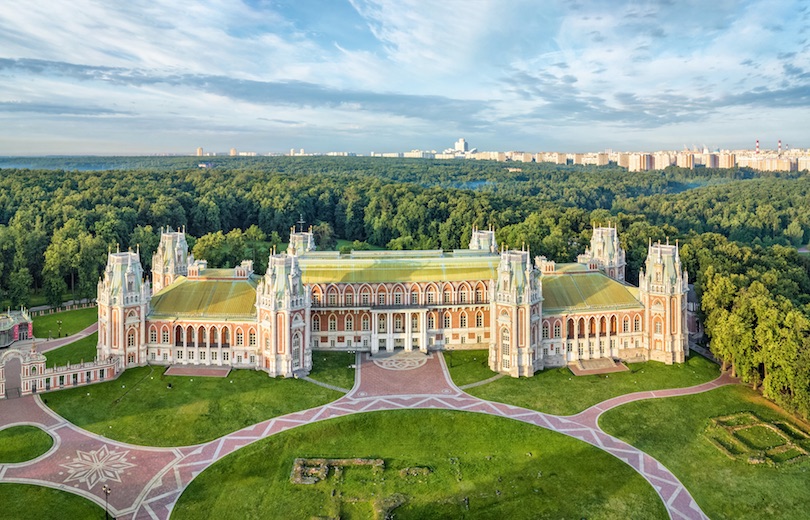
Once the summer residence of Catherine the Great, the stunning Tsaritsyno Palace is now a museum-reserve. The architecture is magnificent and there is a lovely park surrounding it for visitors to explore.
Located in the south of Moscow, the palace was commissioned in 1775 and recent renovations mean its lavish interior looks better than ever before with its elegant halls and beautiful staircases.
The exhibits on display look at the life of the empress as well as the history of Tsaritsyno itself. The huge palace grounds are also home to some other delightful buildings with the elegant opera house and wonderful brickwork of the Small Palace being particularly impressive to gaze upon.
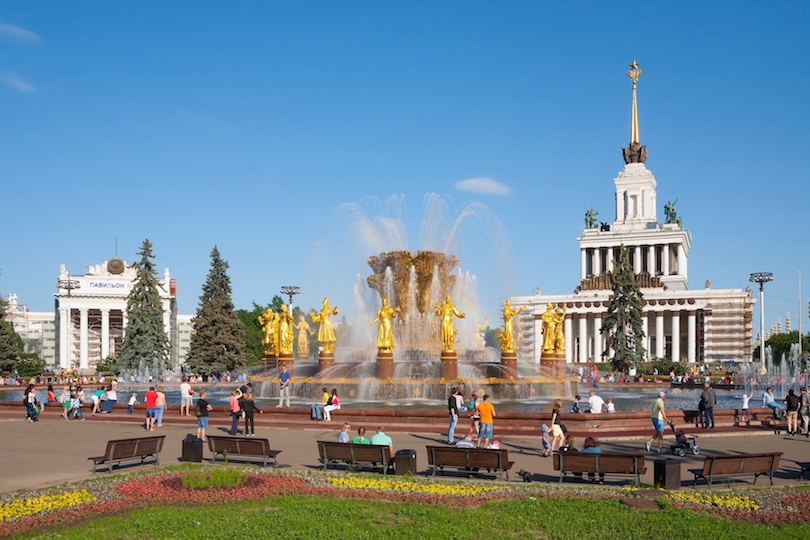
Starting out in 1935 as the ‘All-Union Agricultural Exhibition’, VDNKh has slowly morphed over the years into the fascinating open-air museum of today. Remarkably, over 400 buildings can now be found within its confines.
The huge park complex has numerous pavilions representing former Soviet republics on show, such as those of Armenia and Turkmenistan and the distinctive architecture of each of the buildings is always interesting to gaze upon. In addition to this there is the fascinating Memorial Museum of Cosmonautics which is dedicated to space exploration and the fun Moskvarium aquarium even offers you the chance to swim with dolphins.
With lots of eateries scattered about and numerous entertainment options such as horse-riding and zip-lining, there is something for everyone to enjoy; the Friendship of Nations fountain truly is wonderful.
15. Kremlin Armoury
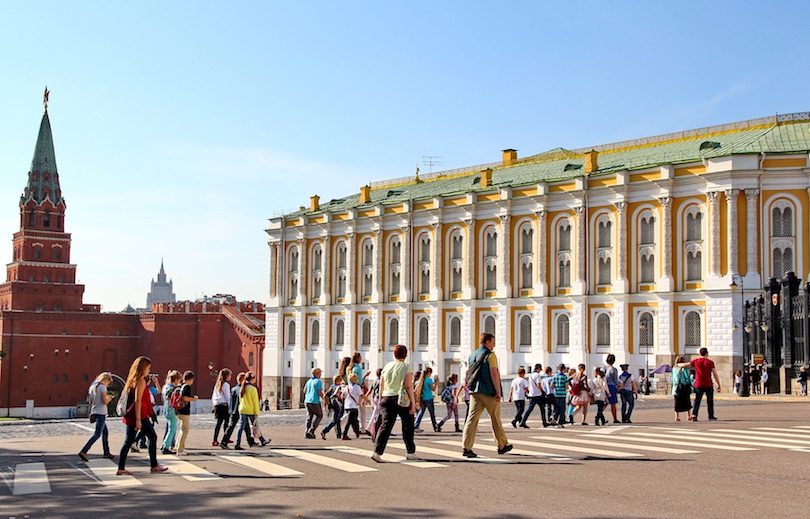
One of the oldest museums in the city, the Kremlin Armoury has a wealth of treasures; highlights include the ornate Grand Siberian Railway egg, the historic Cap of Monomakh and the stunning Imperial Crown of Russia which often has a crowd of tourists around it, jostling to take a photo.
Once the royal armory, there are loads of fascinating objects on display. Perusing the many sabers, jewelry, armor and more is as interesting as it is educational and entertaining and the swords are so finely crafted that you’ll almost wish you could pick up one and wield if yourself.
Established in 1851, the museum is situated in the Moscow Kremlin.
14. GUM Department Store

Standing for ‘Main Universal Store’ in Russian, GUM is stunning. Its wonderful skylights and beautiful facades mean it doesn’t look out of place alongside its illustrious neighbors on Red Square.
With over 200 shops, boutiques and upmarket eateries inside, it is a shopaholic’s heaven and concerned partners will be glad to find more affordable options alongside luxury brands such as Dior and Prada.
The main department store in the city, GUM was opened in 1893. The stunning architecture makes it well worth a visit even if shopping isn’t your thing.
13. Moscow Metro
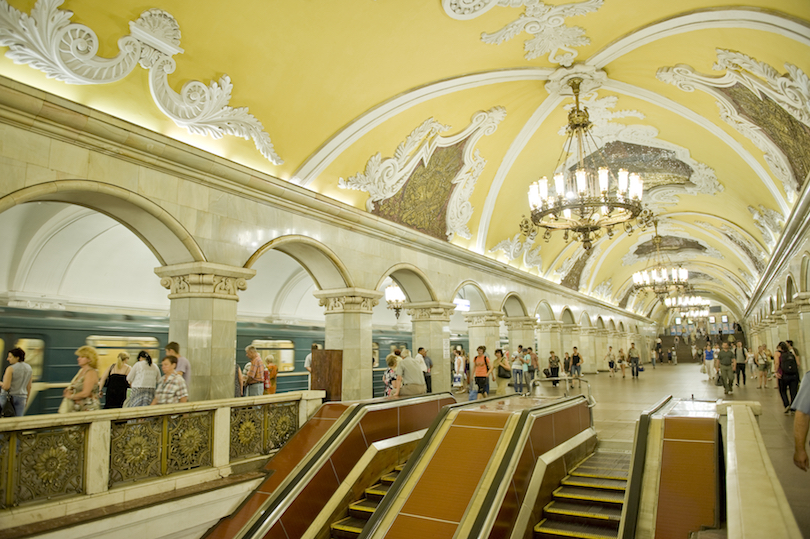
It’s not often that public transport looks like a work of art. So many stops on the Moscow Metro will astound visitors with their beauty and elegance.
Decked in marble and with frescoes covering the walls, the stations are amazing to gaze upon and are part of one of the longest metro systems in the world, with the first stations opened in 1935.
Using the metro is the quickest and easiest way to get around Moscow and braving the crowds of commuters is well worth it for the beauty all around you.
12. Arbat Street
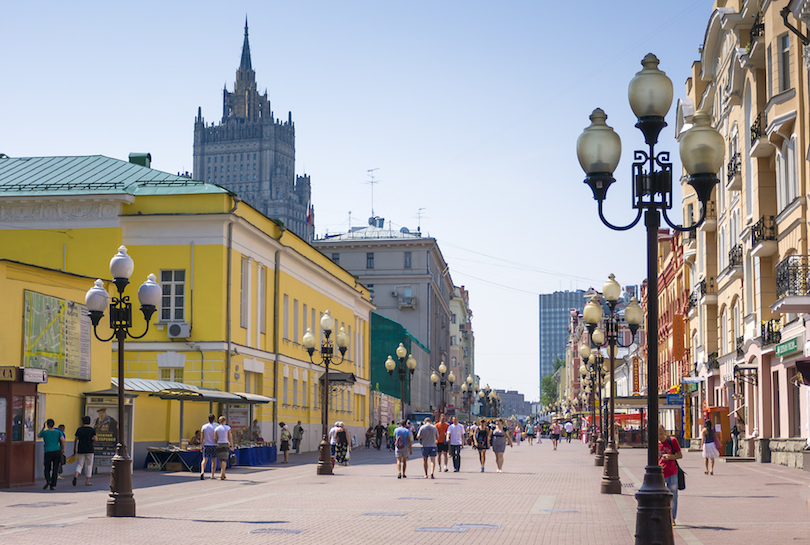
An elegant yet lively street, Arbat is full of impressive architecture and was once a popular place to live for aristocrats, artists, and academics.
A historic place, it is down Arbat Street that Napoleon’s troops are said to have headed on their way to capture the Kremlin.
Nowadays, there are many cafes, restaurants, and shops, as well as various monuments and statues to former residents such as Alexander Pushkin who was reputed to be a lover of the Russian Empress due to his massive influence in court.
11. Novodevichy Convent
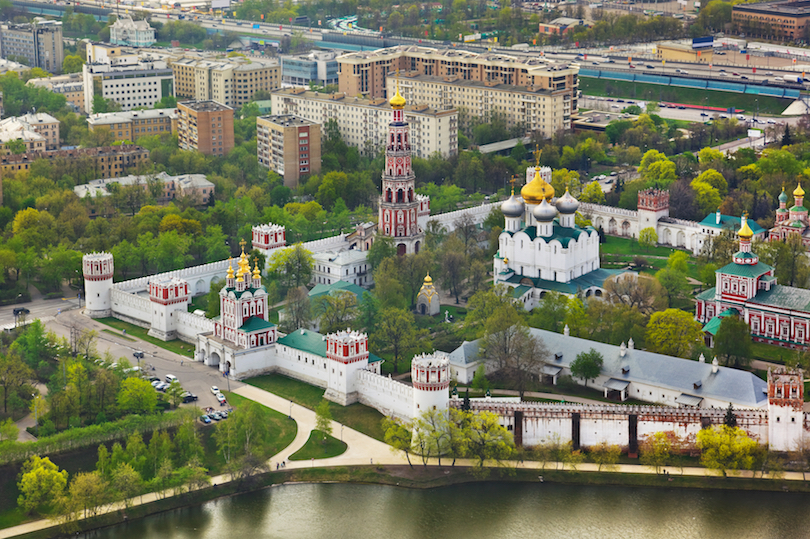
Drenched in history, the Novodevichy Convent is located in a striking building that was once a fortress. This captivating place is well worth visiting when in Moscow.
Founded in 1524, the convent houses four cathedrals; Smolensk Cathedral is the undoubted highlight due to its delightful 16th-century frescoes.
Wandering around the grounds is like stepping back in time. The Novodevichy Cemetery is where many famous leaders of the Soviet Union are buried, such as Yeltsin and Khrushchev.
10. Pushkin Museum
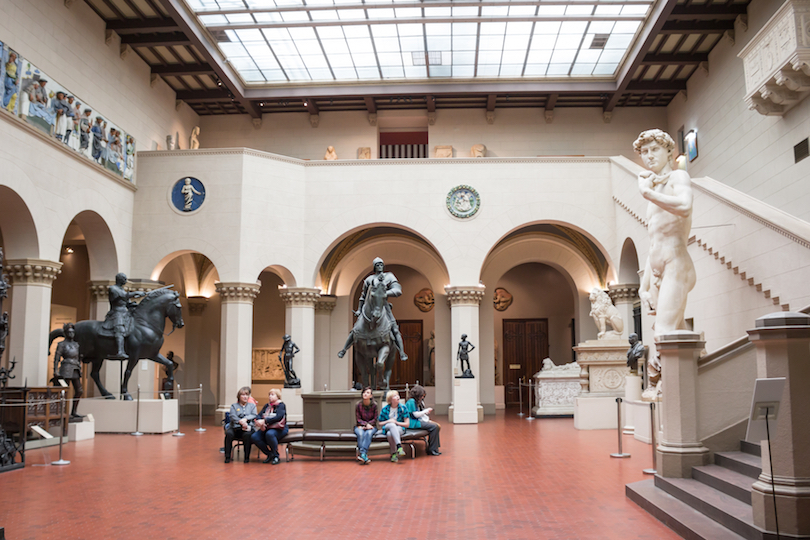
Despite its name, the Pushkin Museum of Fine Arts actually has no connection at all to the famous poet other than that it was named in his honor after his death. A delight to visit, its extensive collection focuses on European art with masterpieces by Botticelli, Rembrandt, and van Gogh all featuring.
Sculptures, graphic art, paintings and more can be found in its beautiful galleries; various sections look at themes and epochs such as the Renaissance, the Dutch Golden Age, and Byzantine art.
Among the many highlights are the clownish characters which can be found in Cezanne’s Fastnacht (Mardi Gras) and the twirling ballerinas who look so elegant in Degas’ Blue Dancers. Picasso’s Young acrobat on a Ball is also well worth checking out for its interesting use of shapes and colors.
9. Christ The Savior Cathedral
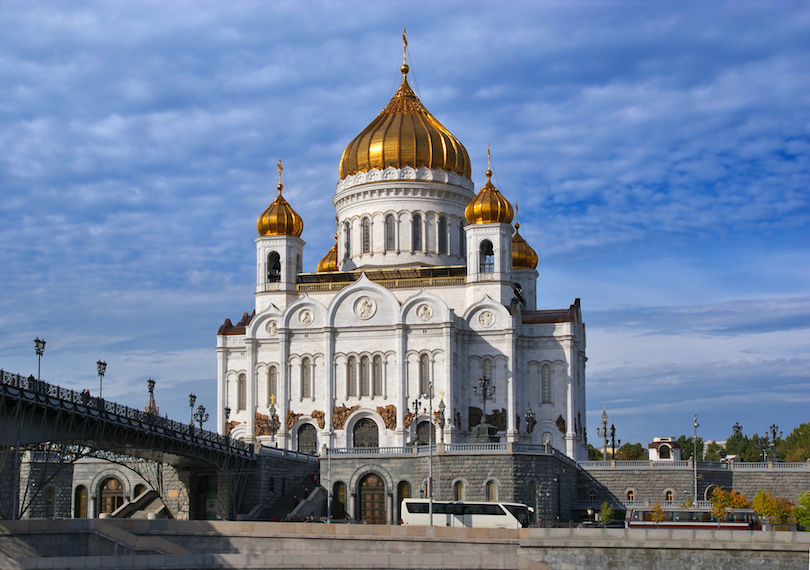
This gorgeous Russian Orthodox cathedral is located on the banks of the Moskva River, just a stone’s throw away from the Kremlin.
The church as it stands today was consecrated in 2000, as the original church that stood here was destroyed on the command of Josef Stalin in 1931 due to the anti-religious campaign.
With its delightful golden dome, spires and dazzling white facades, the Christ the Savior Cathedral is stunning. The interior is just as captivating to wander around, with its beautifully tiled floors and impressive altar.
8. Lenin Mausoleum
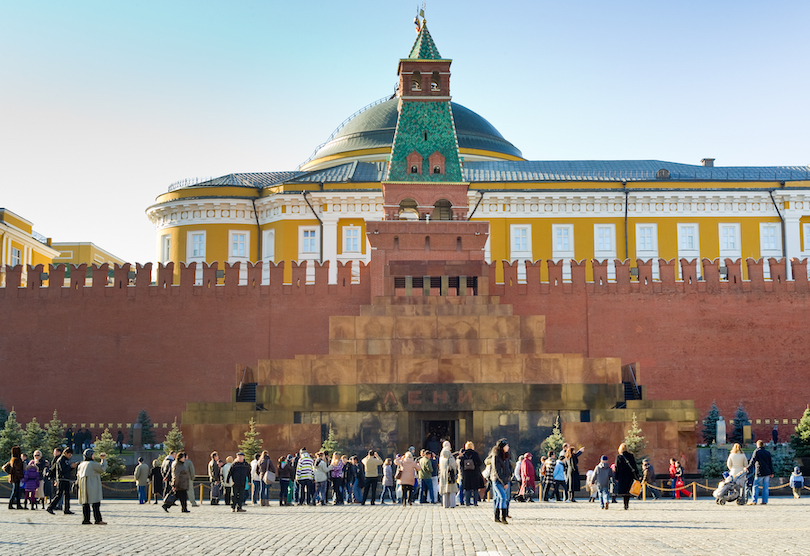
Opened to the public in 1924, Lenin’s Mausoleum is one of the most popular tourist attractions in Moscow. The red granite structure is located at the heart of the city in Red Square.
Lenin’s embalmed body lies in a glass sarcophagus; it is a somewhat eerie experience walking past the former leader of the Soviet Union but is well worth doing as you understandably can’t do it anywhere else in the world.
After visiting the mausoleum, head to the Kremlin wall right next to it for more graves of important communist figures such as Stalin and Brezhnev.
7. Tretyakov Gallery
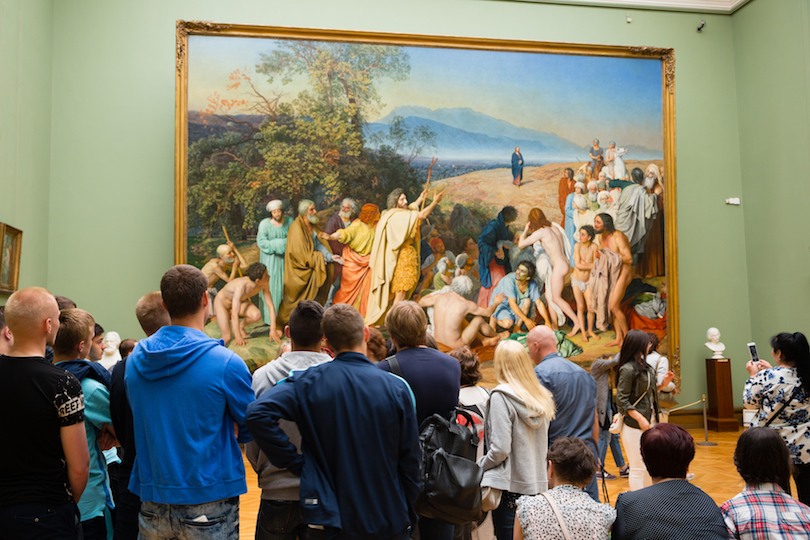
Home to the most extensive and impressive collection of Russian fine art in the world, the State Tretyakov Gallery is definitely worth visiting when in Moscow for the wealth of amazing art pieces that it has on display.
Having started out as the private art collection of the Tretyakov brothers, there are now over 130,000 exhibits. Highlights include the iconic Theotokos of Vladimir which you will almost certainly recognise despite probably not knowing the name and Rublev’s Trinity which is considered to be one of highest achievements in Russian art.
An absolute must for art lovers, the State Tretyakov Gallery will delight visitors with all that is has to offer.
6. Kolomenskoye
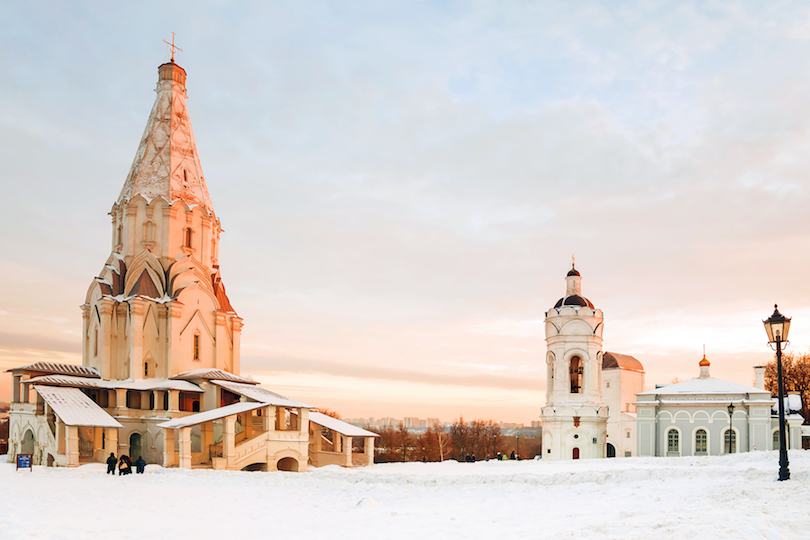
Once a royal estate, Kolomenskoye is now a museum-reserve and lies a few kilometers outside of the city center. A captivating place to visit, there is a plethora of history on show and the site overlooks the Moskva River.
Consisting of four historical sites, there are extensive gardens for visitors to explore, as well as loads of interesting old buildings, the former village of Kolomenskoye itself and the impressive Palace of the Tsar Alexey Mikhailovich – once considered the Eighth Wonder of the World by contemporaries.
Among the many stunning sights, it is the brilliantly white Ascension Church that is the undoubted highlight – dating back to 1532.
5. Gorky Park
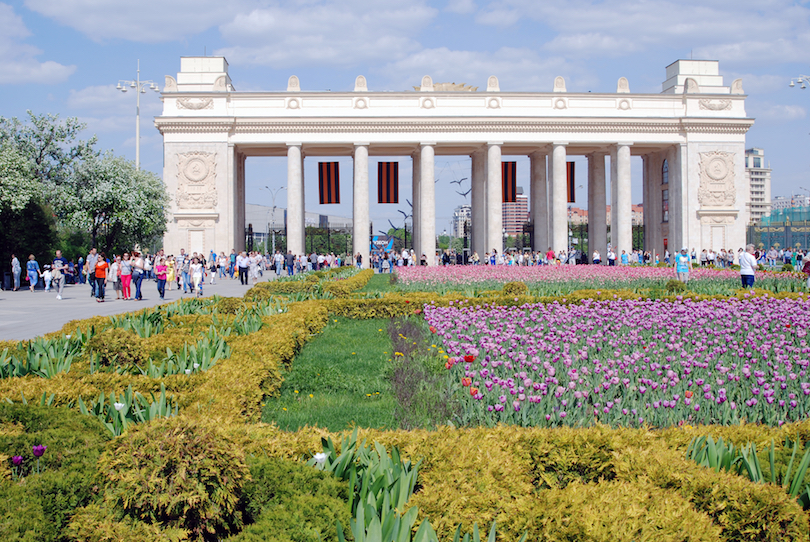
Lying alongside the Moskva River, the huge Gorky Park is a lovely place to visit. Its extensive gardens are home to numerous cultural institutions and visitors should definitely check out the Garage Museum of Contemporary Art and while the eclectic exhibits may not always feature such incredible sights as a balloon-covered rider on a zebra; they certainly always succeed in pushing back the boundaries of art.
Pop-up exhibitions and festivals can be found from time to time in the park itself and there is an open-air theatre and numerous eateries alongside a plethora of leisure activities.
Whether it’s cycling, table tennis or yoga that you are after or beach volleyball and rowing, Gorky Park certainly has it. In winter, there is a huge ice rink for visitors to enjoy.
4. Bolshoi Theatre
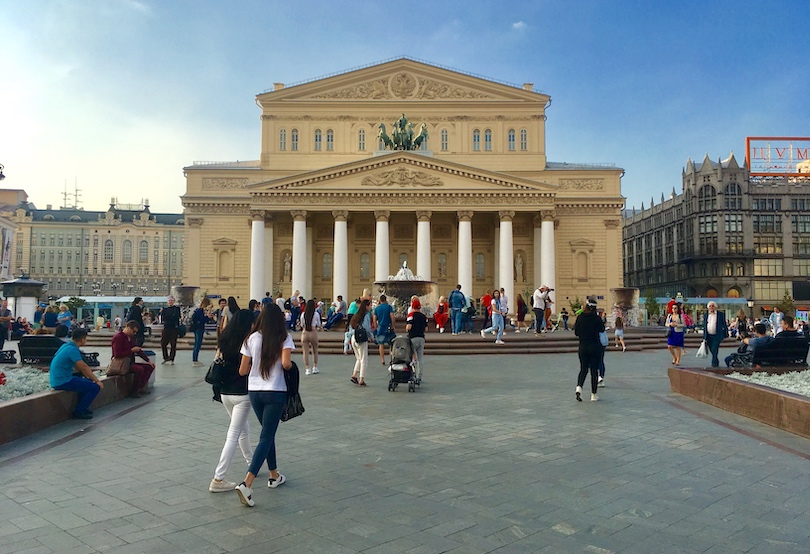
The Bolshoi Theatre is the main theater in the country. The amazing opera and ballet performances it has put on over the centuries go a long way in explaining Russia’s rich history of performing arts.
While the Bolshoi Ballet Company was established in 1776, the theater itself was opened in 1825. The glittering, six-tier auditorium is lavishly and decadently decorated; it is a fitting setting for the world-class performances that take place on its stage.
Spending a night watching a performance of such classics as The Nutcracker or Swan Lake at the Bolshoi Theatre is sure to be a memorable experience and the beauty all around you only adds to the sense of occasion.
3. Moscow Kremlin
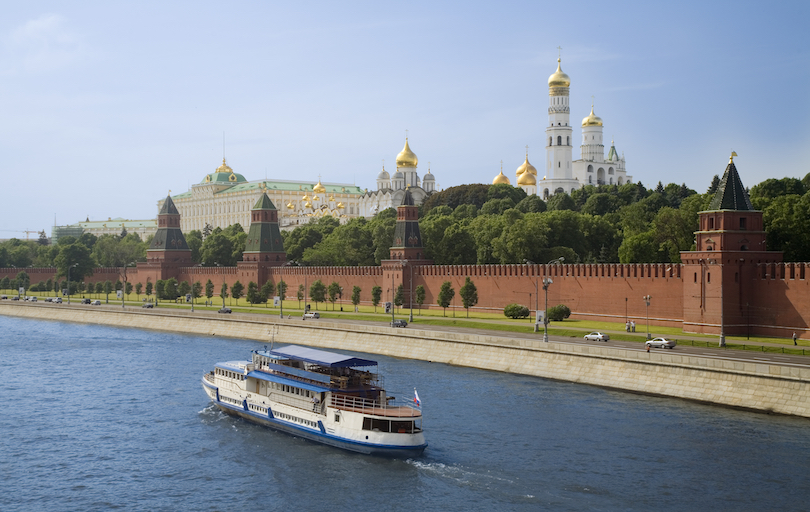
This famously fortified complex is remarkably home to five palaces and four cathedrals and is the historic, political and spiritual center of the city. The Kremlin serves as the residence for the country’s president. It has been used as a fort, and this fact is made clear by its sheer size. The Kremlin’s outer walls were built in the late 1400s.
Under Ivan III, better known as Ivan the Great, the Kremlin became the center of a unified Russian state, and was extensively remodeled. Three of the Kremlin’s cathedrals date to his reign that lasted from 1462-1505. The Deposition Church and the Palace of Facets were also constructed during this time. The Ivan the Great Bell Tower was built in 1508. It is the tallest tower at the Kremlin with a height of 266 feet (81 meters).
Joseph Stalin removed many of the relics from the tsarist regimes. However, the Tsar Bell, the world’s largest bell, and the Tsar Cannon, the largest bombard by caliber in the world, are among the remaining items from that era. The Kremlin Armory is one of Moscow’s oldest museums as it was established more than 200 years ago. Its diamond collection is impressive.
The Kremlin’s gardens – Taynitsky, Grand Kremlin Public and Alexander – are beautiful. The Kremlin has also served as the religious center of the country, and there is a tremendous number of preserved churches and cathedrals here. The collections contained within the museums include more than 60,000 historical, cultural and artistic monuments. Those who enjoy the performing arts will want to consider attending a ballet or concert at the State Kremlin Palace. Completed in 1961, it is the only modern building in the Kremlin.
2. Red Square
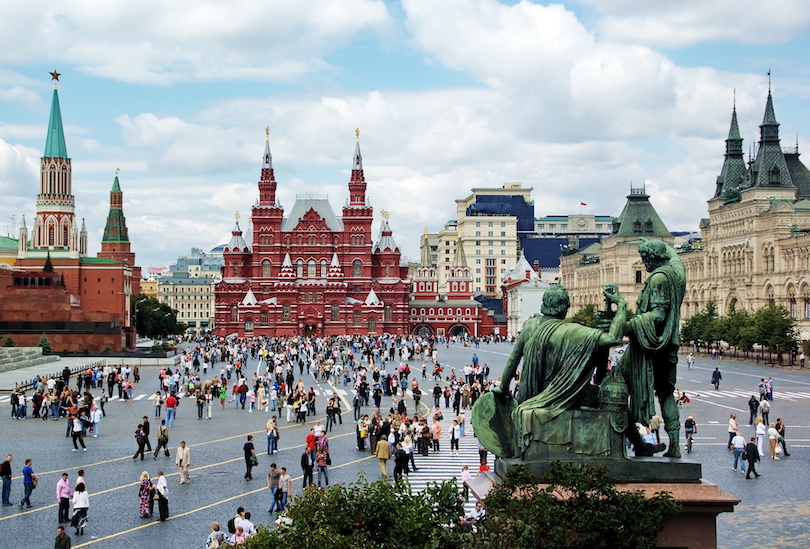
Lying at the heart of Moscow, Red Square is the most important and impressive square in the city. It is one of the most popular tourist attractions due to its wealth of historical sights and cultural landmarks.
Drenched in history, the huge square is home to incredible sights such as the Kremlin, St. Basil’s Cathedral and Lenin’s Mausoleum, among others. Consequently, it is not to be missed when in Moscow as it really is home to the city’s most stunning monuments.
It is here that many important moments in Russian history took place; the former marketplace has hosted everything from Tsar’s coronations and public ceremonies to rock concerts and Soviet military parades. Wandering around the massive square is a humbling experience and undoubtedly one of the highlights the city has to offer.
1. Saint Basil’s Cathedral
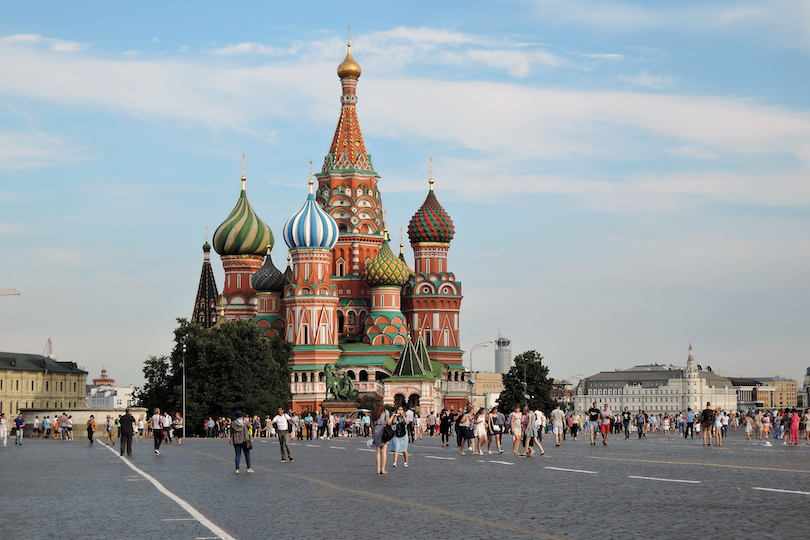
Located in the impressive Red Square, St. Basil’s Cathedral is gorgeous; its delightful spires appear as if out of a fairytale. The most recognizable building in the country, the cathedral is very much a symbol of Russia. No visit to Moscow is complete without having taken in its unique and distinctive features.
Ivan the Terrible ordered the cathedral’s construction in the mid-16th century, and legend holds that Ivan put out the architect’s eyes so that he would be unable to build another cathedral more glorious than St. Basil’s. Designed to resemble the shape of a bonfire in full flame, the architecture is not only unique to the period in which it was built but to any subsequent period. For various reasons, both Napoleon and Stalin wanted to destroy the cathedral but fortunately did not succeed.
Known for its various colors, shapes and geometric patterns, St. Basil’s Cathedral houses nine different chapels that are all connected by a winding labyrinth of corridors and stairways. On the lower floor, St. Basil’s Chapel contains a silver casket bearing the body of St. Basil the Blessed.
Throughout the cathedral are many beautiful murals, frescoes, wooden icons and other art works and artifacts. Outside the cathedral is a lovely garden with the bronze Monument to Minin and Pozharsky, who rallied an all-volunteer Russian army against Polish invaders during a period of the late 16th century known as the Times of Troubles.
Share this post:
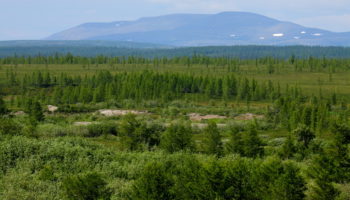
9 Most Beautiful Regions in Russia
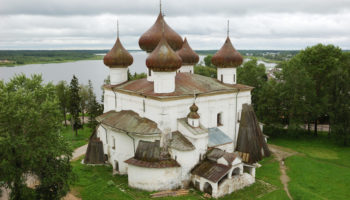
14 Most Scenic Small Towns In Russia

10 Most Amazing Destinations in Eastern Russia
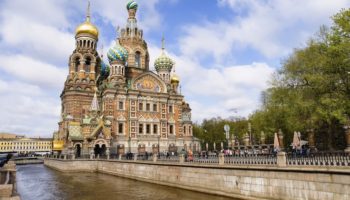
15 Top Tourist Attractions in Saint Petersburg, Russia
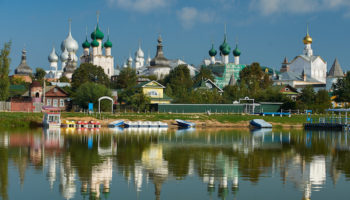
10 Best Places to Visit in Russia
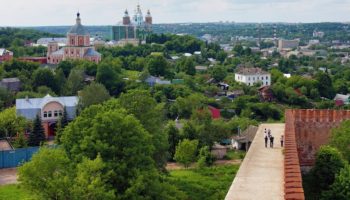
15 Best Cities to Visit in Russia
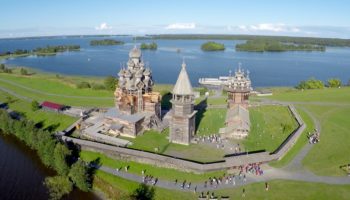
10 Top Tourist Attractions in Russia
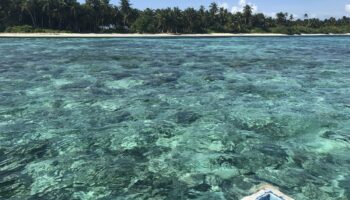
12 Best Things to Do in the Maldives
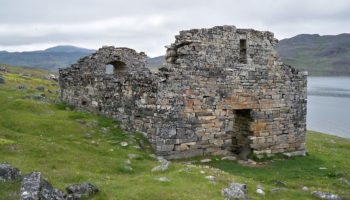
Discover the Hvalsey Church in Greenland

8 Most Beautiful Society Islands

IMAGES
VIDEO
COMMENTS
To discover the best places to visit and things to do, use this handy list of the top tourist attractions in Brazil. On This Page: Cristo Redentor and Corcovado, Rio de Janeiro. Sugar Loaf, Rio de Janeiro. Iguaçu Falls. Copacabana, Rio de Janeiro. Amazon Rainforests.
27. Porto de Galinhas. Porto de Galinhas, or "Port of Chickens," on the south coast of Pernambuco in the district of Ipojuca, is a beach town home to some of the most famous beaches in Brazil. A prominent tourist spot, Porto de Galinhas is breathtaking, with natural crystalline-clear pools, thriving reefs, and white-sugared beaches.
7. Fernando de Noronha. An archipelago of islands some 320km (200 miles) off the northeast coast, Fernando de Noronha is high on many honeymoon wishlists. Of Noronha's 21 islands, only the largest one is accessible to tourists - and even then, its boundaries lie safely within Brazil's largest marine park.
5. Florianopolis. The capital of Santa Catarina state, Florianopolis lies in the south of Brazil, with half of the city set on the mainland and the other on a beautiful island. Due to its scenic setting, it is a very popular tourist destination and is widely considered one of the best places to live in the country.
Best tourist attractions in Brazil. These are the most famous attractions in Brazil spread across the 26 states. Copacabana, Rio de Janeiro. A buzzing city in the background separated from the clear beach by a black and white promenade decorated by a wave motif: Copacabana Beach is one of those places in Brazil that you have to experience to understand.
Things to Do in Brazil, South America: See Tripadvisor's 17,866,691 traveler reviews and photos of Brazil tourist attractions. Find what to do today or anytime in September. ... These rankings are informed by Tripadvisor data—we consider traveler reviews, ratings, number of page views, and user location. 2024. 1. Corcovado - Christ the ...
Best Places to Visit in Brazil. 1. Rio de Janeiro. The cable car up to Sugarloaf Mountain! The world-famous Christ the Redeemer statue! The obvious first entry on this list of the best places to visit in Brazil is Rio de Janeiro! Easily one of the most famous cities in the world.
2. Spot whales in Praia do Rosa. Once a sleepy fishing hamlet, Praia do Rosa is now a top surf destination, with charming guest houses and hotels tucked into the hillside above a bay. In the winter months (June to November), surfers are joined by another type of visitor playing in the waves: southern right whale calves.
1. Christ the Redeemer (Cristo Redentor) Nico Kaiser, CC BY 2.0, via Wikimedia Commons. Christ the Redeemer, which stands 2,300 feet above Rio de Janeiro, is one of Brazil's most recognizable landmarks. The 130-foot-tall statue, which was built between 1922 and 1931 has become a globally recognized symbol of Rio.
The 10 most incredible places to visit in Brazil. Mar 1, 2024 • 9 min read. Don't get overwhelmed by the scale of Brazil - get organized! Here are our top 10 favorite places to visit in this South American sensation. Activities. 9 of the best things to do in Brazil with kids .
2. Salvador. Located in the state of Bahia, Salvador has a phenomenal energy that's notable even for Brazil. Most known for being Portugal's New World capital, it maintains a great deal of its colonial architecture and you'll find the historic centre of the town in the Pelourinho neighbourhood.
Pelourinho in Salvador, Bahia. Nestled in the country's first capital, Pelourinho is the historic center of Salvador, one of the cheapest places to visit in Brazil. The area is sprinkled with colorful colonial houses divided by cobblestone streets and unified by Brazilian history—from slavery to freedom.
Location: Mainly in western Brazil's Mato Grosso do Sul state. 10. Curitiba. Last on our list for the top destinations in Brazil is Curitiba. Curitiba is the capital of the Brazilian state of Paraná and is an inland city of tall buildings such as the Panoramic Tower, with an observatory on top. Travel to the top for a picturesque view!
The work of the Italian immigrants over the last 150 years has culminated in Vale dos Vinhedos getting a reputation for outstanding vintages, particularly Cabernet Sauvignon and Merlot. It was even recently named one of the world's ten best wine travel destinations recently, joining the likes of Queenstown in New Zealand or Champagne in France.
As far as travel destinations go, Brazil is blessed. The country is graced with diverse landscapes from the cascading torrents of Iguaçu Falls and the mesmerizing, lagoon-pocked sand dunes of Lençóis Maranhenses to world-famous, sugar-fine beaches. But it's more than just a look-and-see destination. Brazil intrigues with its Indigenous ...
Rio de Janeiro Carnaval is one of Brazil's top tourist attractions − the mother, the mecca, the king of all carnivals. Every year, just before the beginning of Lent, Rio de Janeiro transforms into the biggest party on the planet, a party that is attended by five million people from all around the world. Few shows match Carnaval's ...
Brazil Places to Visit. The Pantanal, The Amazon Rainforest, Manaus, Paraty, Sao Paulo Museum of Art, Bonito, Olinda, Chapada dos Veadeiros National Park, Lençóis National Park, Arraial do Cabo, Florian?polis, Mount Roraima, Chapada Diamantina National Park. Covering up half of the South American continent, one will find a plethora of places ...
Corcovado, Sugarloaf, Copacabana, and Ipanema are the top places to start but there are many must-see places. When you're done touring the sites, hit the beach, and then head out in the evening for first-class dining, to see a football game, or to enjoy the nightlife. Discover the best this city offers with our list of the top attractions in ...
Parque Nacional da Serra da Capivara. Piauí. One of Brazil's most important national parks, this 1300-sq-km reserve contains more than 40,000 rock paintings among spectacular panoramas of immense….
Tourism is a growing sector and key to the economy of several regions of Brazil. The country had 6.589 million visitors in 2018, ranking in terms of the international tourist arrivals as the second main destination in South America after Argentina and third in Latin America after Mexico and Argentina. [2] Revenues from international tourists ...
Brazil is a very large, diverse country with varying medical resources, both private and public, throughout the country. Many private labs perform COVID-19 testing at various prices, typically between $20 and $100. PCR, serology-based antibody tests, and antigen tests are available.
Brazil is famous for not selling itself as a tourism ... Just ask urban Brazilians from the south, who love places such as Natal, São Luís, Salvador and Recife for their long beaches, warm seas ...
Embassy of Brazil in Moscow, Russia. Embassy of Brazil in Moscow, Russia, located at Bol'shaya Nikitskaya Ulitsa, 54. View a location map, get driving directions to the Embassy of Brazil, or find information about the address, phone, office hours, official website, Facebook page, consular services, visa list, and head of mission (HOM).
Hi Yulia. My name is Felipe, I live in Brazil and I follow you on Instagram. I found you after you wrote that post about the 18 best things to do in Moscow during World Cup. I'll travel to Russia with my parents for the World Cup. Our schedule is: 3 days - Moscow 2 days - Saint Petersburg 2 days - Sochi 2 days - Volgograd 1 more day ...
The interior is just as captivating to wander around, with its beautifully tiled floors and impressive altar. 8. Lenin Mausoleum. Opened to the public in 1924, Lenin's Mausoleum is one of the most popular tourist attractions in Moscow. The red granite structure is located at the heart of the city in Red Square.
The spot is also visually and emotionally compelling, presenting a different side to Ireland than the brightly colored green rolling hills often seen in tourism advertising for the country.